corporate social responsibility
description: form of corporate self-regulation integrated into a business model
195 results
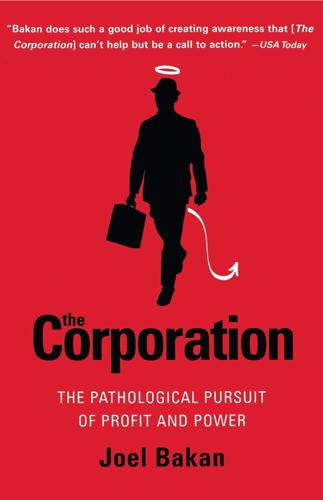
The Corporation: The Pathological Pursuit of Profit and Power
by
Joel Bakan
Published 1 Jan 2003
"We believe," said the report, "that corporate leadership should set the example for community service."58 Unfortunately, this paragon of corporate social responsibility, Enron, was unable to continue its good works after it collapsed under the weight of its executives' greed, hubris, and criminality. Enron's story shows just how wide a gap can exist between a company's cleverly crafted do-gooder image and its actual operations and suggests, at a minimum, that skepticism about corporate social responsibility is well warranted. There is, however, a larger lesson to be drawn from Enron's demise than the importance of being skeptical about corporate social responsibility. Though the company is now notorious for its arrogance and ethically challenged executives, the underlying reasons for its collapse can be traced to characteristics common to all corporations : obsession with profits and share prices, greed, lack of concern for others, and a penchant for breaking legal rules.
…
"Goodyear has all about her the human quality," he said, "and it has been to this human quality fully as much as to her business methods, that Goodyear owes her meteoric rise in the ranks of American Industry."" Corporate social responsibility blossomed again during the 1930s as corporations suffered from adverse public opinion. Many people believed at the time that corporate greed and mismanagement had caused the Great Depression. They shared Justice Louis Brandeis's view, stated in a 1933 Supreme Court judgment, that corporations were "Frankenstein monsters" capable of doing evil." In response, business leaders embraced corporate social responsibility. It was the best strategy, they believed, to restore people's faith in corporations and reverse their growing fascination with big government.
…
But the two groups had something in common: they both believed the corporation had become a dangerous mix of power and unaccountability. Corporate social responsibility is offered today as an answer to such concerns. Now more than just a marketing strategy, though it is certainly that, it presents corporations as responsible and accountable to society and thus purports to lend legitimacy to their new role as society's rulers." Page 28 ~> w Business as Usual Business leaders today say their companies care about more than profit and loss, that they feel responsible to society as a whole, not just to their shareholders. Corporate social responsibility is their new creed, a self-conscious corrective to earlier greed-inspired visions of the corporation.
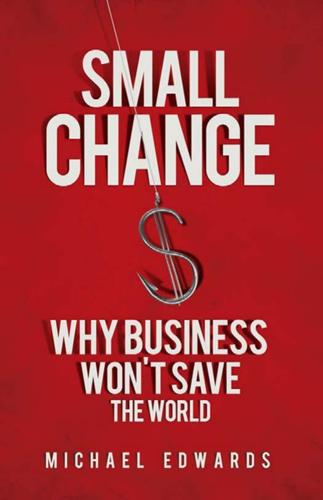
Small Change: Why Business Won't Save the World
by
Michael Edwards
Published 4 Jan 2010
From this quick tour of terms and definitions, it’s obvious that each school of thought approaches the issue of social impact in a slightly different way. Pure commercial activity and corporate social responsibility of the window-dressing variety have little interest in deep social transformation. Pure civil society activity and most community organizers have little interest in becoming corporations. But in the middle, there are lots of ways of leveraging some social impact by working with the market in some shape or form. In terms of their potential impact on social transformation, total corporate social responsibility, commons-based production, and radical interpretations of what it means to be a social entrepreneur are the most interesting approaches.
…
The ways in which businesses approach these tasks have enormous implications for society at large, but in the past, the social and environmental impacts of core business decisions were seen as byproducts — not conscious goals — of companies, which aimed to make a decent profit and build shareholder value. During the 1990s, this assumption began to be questioned by the pioneers of corporate social responsibility, 16 the good, the bad, and the ugly 17 and their thinking laid the groundwork for the appearance of philanthrocapitalism ten years later. By making their social and environmental objectives more explicit, so the theory goes, businesses can increase their positive impact and scale it up through market forces, far beyond the usual nonprofit project or government-funded program.
…
And, arguing from the other side of the equation, by operating in the market and adopting business thinking, nonprofits can raise the revenue they need to expand and sustain their work and make it more effective. These ideas have given rise to a whole new vocabulary that tries to capture what is different about these interactions, including terms like social entrepreneur, social enterprise, blended value, venture philanthropy, corporate social responsibility, the triple bottom line, social investment, and social innovation. There are no universally accepted definitions of any of these new terms. In fact, Pace University’s Jeff Trexler, one of the most interesting commentators in this debate, thinks social entrepreneurship is “as open to interpretation as a Rorschach blot,” taking whatever shape and meaning are in the eye of the beholder.1 However, on one point the philanthrocapitalists are agreed: Business and nonprofit are crude labels that no longer describe the huge variety of activities that organizations undertake in circumstances where social and economic activities are increasingly intertwined, so it is not possible to criticize them en bloc for doing one thing or another.
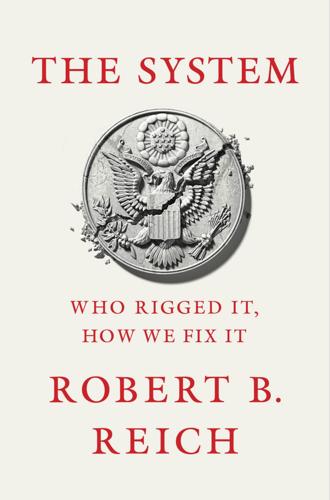
The System: Who Rigged It, How We Fix It
by
Robert B. Reich
Published 24 Mar 2020
Most of this is in earnest, much is sincere, and some of it has had a positive impact. But all of it has occurred outside of the democratic process. None of it has reallocated power in the system or changed the rules of the game. To view corporate social responsibility as a new form of capitalism diverts attention from the far more difficult and important task of strengthening democracy and thwarting oligarchy. In fact, the upsurge of interest in corporate social responsibility is directly related to decreasing confidence in democracy, precisely because big money has overwhelmed it. “Government is failing to provide leadership on environmental concerns, and industry has grown more willing to address them,” says Jonathan Lash, president of the World Resources Institute.
…
A market cannot exist without a government to organize and enforce it. The important question is whom the market has been organized to serve. Forget the standard economic goals of higher growth and greater efficiency. The issue is who benefits from more growth and efficiency. Don’t be dazzled by “corporate social responsibility.” Most of it is public relations. Corporations won’t voluntarily sacrifice shareholder returns unless laws require them to do so. Even then, be skeptical of laws unless they’re enforced and backed by big penalties. Large corporations and the super-rich ignore laws when the penalties for violating them are small relative to the gains for breaking them.
…
It refers to a government of and by a few exceedingly rich people or families who control the major institutions of society and therefore have power over other people’s lives. Oligarchs may try to hide their power behind those institutions, or justify their power with platitudes about the public good, or excuse their power through philanthropy and “corporate social responsibility.” But no one should be fooled. Oligarchs wield power for their own benefit. Even a system that calls itself a democracy can become an oligarchy if power becomes concentrated in the hands of a corporate and financial elite. Their power and wealth increase over time as they make laws that favor themselves, manipulate financial markets to their advantage, and create or exploit economic monopolies that put even more wealth into their own pockets.

Masters of Management: How the Business Gurus and Their Ideas Have Changed the World—for Better and for Worse
by
Adrian Wooldridge
Published 29 Nov 2011
W., 41 Core competencies, 158–160, 259–260 “Corporate anorexia,” xiii, 31 Corporate Executive Board, 359 Corporate Leadership Council, 349, 350 Corporate social responsibility (CSR), 23, 31–48 Corporations corporate-bashing films, 35 culture of, 161–164 multicultural, 165–166 Corus, 286 CouchSurfing, 156 Covey, Stephen, 111–112, 391–393, 410 Craigslist, 184 Crazy Times (Peters), 102 Creating Minds (Gardner), 132 Creative Class Struggle, 131 Creative Technology, 182 Cristal, 272 CRM. See Customer relationship management Crook, Clive, 33 Crowdsourcing, 240, 242 CSC index, 29 CSR. See Corporate social responsibility Culture corporate, 161–164 entrepreneurial, 176 Customer relationship management (CRM), 17 CVS, 264 Dachangjiang, 213 Dan Brown and Co., 5 Dangdang, 184 Dangerous Company: The Consulting Powerhouses and the Businesses They Save and Ruin (O’Shea and Madigan), xiii Das, Gurcharan, 182–183 Das Kapital (Marx), 91 Davenport, Thomas, 112 Davies, Howard, Sir, 316 “Davos men,” 386 Dean Light and Co., 1–2 De Borchgrave, Isabelle, 376 De Jager, Jan Kees, 53 Del Blanco, Roberto Alvarez, 395 Dell, Michael, 195, 197 Dell Computers, 224 Deloitte, 54, 64, 323, 354, 380 De Mestral, George, 247 Deming, W.
…
There has been soul searching because of this, and a desire to get rid of some of the oversell and hype. But management theory remains a hodgepodge. There are still gems, but there is also a lot of mud—most obviously the pseudoscientific gobbledygook, but also the faddism. Adrian has a merry time skewering the industry that has grown up to sell “corporate social responsibility” in the same way that we once looked at reengineering. Even the best gurus have a weakness for overselling themselves. The worst are often little better than hucksters. Management theory remains a porous industry in which serious thinkers rub shoulder to shoulder with products of the university of life.
…
I still think the answer is the same one we put forward fifteen years ago. Business people are desperate for competitive insight (and so, increasingly, are bureaucrats). They need answers, help, anything. And they also know two things: that some of this stuff works, and that ignoring it completely can be fatal. Much as we might want to mock the fad for corporate social responsibility and recoil at a lot of the worthy tripe produced under that banner, companies that turned their back on issues like the environment and the employment habits of their suppliers have often been trounced by events. And even if business people have no need to apologize for what they are doing, they can still learn from what social entrepreneurs are up to.
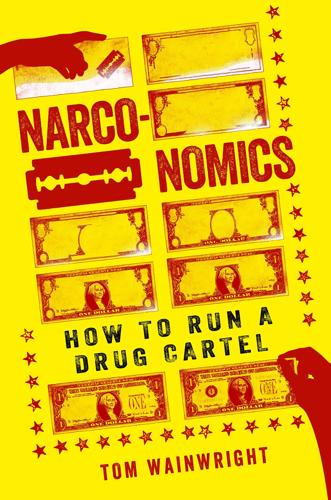
Narconomics: How to Run a Drug Cartel
by
Tom Wainwright
Published 23 Feb 2016
—“HOW TO LIE WITH STATISTICS,” DARRELL HUFF Contents INTRODUCTION Cartel Incorporated CHAPTER 1 Cocaine’s Supply Chain: The Cockroach Effect and the 30,000 Percent Markup CHAPTER 2 Competition vs. Collusion: Why Merger Is Sometimes Better Than Murder CHAPTER 3 The People Problems of a Drug Cartel: When James Bond Meets Mr. Bean CHAPTER 4 PR and the Mad Men of Sinaloa: Why Cartels Care About Corporate Social Responsibility CHAPTER 5 Offshoring: The Perks of Doing Business on the Mosquito Coast CHAPTER 6 The Promise and Perils of Franchising: How the Mob Has Borrowed from McDonald’s CHAPTER 7 Innovating Ahead of the Law: Research and Development in the “Legal Highs” Industry CHAPTER 8 Ordering a Line Online: How Internet Shopping Has Improved Drug Dealers’ Customer Service CHAPTER 9 Diversifying into New Markets: From Drug Smuggling to People Smuggling CHAPTER 10 Coming Full Circle: How Legalization Threatens the Drug Lords CONCLUSION Why Economists Make the Best Police Officers Acknowledgments Notes Index Photographs appear following p. 124.
…
Time and again, the most ruthless outlaws described to me the same mundane problems that blight the lives of other entrepreneurs: managing personnel, navigating government regulations, finding reliable suppliers, and dealing with competitors. Their clients have the same demands as other consumers, too. Like customers of any other industry, they seek out reviews of new products, increasingly prefer to shop online, and even demand a certain level of “corporate social responsibility” from their suppliers. When I found my way into the hidden “Dark Web” of the Internet, where drugs and weapons are anonymously bought with Bitcoins, I dealt with a trader of crystal-meth pipes who was as attentive as any Amazon representative. (Actually, I take it back. He was far more helpful.)
…
If prisons in the Dominican Republic—and other places—can tighten that tap, gangs will have to behave more like Pete the patient Dutch dealer, anxious to hang on to what contacts they have, and more likely to resolve their problems peacefully. Chapter 4 PR AND THE MAD MEN OF SINALOA Why Cartels Care About Corporate Social Responsibility There is a carnival atmosphere in Culiacán, the capital city of Sinaloa, a drug-war-plagued Mexican state. Men, women, and children fill the streets, marching and chanting as trumpets and trombones play in the background. It is February 2014, and Mexico has just seen the news that many thought would never happen: Joaquín Guzmán, the leader of the Sinaloa cartel and one of the most wanted men in the world, is finally behind bars.
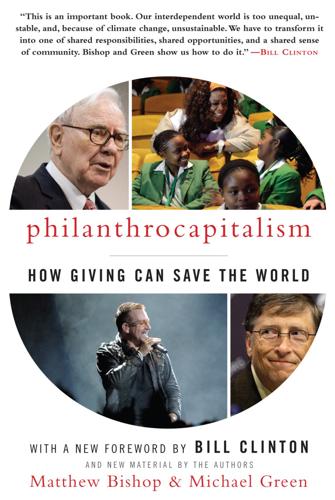
Philanthrocapitalism
by
Matthew Bishop
,
Michael Green
and
Bill Clinton
Published 29 Sep 2008
However, the need to make a profit will constrain the ways in which they can do so in ways that their nonprofit-driven partners in any cause need to understand, or risk disappointment. To antibusiness activists, corporate philanthropy and corporate social responsibility are superficial at best, an attempt to disguise the ugly underlying reality of big business today. In his 2007 book, Supercapitalism, Robert B. Reich, a professor at the University of California, Berkeley (and labor secretary in Bill Clinton’s cabinet), writes that corporate social responsibility is “as meaningful as cotton candy. The more you try to bite into it the faster it dissolves.” It is not that company bosses are evil, or even less ethical than everyone else, says Reich, but in today’s supercompetitive globalized capitalism few firms can afford to be socially responsible, at least not to any significant extent: “Corporations were never set up to be charitable institutions and are less able to operate in that sphere now,” he says, pointing out that the sums spent by business on “doing good” are dwarfed by what firms spend lobbying politicians to promote their narrow interests, often against the public interest.
…
However, the U.N. is considering introducing clearer guidelines on what behavior is acceptable by firms, especially in countries with questionable records on human rights. In 2007, a split opened up over these guidelines between NGOs that wanted to continue a constructive engagement with big business and those that preferred to “name and shame.” CORPORATE SOCIAL RESPONSIBILITY GOES GLOBAL It is tempting to see the global boom in corporate social responsibility (CSR) as yet another sign of multinationals exporting business practices from the rich world to the poor one. In China, for example, foreign companies have been enthusiastic members of the Global Business Coalition on HIV/AIDS, Tuberculosis, and Malaria, motivated perhaps by the opportunity to build good relations with the Chinese government by helping it tackle some of the country’s looming social problems.
…
Gates sees this as potentially the start of a “system innovation” in how business operates, which he calls “creative capitalism.” This is very different from traditional corporate philanthropy, which has often been ineffective: giving away small sums of money typically to generate positive publicity rather than change the world. Nor is it like old-fashioned corporate social responsibility, which is too often nothing more than a cynical exercise in public relations. Indeed, the ineffectiveness of both these traditional approaches is one reason why many people view with skepticism the notion that large companies can be a force for good. To prove the skeptics wrong, some of the world’s biggest firms are now making advancing the good of society an integral part of their business strategy.

The Coke Machine: The Dirty Truth Behind the World's Favorite Soft Drink
by
Michael Blanding
Published 14 Jun 2010
See also Campaign to Stop Killer Coke corporations accountability under Alien Tort Claims Act, 208 backlash against, 26, 48, 75 downsizing and overseas relocation, 204 as form of business, 21–22 obligation to shareholders, 134 power of, 22–23 See also CSR (corporate social responsibility) Correa, Javier, 179–80, 247, 272, 273–74, 276 Creative Artists Agency, 71, 96 CSE (Centre for Science and Environment), 241–42, 250 CSPI (Center for Science in the Public Interest), 84–85, 102, 109, 140, 141 CSR (corporate social responsibility) Coca-Cola Foundation, 134–35, 168–69, 259, 266, 272 code of conduct, 205–6 concept of, 133–34 environmental initiatives, 58, 132–33, 136, 137–39 exercise program, 99–100 “halo effect,” 58, 134, 151 philanthropic causes, 28, 134–35, 150–51, 287 plastic bottle recycling, 137–39 rainwater harvest and farmer support, 252–54, 256–59, 278 school construction, 168–69 social branding, 135–37 3 72 INDEX Daft, Douglas, 88, 103, 106, 223, 224–25 D’Arcy, William, 41, 46 D’Arcy Agency, 41, 45, 46, 94 Dasani bottled water advertising and marketing, 120–21, 125 backlash against, 119, 130–31, 139 brand image, 119 displacement of tap water, 129–30 environmental impact of plastic bottles, 128–29 market stagnation, 142 municipal water source, 120, 122, 125, 132 overseas marketing, 121–23 price of, 126–27, 130 production process, 119, 122–23 purity claims, 122, 125 safety and quality standards, 125–26 sales and profits, 119–20, 121, 125, 132 secret formula, 120 Tap Water Challenge taste test, 124, 127 Daynard, Dick, 108–9, 110, 112 DeRose, Dan, 92–93 diabetes, 80, 81, 158, 159–60 Diet Coke, 60–61, 82–83, 116 Dobbs, Sam, 24, 26–27, 29, 30, 31, 42 Domac, Jackie, 89–90, 97–98, 104, 108 Domínguez, Juan Ignacio, 159–60, 169 Dorfman, Lori, 101 Doss, Joe, 128–29 Downs, John, 96, 101–2, 105 Duggan, Keith, 35 Eisenhower, Dwight D., 50 The Energy and Resources Institute (TERI), 269, 277–78 Enrico, Roger, 59, 61 Enviga, 140 environmental issues Coca-Cola Company initiatives, 132–33, 136, 137–39 contaminated sludge as fertilizer, 230–31, 232–33, 240–41, 245–47 pesticide residue in beverage products, 241–43, 250 plastic bottles, 128–29 See also water Ever Veloza, José, 174, 186 Flores, Domingo, 193–96, 198, 272 Food and Drug Administration (FDA) approval of stevia, 142 on benzene in soft drinks, 83 bottled water labeling requirements, 132 on bromate in bottled water, 122–23 dismissal of aspartame concerns, 82 lax regulation of bottled water plants, 125 on perchlorate in spring water, 126 regulation of nutritional claims, 141 foreign markets Brazil, 148, 155 Coca-Cola Export Corporation, 147–48, 156, 164 in developing world, 142 forceful entry into, 148, 149 France, 105, 121, 149 franchise system, 147–48 growth and sales in, 66, 116 Guatemala, 148, 151–54, 283–85 political flexibility, 51–52, 57, 150–51, 154–55, 185 postwar expansion, 49–51, 147–48 soda consumption and profits, 150, 154, 155, 235 United Kingdom, 105, 121–23 See also Coca-Cola Colombia; Coca-Cola FEMSA; Coca-Cola India Fox, Vicente, 164–65, 166 France, 105, 121, 149 Gallegos, Carlos, 146–47 Galvis, Juan Carlos, 187–88, 189–90, 191, 199, 272 García, Laura Milena, 196, 198–99 García, Luis Eduardo, 194–97, 221, 272 Gardner, Stephen, 109, 141–42 Gay, Faith, 273, 281 Getman, Ross, 93 Gil, Isidro, 2–3, 176–77, 182, 187, 212 Giraldo, Luis Enrique, 174–75 Giraldo, Oscar, 175, 176, 180–81 Goizueta, Roberto, 60, 64–66, 69, 72, 135, 154 Gómez Carpio, María de la Asunción, 163 González, Álvaro, 192–97, 272 Great Depression, 47, 48 Guatemala, 148, 151–54, 283–85 Harry Potter movie sponsorship, 96 Hasbún, Raúl, 186–87 Hays, Constance, 72 health issues aspartame consumption, 82 benzene in diet sodas, 83 INDEX diabetes, 80, 81, 158, 159–60 nutritional claims, 140–42 pesticide residue in beverages, 241–43, 250 purity of bottled water, 122, 125–26 water as soda alternative, 121, 125 See also obesity Hennrich, Mary Lou, 113 high-fructose corn syrup (HFCS), 66–67, 80, 161 Hindustan Coca-Cola Beverages Pvt.
…
“CRS is all about making a difference wherever our business touches the world,” Cahillane continues. “We not only work here, we also live here, so we are doing everything we can to create sustainable communities.” The concept of socially responsible business practices isn’t new—though usually it’s called CSR, for “corporate social responsibility” (perhaps invert ing the letters is a way for Coke to claim ownership of the concept). In fact, Coke’s environmental initiatives follow a script that dates back to the 1950s. It’s then that corporations, having survived the Progressive Era and FDR’s New Deal, began to proactively affirm the power of businesses to benefit society.
…
“The corporation’s legally defined mandate is to pursue, relentlessly and without exception, its own self-interest re gardless of the often harmful consequences it might cause to others,” he writes. That’s not to say that corporations can’t do good, however, so long as their efforts align with their profit motive. The second wave of corporate social responsibility began in the 1970s, when, faced with challenges from consumer advocates like Ralph Nader (and CSPI’s Michael Jacobson), corporations realized that investing in social causes could serve as a kind of insurance against criticism. It was in this era that Coke’s Paul Austin pursued his “halo effect” with hydroponic shrimp farms, desalinization plants, and soybean beverages that he argued could help earn goodwill in the developing world at the same time they helped make Coke’s vision of global harmony a reality.

The Market for Force: The Consequences of Privatizing Security
by
Deborah D. Avant
Published 17 Oct 2010
It would be surprising if [Shell] is able to continue onshore resource extraction in the Niger Delta beyond 2008, whilst complying with Shell Business Principles.”52 If there has been improvement in the control of force in Nigeria, then, it has been modest and Shell’s efforts should be seen as only part of this result. Tough choices for TNCs The corporate social responsibility movement – with Shell in Nigeria as an epitome – has led to a debate about what role TNCs should play in governance. This movement was designed to improve the behavior of TNCs, asserting that TNCs must be part of the solution to avoid being part of the problem.53 The logic behind corporate social responsibility is that corporations have many resources at their disposal that can be harnessed for the social good. It is true that Shell in Nigeria has much freedom of action – more than will be the case in either of the following INGO cases, where the reliance on donors or other fundraising limits their range of choices.
…
The idea that a corporation has responsibilities other than maximizing profits for its shareholders, according to Milton Friedman, undermines the fundamental tenets of a free economy.58 David Henderson made a similar argument in his liberal critique of corporate social responsibility, arguing that it is premised on intellectual misconceptions and is detrimental to the functioning of a market economy. “Welfare may be reduced, not only because businesses are compelled to operate less efficiently, but also because new forms of intervention arising out of the adoption of corporate social responsibility, including closer regulation, narrow the domain of competition and economic freedom.”59 More recently Marina Ottoway argues that oil companies are designed to find, extract, and distribute oil – not to guarantee democracy and respect for human rights – “taking on the role of imposing change on entire countries does not fit the nature of these organizations.”60 Despite some general support for the notion of corporate social responsibility, this debate has yet to be resolved.
…
Private security and the control of force 51 presenting conceptions of the self and the situation.43 This can be conservative, reminding actors of their proper role in the social system – professional militaries abide by the law of war44 – or it can aim at better behavior by presenting alternate conceptions of the self – for instance, the recent efforts to get businesses to abide by the principles of “corporate social responsibility.” Janowitz’s argument about military professionalism anticipates just this kind of logic. “He [the military officer] is subject to civilian control, not only because of rule or law and tradition, but also because of self-imposed professional standards and meaningful integration with civilian values.”45 Janowitz claimed that social, political, and technological changes so altered the use of force in international relations that it provided the basis for a radical alteration of the military profession – the constabulatory concept.

Green Swans: The Coming Boom in Regenerative Capitalism
by
John Elkington
Published 6 Apr 2020
The answer, I believe, is an unstable mix of “yes,” “it’s too early to tell,” and “no.” Yes, because the impact of all the effort invested by business has so far had a limited effect on the systemic challenges the world now faces. As CDC Group CEO Nick O’Donohoe put it, “Today over 90 percent of major businesses have specific programs dedicated to Corporate Social Responsibility (CSR). Most CEOs talk about their organization’s commitment to a wide range of philanthropic, employee engagement, and other benevolent activities at almost every possible opportunity.”13 All well and good, but O’Donohoe, an investor who has advised the Bill & Melinda Gates Foundation, concluded, “As long as CSR stays fundamentally altruistic in its motivation it is unlikely ever to be considered as being core to business and is unlikely ever to scale or to provide lasting solutions to critical social challenges.”
…
It’s partly due to his company’s (darkly) fortuitous decision years ago to focus almost exclusively on diabetes treatment. The runaway global growth of the disease has driven up the company’s sales and stock price. But his standing also reflects Novo Nordisk’s deep engagement with social and environmental issues, which now factor in to our calculations. “Corporate social responsibility is nothing but maximizing the value of your company over a long period,” says Sørensen, who has been with the company for 33 years. “In the long term, social and environmental issues become financial issues.” Ask chief executives why their companies are performing so well, and they’ll typically credit a brilliant strategy coupled with hard-nosed, diligent execution.
…
True wealth creation in the health-care sector, you could say, lies in promoting health and well-being, not manufacturing and selling medicines to cure disease. Important clues to why the company thinks this way were revealed in Sørensen’s answer to four subsequent questions: HBR: Why do you measure results using a triple bottom line? LRS: Our philosophy is that corporate social responsibility is nothing but maximizing the value of your company over a long period of time, because in the long term, social and environmental issues become financial issues. There is really no hocus-pocus about this. And Novo Nordisk is part-owned by a Danish foundation that obliges us to maximize the value of the company for the long term.
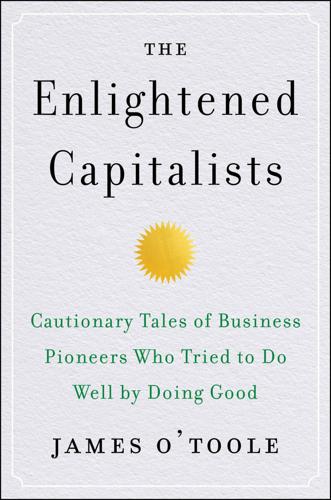
The Enlightened Capitalists
by
James O'Toole
Published 29 Dec 2018
‘Making money’ per se was not seen as the exclusive goal within Unilever, either for individuals or for the company.”27 In the late 1940s and early ’50s, Unilever’s Dutch chairman Paul Rykens “was a prominent exponent of the philosophy” that the company had responsibilities to its various constituencies—employees, consumers, and local communities. In this he adopted the idea of corporate social responsibility that had recently been introduced by the American executive Robert Wood Johnson (see chapter 7). However, Unilever’s commitment to that philosophy was muted considerably during the 1980s and ’90s, when the company was led by executives whose focus was squarely on profit. Today, Unilever’s global workforce of over three hundred thousand is the world’s largest producer of ice cream, tea, and margarine.
…
In the eyes of the union and others who had been following the progress of the experiment, Harman appeared to have parlayed the positive press he received as “an enlightened business leader” into a subcabinet position. Again, it is impossible to know the motives of others, but Harman thereafter seemed to have lost interest in workplace reform and the corporate social responsibility he previously had championed. Thanks to the behavior of leaders like Harman, unions have interpreted managerial efforts to close the historically deep divide between labor and management as subtle forms of paternalism, the hidden purpose of which is to increase productivity and profitability and burnish the public image of managers and owners.
…
Echoing Robert Owen, he offered this reply: “Senator, I have been unable to find a sympathetic group of colleagues in organized business and I’ve tried very hard.”10 Johnson then established himself as the nation’s leading business advocate of improved labor-management relations, shocking the business establishment by criticizing the National Association of Manufacturers for its rigid antilabor philosophy. During the Depression, Johnson developed his philosophy of “corporate social responsibility.” Indeed, he may have coined that phrase; if not, he was the first major American industrialist to use it. At the height of the Great Depression, he penned an essay provocatively entitled “Try Reality,” addressed to his fellow capitalists: Out of the suffering of the past few years has been born a public knowledge and conviction that industry has the right to succeed where it performs a real economic service and is a true social asset.
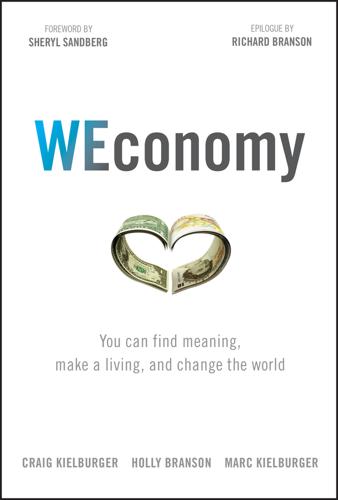
WEconomy: You Can Find Meaning, Make a Living, and Change the World
by
Craig Kielburger
,
Holly Branson
,
Marc Kielburger
,
Sir Richard Branson
and
Sheryl Sandberg
Published 7 Mar 2018
He dressed in drag, drove an army tank through New York's Times Square, and raced in hot air balloons to steal attention away from corporate goliaths. All to build a global brand without forking out for traditional advertising. His mantra was, and remains, “screw business as usual.” This also extends to corporate social responsibility (CSR). Rather than tack on a CSR plan with no real resources or support, Virgin uses its core business for social good, in some cases starting companies purely to solve a social problem, and not worrying about the profit potential until much later on. Richard's brilliant feat of launching and growing companies, with purpose at their heart, is transforming business and changing the world.
…
It defined our business model and strategy. I know that Virgin Sport will be successful financially, because putting purpose at its core has made it a valuable business proposition and investment opportunity. Don't you just hate it when your father-in-law is right?” What is Purpose? When you think just two decades ago, corporate social responsibility meant writing a check for the local little league team—a nice gesture, but hardly enough. Now the acronym CSR is banned at Virgin Management Ltd., because it hearkens back to the days of a single office or unlucky person tasked with reversing the negative effects of big business on the planet—sort of an apology for turning all of Earth's resources into products.
…
Simply put, she hoped to tie salaries and advancement at one of the largest accounting firms in the world to an employee's volunteer efforts outside the company. KPMG is certainly a progressive company—the international accounting firm is committed to environmental sustainability and was among the first professional service organizations in Canada to sponsor a volunteer day. But Tania's plan envisioned an even more engaged form of corporate social responsibility. Bill Thomas, the firm's incoming Canadian CEO at the time and now KPMG's Global Chairman, asked many tough questions, but Tania had accounted for that (because she's an accountant . . . get it?). She told him it would not require more money. An investment of strategy and leadership alone would produce more engaged employees with deeper connections to their communities.
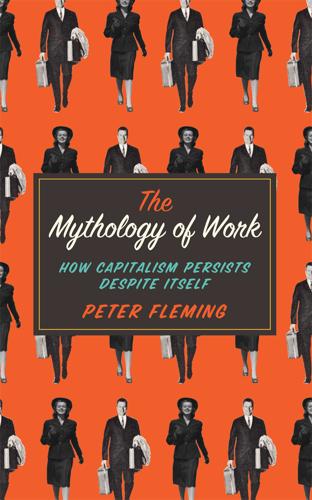
Mythology of Work: How Capitalism Persists Despite Itself
by
Peter Fleming
Published 14 Jun 2015
According to the Abbott government’s chief business adviser, Maurice Newman, the lies spread about global warming have resulted in Australia being totally unprepared for global cooling. So, within this bizarre context, the ‘Australians for Coal’ satire functions in a conventionally critical manner by revealing how ridiculous corporate lie telling can become in face of the facts. Indeed, a whole public relations industry has developed around the concept of ‘corporate social responsibility’ (CSR) to create a false image of multinational capitalism and its intimations towards a greener ‘conscious capitalism’, an ideal that is clearly at significant odds with everyday business activities. But the ‘Australians for Coal’ video sketch gets somewhat more interesting and complex midway through.
…
Roberts captures the tenor of these criticisms, especially those pertaining to claims about ‘ethics’ and the ‘triple bottom line’ in industries that can never realistically walk the talk, including those that make money from tobacco products, petroleum and the overpriced medicines in the Global South: My fear is that this talk of ethics is just that – talk; new forms of corporate self-presentation that have no reference to or influence on what is practiced in the name of the corporation, beyond those associated with good public relations. In this form, corporate social responsibility is cheap and easy; a sort of prosthesis, readily attached to the corporate body, that repairs its appearance but in no way changes its actual conduct. (Roberts, 2003: 88) And Roberts’s fears are shared by a growing number of analysts, including myself. The ideology of responsibility is wonderful in itself, but is so far removed from the structural principles of the multinational firm that it is difficult to view such calls without scepticism.
…
Of course, when domination channels refusal through its own prism, it too changes to a certain degree, something we have learnt from studying colonialism. The key difference between this and cynical neoliberal truth telling, however, is that the latter’s apparent totality is only propagated rather than modified as a consequence. While, for example, ‘corporate social responsibility’ programs may imbue the firm with a facet of humanity, they add only a shallow genuflection to an otherwise unaltered universality that catapults us deeper into capitalist realism. How might we speak in power’s presence without simply withdrawing, as Adorno sadly recommends, and without supplying it with the attentional energies that it so craves from us?
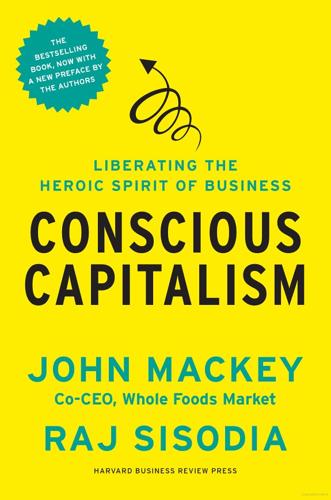
Conscious Capitalism, With a New Preface by the Authors: Liberating the Heroic Spirit of Business
by
John Mackey
,
Rajendra Sisodia
and
Bill George
Published 7 Jan 2014
Depending on the quality of our actions and external factors, they could be different but far better. Conscious Capitalism Is Not Corporate Social Responsibility A good business doesn’t need to do anything special to be socially responsible. When it creates value for its major stakeholders, it is acting in a socially responsible way. Collectively, ordinary business exchanges are the greatest creator of value in the entire world. This value creation is the most important aspect of business social responsibility. The whole idea of corporate social responsibility (CSR) is based on the fallacy that the underlying structure of business is either tainted or at best ethically neutral.
…
Rather than being bolted on with a CSR mind-set, an orientation toward citizenship and society needs to be built in to the core of the business.15 Table 2-1 summarizes the key differences between Conscious Capitalism and CSR. TABLE 2-1 How Conscious Capitalism differs from Corporate Social Responsibility Corporate Social Responsibility Conscious Capitalism Shareholders must sacrifice for society Integrates the interests of all stakeholders Independent of corporate purpose or culture Incorporates higher purpose and a caring culture Adds an ethical burden to business goals Reconciles caring and profitability through higher synergies Reflects a mechanistic view of business Views business as a complex, adaptive system Often grafted onto traditional business model, usually as a separate department or part of public relations Social responsibility is at the core of the business through the higher purpose and viewing the community and environment as key stakeholders Sees limited overlap between business and society, and between business and the planet Recognizes that business is a subset of society and that society is a subset of the planet Easy to meet as a charitable gesture; often seen as “green-washing” Requires genuine transformation through commitment to the four tenets Assumes all good deeds are desirable Requires that good deeds also advance the company’s core purpose and create value for the whole system Implications for business performance unclear Significantly outperforms traditional business model on financial and other criteria Compatible with traditional leadership Requires conscious leadership A Way Forward Every human being is born relatively undeveloped, but holds the potential for virtually unlimited personal growth.
…
It is certainly consistent with some of the most important principles of Conscious Capitalism, particularly in its emphasis on managing businesses on behalf of multiple stakeholders. We see the TBL movement as a fellow traveler in helping to evolve business and capitalism to a higher consciousness. Whereas the corporate social responsibility (CSR) mind-set attempts to graft social responsibility and environmental sustainability onto the profit maximization model as add-ons, the TBL movement wants to make them equal partners in the business with the investors. While TBL is definitely an improvement over the CSR model, the TBL movement tends to focus heavily on social responsibility and environmental sustainability as the major areas for business to concentrate on besides achieving economic success.

The Golden Passport: Harvard Business School, the Limits of Capitalism, and the Moral Failure of the MBA Elite
by
Duff McDonald
Published 24 Apr 2017
It celebrated the conglomeration movement until the movement buckled under its own weight. At that point it turned on a dime and started sending its graduates to Wall Street in droves, one job of which was to dismantle the very companies the School’s previous graduates had built. On the subject of corporate social responsibility, it endorsed it when it was convenient to do so in the 1950s and 1960s, and pulled back from doing so as it embraced Wall Street’s single-minded focus on shareholder returns. It has lately come back around again, but that’s only because that’s what its students are demanding. Where is the leadership in any of that?
…
Bok’s 1978 annual report was mostly given over to a finely grained analysis of the Business School. While largely complimentary, it also included a catalog of what Bok considered serious weaknesses. He touched all the nerves: the school’s ongoing challenge at teaching ethics, its reticence on corporate social responsibility issues, as well as its lack of focus on the management of government and not-for-profit organizations. That, and the never-resolved question of the proper division of power between the government and the corporation. Bok also took aim at the school’s unstinting devotion to the case method—not suggesting that they dump their signature pedagogical approach but that they consider expanding their portfolio of teaching tools because of the method’s shortcomings.
…
Executives who try to act in ways that most of us would consider moral—with an eye to the environment or some other social goal—are, in Friedman’s way of thinking, acting immorally. When Joel Bakan interviewed Friedman for his 2005 book, The Corporation: The Pathological Pursuit of Profit and Power, the economist repeated the same point he’d made nearly forty years before, but with a twist. With corporate social responsibility again on the rise, Friedman conceded that it could be beneficial, but only when it is insincere, when executives espouse social and environmental values as “hypocritical window dressing” that’s really meant to boost corporate image and therefore boost the bottom line. In Friedman’s view, “hypocrisy is virtuous when it serves the bottom line,” Bakan observed, “[whereas] moral virtue is immoral when it does not.”3 Bakan then found a professor at HBS who was willing to channel Friedman’s “brand of cynicism [that is] old-fashioned, mean-spirited, and out of touch with reality.”
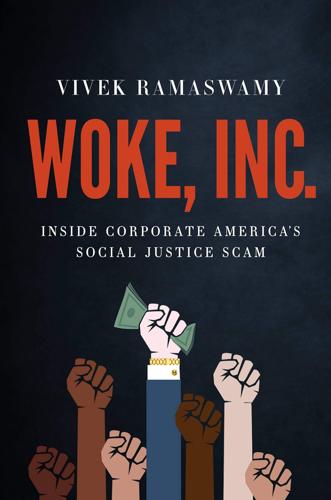
Woke, Inc: Inside Corporate America's Social Justice Scam
by
Vivek Ramaswamy
Published 16 Aug 2021
“The Corporate Parent: The Collapse of Corporate Social Responsibility at Unilever.” Plough, 15 Dec. 2020, www.plough.com/en/topics/justice/social-justice/the-corporate-parent. 2. “Every U Helps Empower Women and Girls.” Unilever, 2021, www.unilever.com/brands/every-u-does-good/female-empowerment/. 3. “Business and Philanthropic Partners: Partnerships: Businesses and Philanthropies.” UN Women, United Nations, 2021, www.unwomen.org/en/partnerships/businesses-and-foundations/major-partners#unilever. 4. Hengeveld, Maria. “The Corporate Parent: The Collapse of Corporate Social Responsibility at Unilever.” Plough, 15 Dec. 2020, www.plough.com/en/topics/justice/social-justice/the-corporate-parent. 5. aidsfreeworld.org/statements/2020/6/23. 6.
…
Wayne Gretzky would’ve been proud: they weren’t just skating to where the puck was, they were skating to where the puck was going. While their more uncouth peers at less esteemed places like Amaranth continued to entertain themselves and their clients with frivolous perks, Goldman had embarked on its metamorphosis into a company in pursuit of a nobler kind of indulgence: “corporate social responsibility.” Today, progressive social values like “going green” and “being diverse” have become, counterintuitively, the modern equivalents of strippers and dwarf-tossing. They are patronized and tipped by the same corporate chieftains who indulge their fancies, all while those corporate chieftains accrete greater wealth and power for themselves along the way.
…
I met him for the first time in early 2017 via one of his smaller US investors. While in public he waxed eloquent about social values like diversity, in private he bragged that the “beauty of hiring female executives” was that “they have other shit to do at home, so they go home early.” How progressive. Yet this version of corporate social responsibility is ultimately a scam—not on shareholders, who often profit from it, but on the American public as a whole. It’s a new form of capitalist excess. And it’s even more insidious than its precursor in the decade before. Ordinary Americans may be put off by stripping or dwarf-tossing, but they instinctively like the idea of companies pursuing noble social values.

Future Files: A Brief History of the Next 50 Years
by
Richard Watson
Published 1 Jan 2008
Having said this, wireless technology and high-speed connectivity will mean that the office will be anywhere, so we will increasingly work on holiday and in remote locations around the world. Previously work-neutral spaces such as planes, trains and cars will also resemble offices and nowhere will we be entirely free from work. Corporate social responsibility and governance Companies will have to work harder to attract and retain workers and issues such as ethical behavior and corporate social responsibility will be uppermost in the minds of potential recruits and customers alike. Indeed, marketing will be turned inwards as organizations fight to create company brands that appeal to potential and existing recruits.
…
The Gen Xer was obviously expecting a debate about salary or holiday entitlements, but what transpired was a discussion about the ethical principles behind the firm and what it was doing in various areas ranging from poverty relief to recycling. 282 FUTURE FILES Whether or not companies engage with these issues remains to be seen, although there is anecdotal evidence to suggest that corporate social responsibility (CSR) is moving to center stage. The international standard for CSR (ISO 2600) will undoubtedly turn the heat up on firms when it comes to transparency and ethics. However, if past quality standards are anything to go by, this will be more a case of bureaucratic box ticking than a paradigm shift in the capitalist economy.
…
Then again, perhaps it’s the other way around. Maybe you can see it as ageing creating vast opportunities in everything from healthcare and wellbeing to transport, leisure, retail and even education. Finally there’s the area of sustainability. I have read various predictions and forecasts claiming that ethics, corporate social responsibility, corporate governance and even spirituality will be key business trends in the future. While I accept that these ideas are becoming more important, I cannot see them competing with sustainability in the broadest sense in terms of being a global driver of change across all industries, sectors and countries.

Ghost Work: How to Stop Silicon Valley From Building a New Global Underclass
by
Mary L. Gray
and
Siddharth Suri
Published 6 May 2019
See Mike Isaac and Noam Scheiber, “Uber Settles Cases with Concessions, but Drivers Stay Freelancers,” New York Times, April 21, 2016, http://www.nytimes.com/2016/04/22/technology/uber-settles-cases-with-concessions-but-drivers-stay-freelancers.html; Alex Rosenblat and Luke Stark, “Algorithmic Labor and Information Asymmetries: A Case Study of Uber’s Drivers,” International Journal of Communication 10 (July 27, 2016): 27. [back] 6. Alex Rosenblat, Uberland: How Algorithms Are Rewriting the Rules of Work (Oakland: University of California Press, 2018). [back] 7. Wikipedia, s.v. “Corporate Social Responsibility,” accessed June 20, 2018, https://en.wikipedia.org/wiki/Corporate_social_responsibility. [back] 8. Gray et al., “The Crowd,” 134–47. [back] 9. Parikh’s approach to corporate social responsibility took things one step further. He asked company founders to design products and services that made a market for themselves, filling a societal need rather than using profits from a popular product to fund philanthropy.
…
Industry and Innovation 15, no. 2 (2008): 223–31. “What Is Jon Brelig and Oscar Smith?” Dirtbag Requesters on Amazon Mechanical Turk (blog), August 29, 2013. http://scumbagrequester.blogspot.com/2013/08/what-is-jon-brelig-and-oscar-smith.html. Wikipedia. S.v. “Corporate Social Responsibility.” Accessed June 20, 2018. https://en.wikipedia.org/wiki/Corporate_social_responsibility. Wikipedia. S.v. “Pareto Principle.” Accessed June 15, 2018. https://en.wikipedia.org/wiki/Pareto_principle. Williams, Joan C., Susan J. Lambert, Saravanan Kesavan; Peter J. Fugiel, Lori Ann Ospina, Erin Devorah Rapoport, Meghan Jarpe, Dylan Bellisle, Pradeep Pendem, Lisa McCorkell, and Sarah Adler-Milstein.
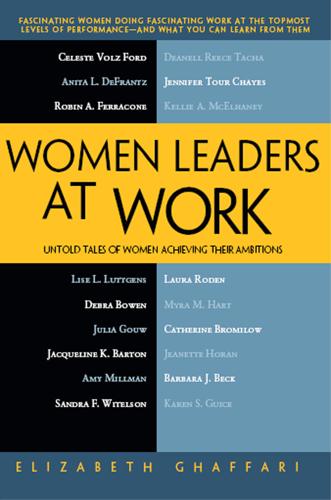
Women Leaders at Work: Untold Tales of Women Achieving Their Ambitions
by
Elizabeth Ghaffari
Published 5 Dec 2011
McElhaney teaches multiple courses on strategic corporate social responsibility in MBA and executive education programs at Berkeley. She has been a visiting professor specializing in strategic corporate social responsibility (CSR) at the University of North Carolina Kenan-Flagler School of Business, as well as Institut d’administration des enterprises, Université de Poitiers in France and Escuela de Alta Dirección y Administración (EADA) in Barcelona, Spain. On the faculty of the Haas School of Business since 2002, Dr. McElhaney’s consulting and research are focused on corporate social responsibility strategies and aligning CSR with business objectives, core competencies, and business value; linkages between diversity and CSR, specifically using CSR as a hook to re-engage women with business as employees, consumers, and investors; and using social technology for good by advancing companies’ CSR strategies and impact.
…
The first time the course was offered, I was put into the smallest classroom in the Business School, but I had forty sign-ups and a waitlist of fifty-eight students. It was clear that something big was happening—students were much farther ahead of the faculty or the university. The course was something like Corporate Social Responsibility and Projects. The students would work on a real-life challenge inside of a company. I was lucky to have some great companies surrounding me in Michigan. Dow Chemical Company was an early sponsor, as were Ford Motor Company and Herman Miller. Paul Murray was a fantastic pioneer inside of Herman Miller around the concept of sustainable development.
…
I’d built a joint-degree program at Michigan and developed a new course around the theory of sustainable development and how to apply it—live—in company projects. The dean of the Haas School of Business at the University of California at Berkeley at the time was a woman named Laura Tyson. She recruited me to do something similar in corporate social responsibility [CSR] at Haas because there were no formal programs there, but there was a lot of student demand. I was very drawn to Berkeley. I’m always drawn to people that I like, even more than to opportunities. I was fascinated by a female dean. Up to that point, I had been in business and academia roles and never had worked for a female.
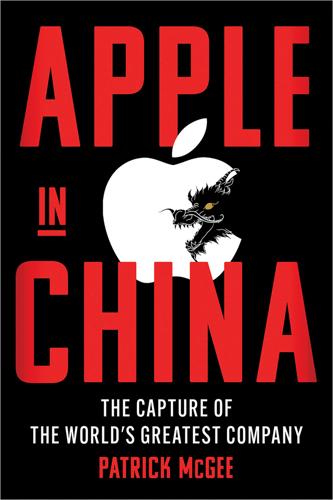
Apple in China: The Capture of the World's Greatest Company
by
Patrick McGee
Published 13 May 2025
“voluntary is the new mandatory”: James McGregor, No Ancient Wisdom, No Followers: The Challenges of Chinese Authoritarian Capitalism. Westport, CT: Prospecta, 2012. “In the West, CSR is”: Jiangyu Wang, “CSR as CPR: The Political Logic of Corporate Social Responsibility in China,” USALI East-West Studies 2, no. 5 (2022), https://usali.org/s/CSR-as-CPR-The-Political-Logic-of-Corporate-Social-Responsibility-in-China.pdf. The Korean giant had dozens: Michael J. Enright, “Samsung’s Contribution to China through FDI,” Hinrich Foundation, 2017, https://www.hinrichfoundation.com/media/s04iyovs/hinrich-foundation-fdi-in-china-samsung-case-study-9-5-17.pdf.
…
But it was redesigning the system to make wink-wink arrangements more likely. As one Western businessman living in China at the time characterized the changes, “voluntary is the new mandatory.” A Top-Down Project Guthrie’s opinions were again in demand in 2015 after—as he predicted—Apple received a terrible result in China’s study of corporate social responsibility (CSR). The scores were published by SASAC—the State-owned Assets Supervision and Administration Commission of the State Council—an institution that has no equivalent in the United States. SASAC was among the most important organizations in the country. It was the largest shareholder of China Mobile, a dominant carrier with some 800 million subscribers, as well as China Telecom, its biggest rival.
…
Another Apple executive referred to the statistic that iPhone accounts for less than a fifth of global smartphone shipments but garners 80 percent of industry profits. “To do that, you need to be creating competition at every level in the supply chain. You need to be ruthless,” this person says. “But you can’t do that and also be compliant.” A manufacturing design engineer at Apple recalled a day when Cook sent a note about the importance of corporate social responsibility. Such notes were meant to convey something important: We care about this at the highest level of Apple. But that same day his more direct bosses were demanding improvements to output. “The two messages were opposed to each other,” he says. But there was no genuine recognition of that.
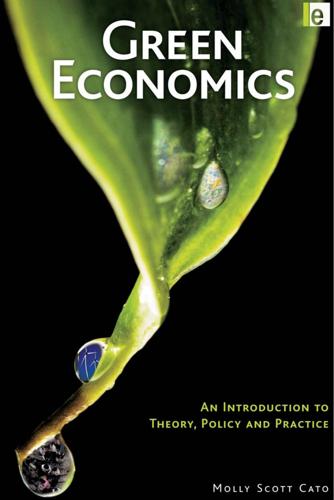
Green Economics: An Introduction to Theory, Policy and Practice
by
Molly Scott Cato
Published 16 Dec 2008
S. 80 capital 96 see also Five Capitals Framework capitalism 11, 59, 90–92 carbon cycle 98–99 carbon dioxide emissions 98, 110–113, 130, 164, 165 carbon permits 111–112 carbon tax 164 carbon trading 110 Chiemgauer 82 China 128, 141 Chipko movement 189 Christianity 21 Citizens’ Income 181–182 climate change 1, 12, 98, 109–113, 129–130 closed system 48 CLT (Community Land Trust) 195, 196 Club of Rome 39 CO2 emissions 98, 110–113, 130, 164, 165 co-housing 196–197 commodity prices 126 commons, taxation 162–164 community business 68 Community Land Trust (CLT) 195, 196 community-supported agriculture (CSA) 95, 200–202 comparative advantage 124–126 competition 127–128 complementary currencies see local currencies Conable, B. 123 Conaty, P. 195 congestion charge 163 construction sector 107–109 220 GREEN ECONOMICS consumers 63 consumption 10, 96, 174 Contraction and Convergence 111 convivial economy 42, 44, 101 cooperatives 63, 64–65, 94, 95 co-production 80 core economy 80 corporate social responsibility (CSR) 92–93 cowboy perspective 11, 25 CSA (community-supported agriculture) 95, 200–202 CSR (corporate social responsibility) 92–93 Cuba 153, 201 Curtis, F. 145 Daly, H. 9, 25, 40, 115 Dawson, J. 194 debt-based money system 72, 73, 78 democratization, money system 74 demurrage 82 Denmark 167, 197 deskilling 61–64 Diggers 189 direct action 133 disembedding 183, 187 domestic work 114 Douthwaite, R. 27–29, 206 cooperatives 64–65 economic growth 9 economics 43 green growth 40 local self-reliance 145, 153–154 money 77 drug manufacturers 184 dumping, economic 135 early human societies 176 ecofeminism 35, 46 ecological economics 7, 40 ecological footprint 8 ecological modernization 106–109 ecological rucksack 96 ecological virtue 18 ecology 4, 190 economic growth 9–10, 38–39, 83, 174 economic indicators 116–120 see also GDP economics 11, 30–31, 41–45 economic security 120 ecotaxes 164–168 ecovillages 194 ecowelfarism 180 Emissions Trading Scheme (ETS) 110 see also carbon trading employment 58 empowerment 63 enduring terrors 178–179 energy 26, 92, 95–96 energy return on energy invested (EROI) 100 energy tax credits 166 entropy law 26 environmental catastrophes 114–115 environmental crisis 105, 178 environmental economics 6, 7 environmental justice movement 178 environmental movement 39 environmental taxes see ecotaxes equity 159, 160, 172 EROI (energy return on energy invested) 100 ETS (Emissions Trading Scheme) 110 European Union (EU) 109, 110, 143, 166 externalities 6 fair trade products 95, 128–129 farmers’ markets 95 farming 197–202 financial system, international 74–77 Five Capitals Framework 96 Fleming, D. 44, 112 food 62, 95, 140, 147 food miles 62 food security 143 formal economy 5 France 143 free trade 123, 126–129 Freire, P. 29 Funtowicz, S.
…
Despite that, the world’s top 200 corporations (accounting for 38 per cent of global economic activity) employ less than 0.25 per cent of the global workforce. Estimates vary; but the whole lot of them employ less than 1 per cent of the global workforce – a figure which has not increased for more than two decades.7 Most green economists share with Porritt a highly sceptical approach to corporate social responsibility or CSR, which he referred to as a ‘seductive illusion’. As discussed in Box 6.1, for many corporations claims to be green are a hollow GREEN BUSINESS 93 BOX 6.1 SHELL AND CSR: A CYNICAL VIEW Shell is one of the largest global corporations, a key player in the global oil industry and its third largest company behind Exxon-Mobil and BP.
…
Velcro Contraction and Convergence: a proposed system of reducing global greenhouse gas emissions on the basis of an equal share for every global citizen a scheme for allocating the right to produce CO2 between citizens of a nation state a system allowing countries or organizations to exchange the right to produce CO2 so that those who can more efficiently reduce emissions reduce more and are paid money in compensation 216 GREEN ECONOMICS carrying capacity CI CLT community currencies CSA CSR Defra ecological footprint ecological rucksack ecological modernization ecotaxes embodied energy ETS Gaia hypothesis GAST GDP Green Industrial Revolution greenwash IMF intermediate technology ISEW Kyoto Protocol LDCs LVT NEF Passivhaus peak oil the size of population of species that an ecosystem can support within its natural resource limits and without degrading natural capital for future generations Citizens’ Income: a payment made to every citizen of a state as a right and without reciprocal demands or duties Community Land Trust: a system of mutual land ownership by the community alternative forms of money issued by local communities to help strengthen their local economies community-supported agriculture corporate social responsibility Department for Environment, Food and Rural Affairs (UK) a way of measuring human demand on the planet in terms of productive land the total weight of material flow carried by an item of consumption in the course of its life cycle academic and policy discourse which suggests that sustainability is possible without systemic social and environmental changes taxes designed to achieve environmental benefits the amount of fossil-fuel energy required to make a product that is directly related to the climate change impact of that product Emissions Trading System: EU system of carbon trading the perception of planet Earth as a single, self-regulating living organism General Agreement on Sustainable Trade: a proposed sustainable alternative to the present world trading system Gross Domestic Product: a key measure of a country’s economic activity within the conventional economic paradigm the idea that moving to a sustainable economy will require an upsurge of ingenuity and activity analogous that which occurred at the dawn of industrialism attempt by a company, generally a large corporation with a significant PR budget, to paint its activities as greener than they are International Monetary Fund a means of transferring sophisticated technologies to poorer countries using resources available there Index of Sustainable Economic Welfare: a proposed alternative to GDP as a measure of economic activity an international agreement adopted in 1997 with the aim of reducing the signatories’ greenhouse gas emissions less-developed countries Land Value Taxation New Economics Foundation home designed so that it can be naturally warmed and ventilated without the need for energy inputs the idea that oil production will reach a peak and then decline, with a severe impact on global economic activity FURTHER RESOURCES permaculture 217 a system for designing human settlements so that they mimic the interrelated structure of natural systems reskilling the idea that to make possible the sustainable self-reliant communities of the future we will need to learn more practical skills Right Livelihood Award the alternative green version of the Nobel Prize, awarded annually by the Swedish Parliament self-provisioning providing for more individual or community needs oneself and without resorting to the market social economy the part of the economy that is outside the market and the state and responds to human needs rather than the profit motive – a new way of describing ‘mutual aid’ solidarity economy an approach to the global economy that foregrounds social justice in economic relationships TEQs a system for rationing the right to produce CO2 on an individual basis TNCs transnational corporations triple-bottom-line a way of measuring a company or organization that includes accounting consideration of social and environmental consequences rather than focusing exclusively on the economic UNCTAD United Nations Conference on Trade and Development UNFPA United Nations Population Fund UNSNA United Nations System of National Accounts: the international standard for measuring economic activity within the conventional economic paradigm WTO World Trade Organization zero-carbon house a home that is neutral in terms of its CO2 emissions because its fossil-fuel use is offset by the energy it generates via renewable technologies Index absolute poverty 173 advertising 174 agriculture 197–202 alienation 59, 183–184 alternative currencies see local currencies alternative food economy 95 anarchism 179 Anderson, V. 117 Aquinas, St Thomas 65 Argentina 65, 84–85 Aristotle 18 Association of Heterodox Economists 31 Australia 192 balanced economy see steady-state economy Barnier, M. 143 Barry, J. 174, 179 BAU (business-as-usual) 90, 91, 107 Bhumibol Adulyadej 149 Bhutan 119 biofuels 48 bioregionalism 5, 20, 150–153 borrowing 182–183 Boulding, K.
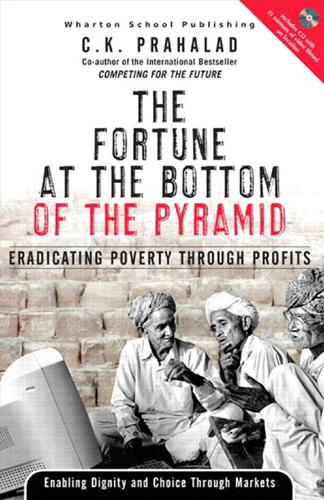
The fortune at the bottom of the pyramid
by
C. K. Prahalad
Published 15 Jan 2005
That was the beginning of my journey to understand and motivate large firms to imagine and act on their role in creating a more just and humane society by collaborating effectively with other institutions. It was obvious that managers can sustain their enthusiasm and commitment to activities only if they are grounded in good business practices. The four to five billion people at the BOP can help redefine what “good business practice” is. This was not about philanthropy and notions of corporate social responsibility. These initiatives can take the process of engagement between the poor and the large firm only so far. Great contributions can result from these initiatives, but these activities are unlikely to be fully integrated with the core activities of the firm. For sustaining energy, resources, and innovation, the BOP must become a key element of the central mission for large private-sector firms.
…
Poverty alleviation will become a business development task shared among the large private sector firms and local BOP entrepreneurs. 6 The Fortune at the Bottom of the Pyramid ❥ Second, the BOP, as a market, provides a new growth opportunity for the private sector and a forum for innovations. Old and tired solutions cannot create markets at the BOP. Third, BOP markets must become an integral part of the work of the private sector. They must become part of the firms’ core businesses; they cannot merely be relegated to the realm of corporate social responsibility (CSR) initiatives. Successfully creating BOP markets involves change in the functioning of MNCs as much as it changes the functioning of developing countries. BOP markets must become integral to the success of the firm in order to command senior management attention and sustained resource allocation
…
In other words, they form a link between those who have and those who do not have. The strength of an NGO such as ours is competence, commitment, credibility, collaboration and advocacy. 4 Conversely, multinational corporations (MNCs) typically limit their involvement with the poor to corporate social responsibility. Although many MNCs have tapped into India’s wealthy, urban populations, few have attempted to reach the poor. MNCs have key capabilities, such as technological know-how, distribution networks, marketing experience, and financial backing, that enable them to combat public health problems such as IDD at a profit.

Frugal Innovation: How to Do Better With Less
by
Jaideep Prabhu Navi Radjou
Published 15 Feb 2015
And it explains how some pioneering firms are using techniques such as upcycling to combine and integrate the principles of the sharing and circular economies, thus paving the way for the “spiral economy”: a virtuous system that generates ever more value while reducing waste and the use of natural resources. Essential – not optional – sustainability For many years, companies only paid lip service to sustainability as part of their corporate social responsibility (CSR) and philanthropic activities. Recently, however, several factors have forced developed-world companies to take a more strategic approach to sustainability. Resource scarcity threatens the viability of businesses Paul Polman of Unilever notes that the world consumes 1.3 times more than the planet can replenish.2 Given current rates, by 2030 we would require two planets to supply the resources we need and to absorb our waste.
…
They may even be too proud to admit their ignorance or inexperience. Fortunately, many other companies seek help from non-profit organisations to forge hybrid value chains (HVCs). HVC is a business model that aims to create affordable products and services for the poor. It is more than corporate social responsibility (CSR) or philanthropy, as it works in win-win partnership with all stakeholders. Businesses gain access to profitable new markets, while non-profit organisations achieve their desired social impact. In this way, multinationals such as Citigroup, Essilor, GE and Unilever have served bottom-of-pyramid (BOP) customers in Africa, Asia and Latin America.
…
Index 3D printers 18, 47–9, 50, 128, 132, 134, 152, 166 3D printing 9, 47–9, 50, 51, 52, 132, 151–2, 206 4D revolution 53–4 A Accor 172–6 Accountable Care Solutions 211 Active Health Management 211 adaptability 90, 154 additive manufacturing 47–9 ADEO Group 127, 128 advertising 24, 61–3, 71–2 aerosols 95, 96 Aetna 32, 208–13, 213, 215 Affinnova 31, 141 affordability 3, 82, 136, 153, 161, 172, 194, 216 in emerging markets 4, 56, 120, 198, 206 health-care innovations 202–3 and quality 1, 3, 9, 12, 75, 120–1, 198, 206 affordances 120–1 Africa 40, 56, 146, 161, 164, 197 financial services 198, 201 IBM in 200–2 innovation potential 200–2 as market 12, 169, 197–8, 199 ageing populations 109, 194 ageing workforce 13, 29, 49, 153 agility 26, 41, 69, 75, 143, 169–70 in innovation 21, 27, 33–4, 42–3, 72, 154, 167, 173, 176, 206 in manufacturing 44–5, 49, 52 Akerman, Dave 136 Air Liquide 205–7 air pollution 74, 78, 187, 200 Airbnb 10, 17, 85, 136, 140, 163, 173, 175 aircraft 68, 149 parts 48–9, 49, 121, 151–2 airlines 60, 121 Alteryx 32 Amazon 46, 60–1, 150 Amelio, Gil 68–9 AmEx (American Express) 161–2, 167, 215 Amgen 45 Anderson, Chris 18 Android operating system 130, 172 AOL 42 Apple 17, 24, 68–9, 71, 99, 150, 155, 172 Apple TV 62 apps 99, 106, 107, 108, 111–12, 124–5, 148 Arduino 135 Ariely, Dan 132 Arla Foods 37 artists 88, 93 ASDA 158–9, 159 Asia 161, 164, 200 aspirations 88–9, 119–20, 198 assets digitising 65–6 flexing see flexing assets reusing 92–3 sharing 159–61, 167 AT&T 21 ATMI 88 Auchan 13, 126, 128, 215 austerity 5, 6–7, 23 Australia 5, 62, 146, 200 Autodesk 48, 92, 132, 196–7 Automatic 131 automation 49–50 Avon 146 AXA 116 Ayed, Anne-Christine 75, 76 B B Corps (Benefit Corporations) 82 B2B (business-to-business) sectors 25–6, 34, 57, 142, 161, 175, 212 B2C (business-to-consumer) companies 25, 34, 212 Badrinath, Vivek 174 BAE Systems 48–9 Ban, Shigeru 93 Bangladesh 66 Bank of America 155 banking services 13, 17, 57, 161–2, 198 see also financial services Banner Health Network 210 Banzi, Massimo 135 Barber, Michael 181 Barclays 100, 115, 117, 215 Barry, Mike 183–4, 187 Bayer 66–7 Bazin, Sébastien 173 BBVA 125 Béhar, Yves 110 Belgium 103 Benefit Corporations (B Corps) 82 Benelux countries 7, 103 Benetton 67 Benoît, Paul 89 Berg 89 Bergh, Chip 122–3 Bertolini, Mark 208–9, 212, 213, 217 BHAGs (“big, hairy audacious” goals) 90–1, 158–9, 179, 191–2 Biasiotta, Bruno 123 big data 32–3, 117, 150 big-box retailers 9, 18, 137 “bigger is better” 2, 8, 14–15, 104 biomimetics (or biomimicry) 84 Birol, Jacques 163–4 BlaBlaCar 10, 85, 163 Blanchard, David 94, 96 Bloomberg, Michael 18, 79, 133 BMI (business model innovation) 192 BMW 47, 62–3, 86 BNP Paribas 168–9 Boeing 92, 144 Bolland, Marc 180–1, 186 Bontha, Ven 59 Booz & Company (now Strategy&) 6, 22, 23, 28, 171 Bosch 156 Boston Consulting Group 55, 64, 116, 145, 217 Botsman, Rachel 10 bottom-of-pyramid (BOP) customers 161, 203, 207 Bouygues Immobilier 90 BP 169 BPS (by-product synergy) 159 Brabeck-Letmathe, Peter 44, 78 brand ambassadors 143, 145 brand loyalty 46, 100, 204, 215 branding 15, 108, 119–20, 156 brands 1, 71, 139, 141, 143, 154, 165–6, 215 “conversations” with 129, 131–2 working together 154, 156–7 Braungart, Michael 82 Brazil 40, 74, 102, 146, 188, 199 emerging market 4, 12, 38, 146, 197, 199 Bretton Woods Conference (1944) 104 Brin, Sergey 63 BringBee 85 Bross, Matt 37–8, 171 Brown, Tim 121 Brusson, Nicolas 163 BT 37–8, 171 BTG (British Technology Group) 171 budgeting, personal 124–5 budgets 6–7, 36, 42 Buffett, Warren 138 buildings 196–7 bureaucracy 36, 63–4, 65, 70, 165, 169, 173, 182 business, primary purpose of 14 business model innovation (BMI) 192 business models 2, 34, 38, 80, 118, 205, 216, 217 changing 190–3, 213 business opportunities 36, 188–9, 190 business process re-engineering 192 business strategy 34 business-to-business see B2B business-to-consumer see B2C by-product synergy (BPS) 159 C C2C (cradle-to-cradle) design 75, 77, 82, 84, 97 Cacciotti, Jerry 22, 23 CAD (computer-aided design) 47, 65, 132, 165 California 79, 99 Calmes, Stéphane 127, 128 Camp, Garrett 163 Canada 5, 102 cannibalisation conundrum 15, 117–18 capital costs 45 car insurance 116 car sharing 10, 17, 85, 86, 108, 123, 163 car-related services 62–3, 116 Caravan Shop 89 carbon emissions 102, 103, 196 reducing 78–9, 106–7, 159, 160, 174 stabilising 184, 186 carbon footprint 94, 100, 102, 156, 184, 186 Carrefour 121–2, 157, 174 cars 89, 92, 116, 119–20, 144, 155, 156 electric 47, 86, 172 emissions 47, 106–7 fuel consumption 47, 106–7 fuel efficiency 8, 12, 24, 47, 78, 131, 197 low-cost 2–4 personalisation 129–30 related services 62–3 standards for 78–9 see also BMW; Ford; Nissan; Renault; Tesla; Toyota Caterpillar 31, 55 CellScope 110 Cemex 59 centralisation 9, 44, 51 CEOs 34, 40, 168, 203–5, 204 certification, sustainability 84 Chaparral Steel 159 chemical industry 33, 58, 66–7 chemical usage, reducing 79 Cheshire, Ian 185–6 Chesky, Brian 163 Chevron 170 China 44, 83, 102, 144, 213, 216 air pollution 187, 200 emerging market 4, 38, 169, 197, 205 innovation in 169, 200 mobile phones 198 R&D 40, 188, 206 selling into 187–8 shifting production from 55, 56 Christchurch (New Zealand) 93 Chrysler 166 circular economy 9, 76–7, 80–4, 159–60, 195–6 “Circular Economy 100” 76–7, 86 circular supply chains 193 Cisco 17, 29, 65, 110 CISL (University of Cambridge Institute for Sustainability Leadership) 158–9 cities 107, 153 Citigroup 161 climate change 8, 100 closed-loop products 86, 91, 185, 192–3 cloud computing 60, 61, 157, 169 CMF-A car platform 4–5, 198–9 CNC (computer numerical control) cutters 128, 134, 152 co-branding 143 co-creation 126–9, 202–3, 206–7 see also collaboration; horizontal economy; prosumers co-distribution 143 co-marketing 143 co-operation 64–5, 69, 70–1 co-opetition 158–9 Coase, Ronald 133 Coca-Cola 57, 62, 142, 154 “cold chains” 57 CoLearnr 114 Collaborating Centre on Sustainable Consumption and Production (CSCP) 193–4 collaboration 76, 114, 138–9, 176, 211, 217–18 cross-functional 36–8, 39, 71–2 see also hyper-collaboration; TechShop collaborative consumption see sharing economy collaborative manufacturing 50–1 collective buying platforms 137 Commonwealth Fund 110 communities of customers 129, 131, 132–3 local 52, 57, 146, 206–7 commuting 131 competition 22, 27, 102, 189 competitive advantage 15–16, 80, 195 competitors 19, 26, 148, 149–50, 172, 215 emerging markets 16, 205–6, 216 engaging 158–9, 167 frugal 16–18, 26, 216 complexity 24, 64 components 3, 67 computer numerical control see CNC computer-aided design (CAD) 47, 65, 132, 165 Comstock, Beth 40–1, 149, 150, 151, 170 concentration 96 Concept Lab 211 concept testing 25, 31, 72, 191 Cone, Carol 7 congestion 108, 201 constraints 4–5, 22, 34, 36, 42, 207, 217 consumer behaviour 3, 6, 97, 98–101 shaping xix, 99–101, 105–9, 125 Consumer Empowerment Index 103 consumer spending 103 consumers 8, 27, 37, 97, 105 developed-world 2, 7, 9, 102 dissatisfaction 130–1 empowerment 22, 105, 106 environmental awareness 101–2, 105 frugal 197–200 of the future 193–4 innovative ideas from 50–1 with particular needs 194–5 power 102–4, 139 social experience 139 and sustainability 95, 97, 101–4 trust of 143 young 16, 85, 86, 122, 124, 131 see also customers; prosumers consumption 85, 101–6, 115, 124, 193 continuous processing 44–5, 47, 50 Cook, Scott 19 core, focusing on 68–9 Cornillon, Paul 37 Corporate Home Exchange 175 corporate leaders 122–4, 180–1, 203–5 corporate social responsibility see CSR Cortese, Amy 138 cost effectiveness 12, 34, 149, 164, 172, 188, 190, 191 consumer energy use 53 customisation 67 health care 202 innovation 21, 173 micro-factories 52 Costco 18 costs 3D printers 48 capital costs 45 development costs 22, 36 distribution costs 54, 55, 96 electricity generation 104 energy costs 161, 190 environmental costs 11 fuel costs 121 of good-enough approach 27 health-care costs 13, 109 innovation costs 168, 171 inventory costs 54 life-cycle costs 12, 24, 196 maintenance costs 48–9, 66 manufacturing costs 47, 48, 52 operating costs 45, 215 production costs 9, 83 raw materials 153, 161, 190 reducing 11, 46, 47, 60, 84, 89, 160, 167, 200 resource costs 78, 203 shipping costs 55, 59 supply chain 58, 84 transaction costs 133 wage costs 48 Coughlin, Bill 167 Coursera 61, 112 Coye, Molly 202 cradle-to-cradle see C2C design creativity 88, 94, 128, 130, 135, 163–4, 199 in organisations 63–4, 70, 71 credit culture 115–16 CRM (customer relationship management) systems 59, 157 cross-functional collaboration 36–8, 39, 71–2 crowdfunding 17, 48, 132, 137–9, 152 crowdsourcing 28–9, 50–1, 126, 140, 143, 152, 202 platforms 142, 150–1, 151, 152 CSCP (Collaborating Centre on Sustainable Consumption and Production) 193–4 CSR (corporate social responsibility) 77, 82, 94, 161 culture, organisational see organisational culture “culture of simplification” 170 curiosity 153–4 customer behaviour see consumer behaviour customer experience, enhancing 75 customer feedback 31–2, 33, 72, 152, 170, 192 customer immersion labs 31–2 customer loyalty 28, 68, 77, 80, 124, 129, 131–2, 215 customer needs 37, 58, 90, 139–40, 170, 192, 206 changing 28, 38, 51, 127, 150, 168, 205 diversity 38, 46, 51 R&D disconnect from 26, 38 customer preferences 58, 67, 75 customer relationship management see CRM customer satisfaction 65, 128, 130–1 customer service 25–6, 127–8, 147 customer visits 18, 20, 128 customers 19, 27, 46, 76, 148, 205 alienating 24–6 behaviour see consumer behaviour bottom-of-pyramid 12–13, 161, 203, 207 communities of 129, 131, 132–3 cost-conscious 3, 6, 7, 22, 26, 156, 189, 215 dreams 140–1 eco-awareness 22, 26, 54, 75, 78, 93, 156, 195–6, 215 in emerging markets 200 engaging with 20–1, 24–6, 27–33, 34, 35, 38–9, 42–3, 115, 128, 170 as experts 146 focus on 19–21, 43, 62, 157–8, 204 goodwill of 84 motivation for change 117 multiple roles 143–6 needs see customer needs outsourcing to 143 participation 128–9 profligate 115–16 R&D and 27–8, 31–2, 38, 43 rewards for 147–8 shared 156–8 used to motivate employees 205–7 young 16, 85, 86, 122, 124, 131 see also consumers; prosumers customisation 9, 46, 47, 48, 51–2, 57–8, 67, 72 CVS Health 7 D D2D Fund 162 Dacia 2–4, 156, 179 Dannon 141 Danone 66, 141, 184, 186 Darchis, François 205–6, 207 DARPA (Defence Advanced Research Projects Agency) 49 Darukhanavala, P.P.
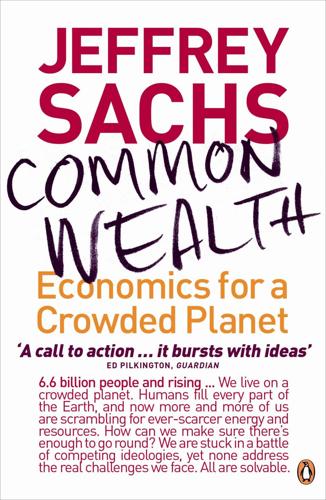
Common Wealth: Economics for a Crowded Planet
by
Jeffrey Sachs
Published 1 Jan 2008
Seventh, engage your workplace. Every company can add to global sustainable development. First and foremost, each company should abide by standards of corporate social responsibility, for example, by adhering to the norms and standards of the United Nations Global Compact. But more than that, each company has special technologies, organizational systems, employee skills, and corporate reputations that can contribute to meeting the Millennium Promises. We’ve emphasized that corporate social responsibility is not philanthropy but good business practice. Customers, suppliers, and, most important, employees themselves rally to the cause of companies that take these responsibilities seriously.
…
The actual institutions delivering AIDS medicines include a bewildering array of market-based, public-sector, and not-for-profit nongovernmental actors, including the drug companies, NGOs such as Partners in Health and Doctors Without Borders, the Global Fund, national African governments, local communities, and volunteer village health workers. The common thread is not market returns but rather commitment to a common goal: AIDS treatment for all who need it, even the poorest of the poor. CORPORATE SOCIAL RESPONSIBILITY The overriding job of business is to make money for the owners, but that in no way precludes an active role for business in solving nonmarket problems such as access to HIV medicines. Indeed, CEOs understand that if they neglect the nonmarket side of their activities, they can risk the very success of the company.
…
Each company needs to be part of the solution and needs to stretch its activities beyond normal market activities. This does not mean to turn the company upside down or into a charitable institution, but rather to identify the unique contribution the company may make as part of a broader effort to solve a major social challenge. This is the real meaning of corporate social responsibility: to operate in a manner that promotes broad social objectives, including nonmarket goals, in a way consistent with core business principles, values, and practices. It means much more than simple corporate philanthropy. It demands creativity. In most cases, a company’s main assets are its proprietary technologies, its supplier and customer networks, its good name, and its workforce.
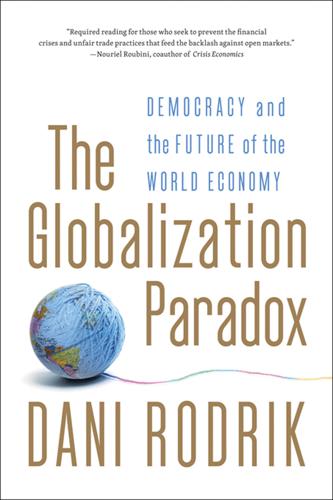
The Globalization Paradox: Democracy and the Future of the World Economy
by
Dani Rodrik
Published 23 Dec 2010
Yes, says John Ruggie, the Harvard scholar who coined the term “embedded liberalism” to describe the Bretton Woods regime. Ruggie agrees that transnational networks have undermined the traditional model of governance based on nation states. To right this imbalance, he argues, we need greater emphasis on corporate social responsibility at the global level. An updated version of embedded liberalism would move beyond a state-centered multilateralism to “a multilateralism that actively embraces the potential contributions to global social organization by civil society and corporate actors.” These actors can advance new global norms—on human rights, labor practices, health, anti-corruption, and environmental stewardship—and then enshrine them in the operations of large international corporations and policies of national governments.
…
And it would allow the private sector to shoulder some of the functions that states are finding increasingly difficult to finance and carry out, as in public health and environmental protection, narrowing the governance gap between international markets and national governments.7 Arguments on behalf of new forms of global governance—whether of the delegation, network, or corporate social responsibility type—raise troubling questions. To whom are these mechanisms supposed to be accountable? From where do these global clubs of regulators, international non-governmental organizations, or large firms get their mandates? Who empowers and polices them? What ensures that the voice and interests of those who are less globally networked are also heard?
…
Moreover, the benefits did not necessarily flow to the poorest farmers, who are the landless indigenous growers.19 Other reports suggest that only a tiny share of the price premium for fair trade coffee finds its way to the growers.20 Fair trade or other labeling programs like RugMark may be doing some good on the whole, but we should be skeptical about how informative these labels are and the likely magnitude of their effects. And what is true of NGO-led efforts is all the more true of corporate social responsibility. Corporations, after all, are motivated by the bottom line. They may be willing to invest in social and environmental projects if doing so buys them customers’ goodwill. Yet we shouldn’t assume their motives align closely with those of society at large, nor exaggerate their willingness to advance societal agendas.
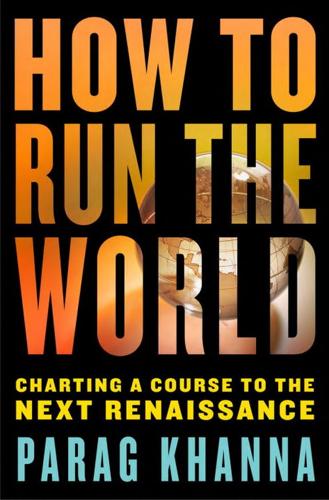
How to Run the World: Charting a Course to the Next Renaissance
by
Parag Khanna
Published 11 Jan 2011
Chapter Nine: The Case Against Poverty 1. Tom Mitchell, “An Army Marching to Escape Medieval China,” Financial Times, April 16, 2009. 2. Sixty-five percent of BRAC’s revenue is generated from its own programs and 30 percent from direct private support. 3. “Just Good Business: Survey of Corporate Social Responsibility,” The Economist, January 19, 2008, 4. 4. Josh Ruxin, “Doctors Without Orders,” Democracy, Summer 2008. 5. Tahir Andrabi, Jishnu Das, C. Christine Fair, and Asim Ijaz Khwaja, “The Madrasa Myth,” ForeignPolicy.com, June 2009. 6. G. Pascal Zachary, “Inside Nairobi, the Next Palo Alto?”
…
The Global Covenant: The Social Democratic Alternative to the Washington Consensus. Cambridge, UK: Polity, 2004. Held, David, and Anthony McGrew, eds. Governing Globalization: Power, Authority, and Global Governance. Cambridge, UK: Polity, 2002. Henderson, David. Misguided Virtue: False Notions of Corporate Social Responsibility. London: Institute for Economic Affairs, 2001. Higgott, Richard A., Geoffrey R. D. Underhill, and Andreas Bieler, eds. Non-State Actors and Authority in the Global System. London: Routledge, 2000. Homer-Dixon, Thomas F. The Ingenuity Gap: Facing the Economic, Environmental, and Other Challenges of an Increasingly Complex and Unpredictable World.
…
Trubek, David M., and Alvaro Santos. The New Law and Economic Development: A Critical Appraisal. Cambridge, UK: Cambridge University Press, 2006. Tuchman, Barbara W. A Distant Mirror: The Calamitous 14th Century. New York: Alfred A. Knopf, 1978. Vogel, David. The Market for Virtue: The Potential and Limits of Corporate Social Responsibility. Washington, D.C.: Brookings Institution Press, 2005. Waddell, Steve. Societal Learning and Change: How Governments, Business, and Civil Society Are Creating Solutions to Multi-Stakeholder Problems. Sheffield, UK: Greenleaf Publishers, 2005. Wallerstein, Immanuel. The Modern World-System.

How Boards Work: And How They Can Work Better in a Chaotic World
by
Dambisa Moyo
Published 3 May 2021
Board Basics—Structure and Role Boards generally have three main committees: nominations and governance, audit, and compensation. These standing committees are a permanent feature within the board structure, and each generally requires three nonexecutive board members to form a quorum. Most boards also have a fourth committee, which oversees other areas such as risk, finance, or corporate social responsibility (CSR), if these topics are not already covered by one of the three main committees. As its name implies, the nominations and governance committee has two main responsibilities. The nominations side consists of overseeing the process of identifying, vetting, and nominating potential new board members.
…
Today, at a time of widening income inequality in many countries, the board compensation committee is increasingly influenced by public policy surrounding issues such as gender pay equity and gaps between the highest and lowest paid within a company. This has led some companies to explicitly outline fair pay agendas, which will be examined in greater depth in this book. Corporate social responsibility committees are a relatively new feature of some boards. By and large, the CSR committee mandate is to address environmental and social concerns. As we will see in the next chapter, this can be a challenging and constantly evolving set of responsibilities. Having served on each type of committee over the previous decade, I can attest that they are critically important to the functioning of the board.
…
“Stock Market Becomes Short Attention Span Theater of Trading.” Forbes, January 21, 2011. www.forbes.com/sites/greatspeculations/2011/01/21/stock-market-becomes-short-attention-span-theater-of-trading/#42a57b8f703e. Harjoto, Maretno, Indrarini Laksmana, and Robert Lee. “Board Diversity and Corporate Social Responsibility.” Journal of Business Ethics 132, no. 4 (2015): 641–660. https://doi.org/10.1007/s10551-014-2343-0. Harrabin, Roger. “Climate Change: UK Government to Commit to 2050 Target.” BBC News, June 12, 2019. www.bbc.co.uk/news/science-environment-48596775. . “Letter Makes Plea to Rich over Climate.”

What's Next?: Unconventional Wisdom on the Future of the World Economy
by
David Hale
and
Lyric Hughes Hale
Published 23 May 2011
Require an independently certified triple bottom-line audit of corporations for financial, environmental, and corporate social responsibility issues. This audit should be filed with the SEC in the United States or its equivalent in other countries. 5. Audits and certifications of the compliance program, the environmental program, and corporate social responsibility should be made transparent and available to investors and the public on the Internet. 6. Hire more personnel to the SEC—or its equivalent in other countries—to monitor suspicious activity reports (SARs), annual reports on compliance programs, environmental programs, corporate social responsibility reports, and financial reports. 7.
…
US Generally Accepted Accounting Principles (GAAP) standards should be updated to reflect the more holistic European GAAP standards to prevent, for example, the financial abuses of off-balance sheet, special purpose entities (SPEs). Moreover, the SEC, or its equivalent in other countries, should require independent certified triple bottom-line audits of corporations for financial, environmental, and corporate social responsibility issues, and the filing of these audits. Finally, the public should be aware that there is a connection between criminal activity, counterfeiting goods, money laundering, and terrorism. These elements frequently work together to promote their agendas. For example, the 1993 World Trade Center bombing was financed by counterfeit Hard Rock Café souvenirs.
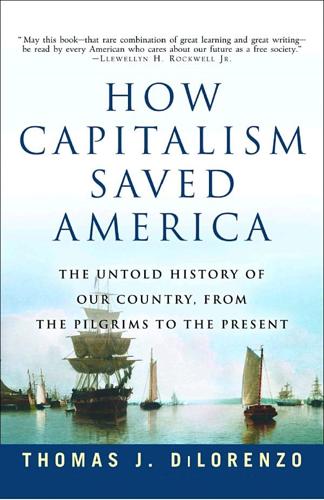
How Capitalism Saved America: The Untold History of Our Country, From the Pilgrims to the Present
by
Thomas J. Dilorenzo
Published 9 Aug 2004
New York: Free Press, 1996. Hood defends capitalism and capitalists against the forces of political correctness who want businesspeople to give away more and more of their (and their shareholders’) money to various liberal political causes in the name of “corporate social responsibility.” He explains in great detail why “corporate social responsibility” is socially irresponsible. Hoppe, Hans-Hermann. The Economics and Ethics of Private Property. Boston: Kluwer Academic Publishers, 1993. A lucid discussion of the ethical and economic case in favor of private property and free-market capitalism. Huber, Peter.
…
Indeed, this result is found so uniformly as to create a puzzle: one would expect to find, in all these studies, at least some government programs that do more good than harm.3 One manifestation of the bureaucratization of American capitalism is that American universities rarely teach anything about the practices or philosophy of entrepreneurship—the kind of entrepreneurship practiced by John D. Rockefeller, James J. Hill, and many other successful capitalists. Instead, schools of business offer numerous courses on “business law,” “administrative law,” and “corporate social responsibility,” which is mostly propaganda on behalf of even more regulation and higher taxation. In other words, American universities devote an inordinate amount of time and resources to teach potential business leaders not how to be capitalists but how to be corporate bureaucrats. This cannot be good for the future of American prosperity.
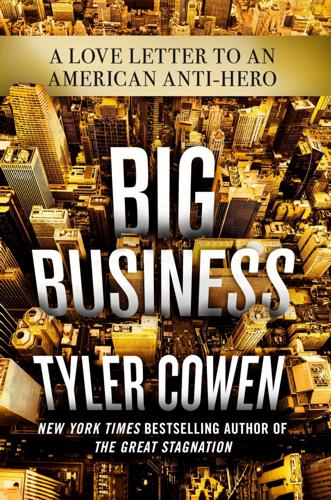
Big Business: A Love Letter to an American Anti-Hero
by
Tyler Cowen
Published 8 Apr 2019
A better way of describing them would be that the board and the executives are “fiduciaries” and that the top executives have a duty to shareholders. On this, see, for instance, Hart and Zingales 2016, which also surveys some of the subsequent literature. Some of the many other relevant writings on corporate social responsibility are Aguinis and Ghavas 2012, a very useful aggregate survey; Marcaux 2017; Guiso, Sapienza, and Zingales 2013; and Lev, Petrovits, and Radhakrishnan 2010. 15. In passing, I should note that my book In Praise of Commercial Culture (2000) covers the history of rock and roll, and my book An Economist Gets Lunch (2012) covers some issues surrounding GMOs.
…
Journal of Consumer Research 34 (December): 468–479. Aggarwal, Pankaf, and Ann L. McGill. 2012. “When Brands Seem Human, Do Humans Act Like Brands? Automatic Behavioral Priming.” Journal of Consumer Research 39 (August): 307–323. Aguinas, Herman, and Ante Glavas. 2012. “What We Know and Don’t Know About Corporate Social Responsibility: A Review and Research Agenda.” Journal of Management 38, no. 4 (July): 932–968. Ales, Laurence, and Christopher Sleet. 2016. “Taxing Top CEO Incomes.” American Economic Review 106 (11): 3331–3366. Alexander, Scott. 2016. “Contra Robinson on Schooling.” Slate Star Codex (blog). December 6, 2016.
…
The Impact of Initial Firm Quality.” NBER Working Paper No. 24104. National Bureau of Economic Research, Washington, DC. Manjoo, Farhad. 2017. “Why Tech Is Starting to Make Me Uneasy.” New York Times, October 11, 2017. Marcaux, Alexei. 2017. “The Power and the Limits of Milton Friedman’s Arguments Against Corporate Social Responsibility.” In Wealth, Commerce, and Philosophy: Foundational Thinkers and Business Ethics, edited by Eugene Heath and Byron Kaldis, 339–380. Chicago: University of Chicago Press. Matthews, Dylan. 2016. “Remember That Study Saying America Is an Oligarchy? 3 Rebuttals Say It’s Wrong.” Vox, May 9, 2016.
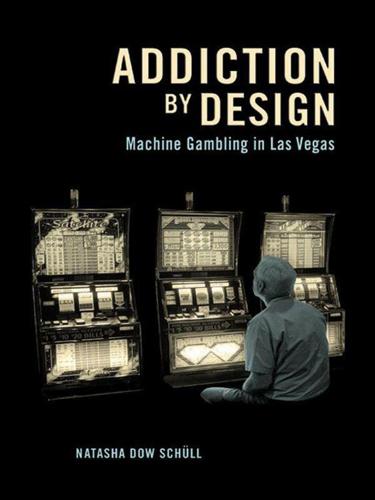
Addiction by Design: Machine Gambling in Las Vegas
by
Natasha Dow Schüll
Published 15 Jan 2012
If [the industry] appears to exist as if it has no conscience, that may make sense, for when I was an addict I had none. Over the past few years, the term Corporate Social Responsibility (CSR for short) has come to stand for the “conscience” to which Schuetz alluded. The G2E meetings added a new panel track of that name the same year that Shaffer held his town hall meeting a few miles down the Strip. “Years ago, Milton Friedman reigned supreme, and just by being a business and turning a profit you were doing what you were supposed to be doing,” remembered the moderator for a panel called “What Is Corporate Social Responsibility?” Yet economic amoralism, he observed, was no longer the state of affairs in business: “The operating environment we’re in now is like none we have ever seen.”
…
Berkeley: University of California Press. Hacking, Ian. 1990. The Taming of Chance. Cambridge: Cambridge University Press. ———. 1998. Mad Travelers Reflections on the Reality of Transient Mental Illnesses. Charlottesville: University Press of Virginia. Hancock, Linda, T. Schellinck, and T. Schrans. 2008. “Gambling and Corporate Social Responsibility (CSR): Re-Defining Industry and State Roles on Duty of Care and Risk Management.” Policy and Society 27: 55–68. Hannigan, John. 1998. Fantasy City: Pleasure and Profit in the Postmodern Metropolis. New York: Routledge. Hanson, Zia, and M. Hong. 2003. “Interview with Ötsch.” In Stripping Las Vegas: A Contextual Review of Casino Resort Architecture, edited by K.
…
consumer protection: Consumer Lifestyle continuous gaming productivity: farcical accounts of; promotion of by the gambling industry; time and energy management techniques for contrived contingency control: adaptive; cybernetic conception of; Deleuzian conception of; as a feature of gambling machines; flexible; illusion of in gambling; loss of in gambling addiction; over chance by gambling industry; over chance through gambling; over gamblers’ affect; over gamblers’ behavior; role of in flow; of self in addiction recovery; of self in responsible gambling; theme of in gamblers’ life stories. See also agency; contrived contingency, control societies. control societies convenience gambling Cooper, Marc coproduction Corporate Gaming Act Corporate Social Responsibility (CSR) Cosgrave, James Courtwright, David Crary, Jonathan credit-based gambling: and the dematerialization of money; regulation of; technologies of Csiksentmihalyi, Mihalyi. See flow. Cummings, Leslie Customer Relationship Management (CRM). See relationship management. customer reward programs.
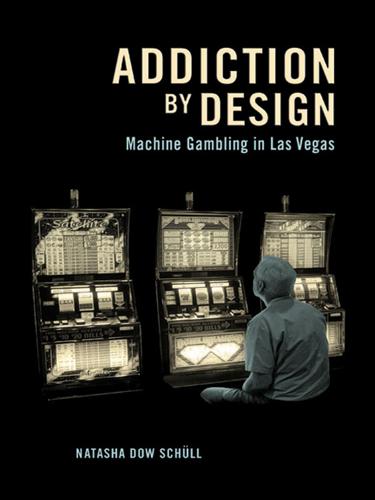
Addiction by Design: Machine Gambling in Las Vegas
by
Natasha Dow Schüll
Published 19 Aug 2012
If [the industry] appears to exist as if it has no conscience, that may make sense, for when I was an addict I had none. Over the past few years, the term Corporate Social Responsibility (CSR for short) has come to stand for the “conscience” to which Schuetz alluded. The G2E meetings added a new panel track of that name the same year that Shaffer held his town hall meeting a few miles down the Strip. “Years ago, Milton Friedman reigned supreme, and just by being a business and turning a profit you were doing what you were supposed to be doing,” remembered the moderator for a panel called “What Is Corporate Social Responsibility?” Yet economic amoralism, he observed, was no longer the state of affairs in business: “The operating environment we’re in now is like none we have ever seen.”
…
Berkeley: University of California Press. Hacking, Ian. 1990. The Taming of Chance. Cambridge: Cambridge University Press. ———. 1998. Mad Travelers Reflections on the Reality of Transient Mental Illnesses. Charlottesville: University Press of Virginia. Hancock, Linda, T. Schellinck, and T. Schrans. 2008. “Gambling and Corporate Social Responsibility (CSR): Re-Defining Industry and State Roles on Duty of Care and Risk Management.” Policy and Society 27: 55–68. Hannigan, John. 1998. Fantasy City: Pleasure and Profit in the Postmodern Metropolis. New York: Routledge. Hanson, Zia, and M. Hong. 2003. “Interview with Ötsch.” In Stripping Las Vegas: A Contextual Review of Casino Resort Architecture, edited by K.
…
consumer protection: Consumer Lifestyle continuous gaming productivity: farcical accounts of; promotion of by the gambling industry; time and energy management techniques for contrived contingency control: adaptive; cybernetic conception of; Deleuzian conception of; as a feature of gambling machines; flexible; illusion of in gambling; loss of in gambling addiction; over chance by gambling industry; over chance through gambling; over gamblers’ affect; over gamblers’ behavior; role of in flow; of self in addiction recovery; of self in responsible gambling; theme of in gamblers’ life stories. See also agency; contrived contingency, control societies. control societies convenience gambling Cooper, Marc coproduction Corporate Gaming Act Corporate Social Responsibility (CSR) Cosgrave, James Courtwright, David Crary, Jonathan credit-based gambling: and the dematerialization of money; regulation of; technologies of Csiksentmihalyi, Mihalyi. See flow. Cummings, Leslie Customer Relationship Management (CRM). See relationship management. customer reward programs.

Food and Fuel: Solutions for the Future
by
Andrew Heintzman
,
Evan Solomon
and
Eric Schlosser
Published 2 Feb 2009
Yet, as we have seen, it has indefinitely delayed in coming through on its promise to change cooking oils. And it has a massive budget to promote energy-dense foods to children. Some food companies devote considerable resources to publicizing healthier new products, hoping perhaps to escape the tidal wave of unhealthy food marketing. Creating the appearance of corporate social responsibility is now a priority, but whether appearance is matched by substance is yet to be determined. As the food industry faces new challenges, we can revisit important lessons learned from the deadly history of another industry, tobacco. Tobacco companies asked for the same privileges food companies now demand, namely, that their promotions be taken at face value.
…
Trade associations, some of the same public relations and advertising agencies formerly used by tobacco, scientists funded by the industry, and of course company spokespersons — all have their parts in the playbook. The key features are as follows: • Introduce products perceived to be healthier. • Publicize corporate social responsibility. • Fund programs focusing on physical activity. • Claim that lack of personal responsibility is at the heart of the population’s unhealthy diet. • Plead that personal freedom is at stake, hence government should not contemplate regulation or legislation. • Vilify critics with totalitarian language, characterizing them as the food police, leaders of a nanny state, even “food fascists,” and accuse them of desires to strip people of civil liberties
…
• State there are no good or bad foods, hence no food or food type (soft drinks, fast foods, and so on) should be targeted for change. • Dispute the science to plant doubt. The first three items in the playbook may have positive consequences, but vigilance is in order. The industry often introduces products that are made to sound healthy. Examples are snacks and drinks with “fruit” in the name. Cynicism about corporate social responsibility is also natural, given the tobacco experience. In 2000, Philip Morris spent $115 million on social causes such as the arts, helping flood victims, and supporting shelters for abuse victims. The company spent $150 million publicizing these acts. The remaining six parts of the script are likely to have negative consequences.

No Such Thing as a Free Gift: The Gates Foundation and the Price of Philanthropy
by
Linsey McGoey
Published 14 Apr 2015
And yet, is a gift from the Gates Foundation to a highly profitable company really the best use of money that, if it had been taxed as income rather than placed in a trust, could have benefited federal or state relief programmes? The cognitive dissonance I’ve described above – the continued insistence that new entrepreneurial movements are playing a revolutionary role in global poverty reduction despite the lack of clear evidence – is the truly distinctive aspect of social entrepreneurship. Unlike ideas of corporate social responsibility which were popular in the 1980s and 1990s – and which often had an aura of expiation about them, implying that socially oriented philanthropy was needed to make amends for corporate abuses – the new social investors believe that business success is evidence of social value. There is no longer any whiff of atonement or reparation for past corporate practices.
…
, Journal of Economic Literature, vol. 20 (1982), 1463–84. 8Christine Letts, William Ryan, and Allen Grossman, ‘Virtuous Capital: What Foundations Can Learn From Venture Capitalists’, Harvard Business Review (March–April, 1997), 36–44; see also Michael Moran, Private Foundations and Development Partnerships: American Philanthropy and Global Development Agendas (London: Routledge, 2013). 9Porter and Kramer, ‘Philanthropy’s New Agenda’, 121–30. 10Zunz, Philanthropy in America, 21. 11Michael E. Porter and Mark R. Kramer, ‘The Competitive Advantage of Corporate Philanthropy’, Harvard Business Review (December 2002), 5–16. 12Michael Porter and Mark Kramer, ‘Strategy and Society: The Link Between Competitive Advantage and Corporate Social Responsibility, Harvard Business Review (December 2006). For a critical analysis of their argument, see Mark Aakhus and Michael Bzdak, ‘Revisiting the Role of “Shared Value” in the Business-Society Relationship’, Business & Professional Ethics Journal, vol. 31, no. 2 (2012), 231–49. 13Steve Denning, ‘Why “Shared Value” Can’t Fix Capitalism’, Forbes, 20 December 2011.
…
, Al Jazeera, 16 September 2011, aljazeera.com. 36Tom Paulson, ‘Behind the Scenes’, Humanosphere.com, 14 February 2013; see also Robert Fortner, ‘How Ray Suarez Really Caught the Global Health Bug’, Columbia Journalism Review, 7 October 2010. 37Alastair Greig, David Hulme, and Mark Turner, Challenging Global Inequality: Development Theory and Practice in the 21st Century (Basingstoke: Palgrave Macmillan, 2007). 38Ibid., 160. 39Claire Provost, ‘$500m of US Food Aid Lost to Waste and Company Profit, Says Oxfam’ Guardian, 20 March 2012. 40See Barder’s blog post, ‘Wasting Food Aid’, 19 November 2012, owen. org. 41See Michael Robinson, ‘Tax Avoidance: Developing Countries Take on Multinationals’, BBC, 24 May 2013, bbc.co.uk. Work by Prem Sikka, Richard Murphy, and John Christensen offers most rigorous academic scholarship on tax avoidance and its social costs. See Prem Sikka, ‘Smoke and Mirrors: Corporate Social Responsibility and Tax Avoidance’, Accounting Forum, vol. 34 (2010), 153–68; John Christensen and Richard Murphy, ‘The Social Irresponsibility of Corporate Tax Avoidance: Taking CSR to the Bottom Line’, Development, vol. 47, no. 3 (2004), 37–44; and Nicholas Shaxson and John Christensen, The Finance Curse: How Oversized Financial Sectors Attack Democracy and Corrupt Economics (Margate: Commonwealth Publishing, 2013). 42Nikolaj Nielsen, ‘EU Multinationals Scamming Africa out of Billions, Tanzanian MP Says’, EU Observer, 31 October 2013, euobserver.com. 43See Joshua Keating, ‘Feud Watch: Dambiso Moyo Responds to Being Called “Evil” by Bill Gates’, Foreign Policy, 5 June 2011. 44Claire Provost, ‘Bill Gates and Dambisa Moyo Spat Obscures the Real Aid Debate’, Guardian, 31 May 2013.

AI Superpowers: China, Silicon Valley, and the New World Order
by
Kai-Fu Lee
Published 14 Sep 2018
Fink referenced automation and job retraining multiple times in his letter. As an investor with interests spanning the full breadth of the global economy, he sees that dealing with AI-induced displacement is not something that can be left entirely up to free markets. Instead, it is imperative that we reimagine and reinvigorate corporate social responsibility, impact investing, and social entrepreneurship. In the past, these were the kinds of things that businesspeople merely dabbled in when they had time and money to spare. Sure, they think, why not throw some money into a microfinance startup or buy some corporate carbon offsets so we can put out a happy press release touting it.
…
The ecosystem will likely be staffed by older VC executives who are looking to make a difference, or possibly by younger VC types who are taking a “sabbatical” or doing “pro bono” work. They will bring along their keen instincts for picking entrepreneurs and building companies, and will put them to work on these linear service companies. The money behind the funds will likely come from governments looking to efficiently generate new jobs, as well as companies doing corporate social responsibility. Together, these players will create a unique ecosystem that is much more jobs-focused than pure philanthropy, much more impact-focused than pure venture capital. If we can pull together these different strands of socially conscious business, I believe we’ll be able to weave a new kind of employment safety net, all while building communities that foster love and compassion.
…
Renren, 42–43 lean startup methodology, 44–45 Ma, Jack, and, 34–37 search habit divergence and, 37–38 Silicon Valley and, 22–25, 28, 30–34, 39–40, 49 Wang Xing and, 22–24, 26, 31, 32–33, 42, 46–49 War of a Thousand Groupons, 45–49 Zhou Hongyi and, 40–42 corporate oligarchy, 171 corporate research and proprietary technology, 91–92 corporate social responsibility, 216–17 craftsmanship, 229 credit industry, 10–11, 110, 112–13, 116 crime disruption, 75 Cultural Revolution in China, 33 Cybersecurity Law in China, 125 D Daimler, 135 data age of, 14, 18 AI algorithms and, 14, 17, 56, 138 AI-rich countries and, 168–69 businesses and, 110–11 China’s abundance of, 15, 16, 17, 50, 55–56, 73, 79 collection of, and privacy, 124–25 deep learning and, 14, 17, 19–20, 56 internet companies and, 107–8 medical diagnosis and, 114 from mobile payments, 77 neural networks and, 9 pattern-finding in, 10 private, 124–25 self-driving cars and, 131–32, 133 structured, 111–12 Deep Blue, 4, 5 deep learning AI revolution and, 5, 12–13, 25, 92, 94, 143 business AI and, 111 data and, 14, 17, 19–20, 56 Google and, 92 history of, 6–10 implementation of, 12–14, 86 machine perceptual abilities and, 166 next, 91–92, 94 pattern-finding and, 10–11, 13, 166–67 rapid progress of, 161 DeepMind AI in United Kingdom and, 169 AlphaGo and, 2, 11 AlphaGo Zero and, 90 Google and, 2, 11, 92 iFlyTek compared to, 105 publishing by, 91 reinforcement learning and, 143 Deng Xiaoping, 28 desktop computers, 96 Dianping (Yelp copycat), 48, 49, 71–72 Didi four waves of AI and, 106 going heavy, 72–73 self-driving cars and, 131 services using model of, 213–14 Uber and, 40, 68–69, 79, 137 Didi Chuxing, 68–69, 70 discovery to implementation, transition from, 13, 15 Disneyland replica in China, 31 Disruptor (Zhou), 42 DJI, 130–31 domestic workers, 130 drones, autonomous, 130–31, 136, 167–68 dual-teacher model, 122 dystopians vs. utopians, 140–44 E EachNet, 35 Eat24, 72 eBay, 35–37, 39 economy and AI, 144–73 competition and, 106 deep-learning breakthroughs and, 4–5 general purpose technologies (GPTs), 148–55 global economic inequality, 146, 168–70, 172 intelligent vs. physical automation, 167–68 job loss, two kinds of, 162–63 job losses, bottom line, 164–65 job loss studies, 157–61 jobs and inequality crisis, 145–47 machine learning as driver, 25, 84, 91, 94–95 monopolies, 20, 96, 168–69, 170–71 psychological crisis, 5, 21, 147, 173–74 risk of replacement, 155–57 science-fiction visions and, 144–45 techno-optimists and the Luddite fallacy, 147–48 unemployment.

Black Code: Inside the Battle for Cyberspace
by
Ronald J. Deibert
Published 13 May 2013
See Matthew Lasar, “Thai Censorship Critic Strikes Back at Snitch Web Host,” Ars Technica, August 29, 2011, http://arstechnica.com/business/2011/08/thai–dissident-strikes-back-at-snitch-web-host/. The OpenNet Initiative has documented Thailand’s cyberspace controls in “Thailand,” in Access Contested, eds. Ronald Deibert et al., 271–298. 5 The Chinese government requested information: Rebecca MacKinnon discusses corporate social responsibility in the case of Yahoo! and Shi Tao in Shi Tao, Yahoo!, and the Lessons for Corporate Social Responsibility, Version 1.0, December 20, 2007, http://rconversation.blogs.com/YahooShiTaoLessons.pdf. 6 numerous demands by governments to eavesdrop on users: Christopher Parsons investigates BlackBerry security, and government requests for its decryption keys, in “Decrypting Blackberry Security, Decentralizing the Future,” Technology, Thoughts, and Trinkets, November 29, 2010, http://www.christopher-parsons.com/blog/technology/decrypting-blackberry-security-decentralizing-the-future.
…
In The Master Switch: The Rise and Fall of Information Empires (New York: Random House, 2010), Tim Wu shows how all previous innovations of the information industry have followed a single path from being open and widely accessible to being dominated by a single corporation or cartel, and warns that the Internet may one day also follow this path of development. 3 Its vigorous opposition to the SOPA and PIPA bills: The Stop Online Piracy Act (SOPA) and the Protect IP Act (PIPA) aim to curtail online copyright violations by granting the U.S. government new tools and powers to block users’ access to websites that sell copyright-infringing or counterfeit goods. 4 “unprecedented synthesis of corporate and public spaces”: Steve Coll’s New Yorker essay “Leaving Facebookistan” (May 24, 2012) is available at, http://www.newyorker.com/online/blogs/comment/2012/05/leaving-facebookistan.html. 5 social media are less like town squares: On private policing of online content, see Jillian C. York, “Policing Content in the Quasi-Public Sphere,” OpenNet Initiative, September 2010, http://opennet.net/policing-content-quasi-public-sphere. 6 they have had to balance the desire to penetrate markets: On corporate social responsibility, see John Palfrey and Jonathan Zittrain, “Reluctant Gatekeepers: Corporate Ethics on a Filtered Internet,” in Deibert et al., eds., Access Denied, 103–122. See also Colin M. Maclay, “Protecting Privacy and Expression Online: Can the Global Network Initiative Embrace the Character of the Net?
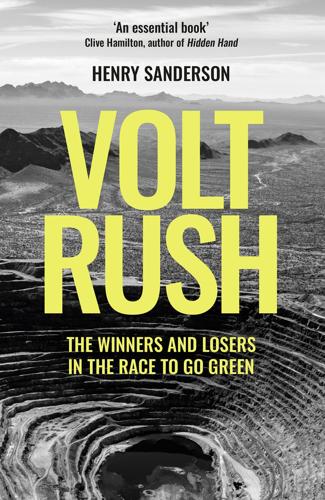
Volt Rush: The Winners and Losers in the Race to Go Green
by
Henry Sanderson
Published 12 Sep 2022
Apple immediately suspended Huayou from its supply chain pending an investigation, despite the fact that Apple employees were not allowed to visit the Congo to investigate the supply chain themselves due to company rules. There was no other option for Huayou but to clean up its act. The company appointed Lee as head of Corporate Social Responsibility, a new department and a new position, and formed a Corporate Social Responsibility Working Committee. It claimed that it wanted to be ‘a world leader in ethical sourcing’. It undertook a mapping of its supply chain and conducted an audit, done by an American woman, Liz Muller, whose company was called Liz Muller LLC. It spruced up its website, and set Lee to travel the world to give talks.
…
While little is known about the effects of prenatal exposure on birth outcomes, the study was conclusive: ‘Paternal occupational mining exposure was the factor most strongly associated with birth defects,’ it said.8 The mothers of both the case and control group were found to have ‘metal concentrations that are among the highest ever reported for pregnant women’. * Travelling at 279 kilometres per hour from Shanghai on the high-speed train, in early 2019 I visited Huayou’s factory in the town of Quzhou, which is well known for its chemical industry. I travelled with Bryce Lee, who had been given the new position of head of corporate social responsibility at the company. Lee joined Huayou in 2005 after teaching English to the chief executive’s nephew in the company’s headquarters in Tongxiang. He told me about his experiences of the Congo on the quiet train as we raced through the rain-soaked paddy fields of central China, showing me pictures on WeChat.
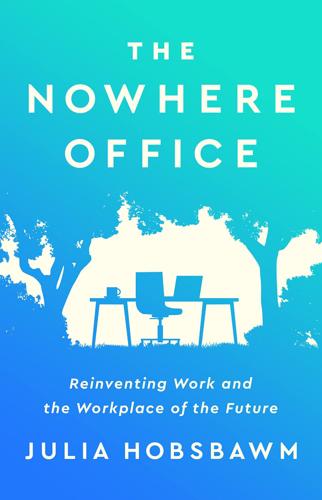
The Nowhere Office: Reinventing Work and the Workplace of the Future
by
Julia Hobsbawm
Published 11 Apr 2022
But that doesn’t mean people feel comfortable knowing others are suffering. A sense of fairness is very evident and growing. Forty-seven per cent of Americans now own shares in the private companies where they work and 72 per cent say they would prefer to work for an employee-owned organisation.5 The ‘purpose agenda’ – the new name for ‘corporate social responsibility’, which ends ‘shareholder primacy’ and instead addresses questions specifically around sustainability and climate change, supply chain fairness and equality and diversity in the workplace – is driving everything from consumer tastes to employee expectations.6 A workplace has to be identified with fairness or it will be identified with the opposite and drive away the ‘talent’ it wants to recruit and retain.
…
By 2019, 200 of the world’s top corporations announced a new commitment to going beyond pure profit in the Business Roundtable.11 This new sensibility was echoed by a major project funded by the British Academy, one of the more august bodies furthering research in the humanities and social sciences, called ‘Future of the Corporation’, which, it ambitiously claimed, ‘lies at the heart of the future of capitalism, the future of humanity and the future of our planet’.12 Purpose had replaced corporate social responsibility as the byword for a more inclusive and mindful response to what workers and consumers want. Purpose has become, to echo Gloria Steinem’s feminist rallying cry of the 1970s, both personal and political. It is a starker moment of transformation of our attitudes to work than we’ve seen since the Optimism Years, which frames the beginning of this period of work.
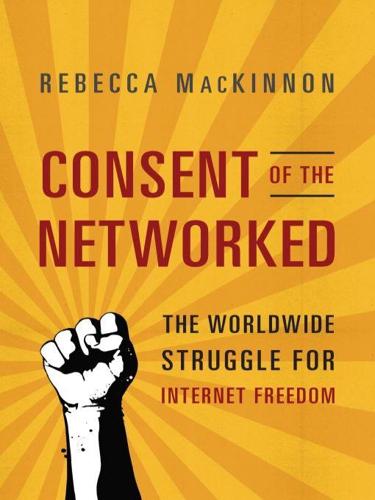
Consent of the Networked: The Worldwide Struggle for Internet Freedom
by
Rebecca MacKinnon
Published 31 Jan 2012
Business has a long-term incentive to operate more sustainably: a company that contributes to a toxic environment and an unhealthy society might make its shareholders richer in the short run, but in the long run it cannot thrive at the expense of its customers, its employees, and the communities and countries where it operates. Millions of companies worldwide have embraced this notion to varying degrees by building corporate social responsibility (CSR) and sustainability strategies into the way they run their businesses. A growing number of investors are rewarding companies for moving in this direction. By 2010 the amount of assets held by US investors in some form of socially responsible investment funds, which choose stocks based on at least some criteria for sustainable and socially responsible business practices, had reached $3.07 trillion out of a total of $25.2 trillion in the US investment marketplace.
…
By 2010 the amount of assets held by US investors in some form of socially responsible investment funds, which choose stocks based on at least some criteria for sustainable and socially responsible business practices, had reached $3.07 trillion out of a total of $25.2 trillion in the US investment marketplace. A range of UN agencies, financial institutions, and nongovernmental groups have developed systems to benchmark companies based on various criteria for corporate social responsibility or sustainability. Meanwhile, a growing number of multinationals are moving beyond CSR programs to identify untapped business opportunities around growing public demand for cleaner, healthier, and more sustainable lifestyles in ways that can become a source of competitive advantage and improve the world at the same time.
…
CHAPTER 9: DO NO EVIL 131 In April 2011, Mike Lazaridis, co-CEO of Research in Motion (RIM), maker of BlackBerry, sat down for an interview with the BBC’s Rory Cellan-Jones: Full video of the exchange is at http://news.bbc.co.uk/2/hi/programmes/click_online/9456798.stm (accessed June 27, 2011). 133 Shi Tao: For a detailed account and list of sources related to the Shi Tao case and Yahoo, see Human Rights Watch, Race to the Bottom: Corporate Complicity in Chinese Internet Censorship, 2006, www.hrw.org/reports/2006/china0806; and Rebecca MacKinnon, “Shi Tao, Yahoo!, and the Lessons for Corporate Social Responsibility,” working paper, December 27, 2007, http://rconversation.blogs.com/YahooShiTaoLessons.pdf. 136 the year Microsoft launched MSN Spaces in China, 2005, was also the year the Chinese blogosphere exploded: For a detailed account of the evolution of the Chinese blogosphere and government controls, see Rebecca MacKinnon, “Flatter World and Thicker Walls?
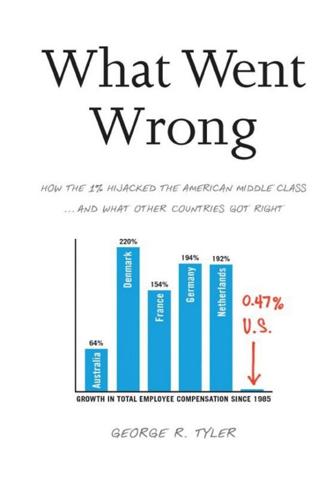
What Went Wrong: How the 1% Hijacked the American Middle Class . . . And What Other Countries Got Right
by
George R. Tyler
Published 15 Jul 2013
Bowen, and Frank Abrams were criticized by others including Theodore Levitt and later Milton Friedman. There is a rich literature on this topic from Forest L. Reinhardt, Robert N. Stavins, and Richard H.K. Vietor, among others. “Corporate Social Responsibility Through an Economic Lens,” Review of Environmental Economics and Policy, vol. 2, issue 2, Summer 2008. Archie B. Carroll and Kareem M. Shabana, “The Business Case for Corporate Social Responsibility: A Review of Concepts, Research and Practices,” International Journal of Management Reviews, British Academy of Management, 2010. E. Merrick Dodd, Jr., “For Whom Are Corporate Managers Trustees?
…
,” Harvard Law Review, vol. 45, no. 7, May 1932, 1145– 1163. Adolf A. Berle, “Corporate Powers as Powers in Trust,” Harvard Law Review, 1931, 44:1049–1074. H. Bowen, Social Responsibility of the Businessman (New York: Harper and Row, 1953). Archie B. Carroll, A History of Corporate Social Responsibility: Concepts and Practices. The Oxford Handbook of Corporate Social Responsibility, A. Crane, A. McWillliams, D. Matten, J. Moon, and D. Siegel, editors (Oxford Handbooks online, Feb. 14, 2008). *Floyd Norris, “Inside GE, a Little Bit of Enron,” the New York Times, August 7, 2009. Batting 0-2, Fortune also named Enron America’s most innovative firm for six consecutive years from 1996–2001.
…
Fuerst, “Does Good Corporate Governance Include Employee Representation? Evidence from German Corporate Boards,” Journal of Financial Economics vol. 82 (December 2006), 7. 17 Louis Uchitelle, “2 US Social Scientists Share Nobel in Economics,” New York Times, Oct. 13, 2009. 18 Forest L. Reinhardt, Robert N. Stavins, and Richard H.K. Vietor, “Corporate Social Responsibility Through an Economic Lens,” Review of Environmental Economics and Policy vol. 2, issue 2 (Summer 2008). 19 As reported by Stefan Stern, “Dean Poised to Shake Up Business,” Financial Times, May 10, 2010. 20 John Gapper, “Business Should Help the Heartland,” Financial Times, March 7, 2012. 21 Michael Skapinker, “Should MBA Students Do the Perp Walk?

The New Snobbery
by
David Skelton
Published 28 Jun 2021
This partnership also meant that profits would be reinvested in the workforce and spent in ways that made the company stronger in the long term. Now, this social contract seems terribly one-sided, with the bulk of profits being returned to shareholders and executives rather than invested more productively. A veneer of ‘corporate social responsibility’ cannot obscure the fact that too much of the modern economy neglects productive investment and has seen the workforce move from being partners in the economy to a secondary consideration. Too little emphasis has been given to the obligation that businesses have beyond those to shareholders.
…
Second, it would allow lending decisions to be made by people with a real understanding of the needs of the local area, rather than by a desiccated London-based banker or an even more desiccated algorithm. Third, it would allow local banks to play a fully active role in their local and regional communities. Rather than national banks using a fig leaf of a ‘corporate social responsibility’, regional and local banks could be fully engaged in communities that they are actually a part of and help to provide the finance and support that these communities need. 7. Repairing the Dignity of Work The building of a strong, vibrant economy in those places that have long been left behind was what so many voted for when they protested against the existing economic settlement in 2016, and when they broke with generational voting habits in 2019.

We Are All Fast-Food Workers Now: The Global Uprising Against Poverty Wages
by
Annelise Orleck
Published 27 Feb 2018
The global uprisings chronicled in this book, and the broad coalitions they have generated, have chipped and cracked the gospel of free trade. Increasingly, global companies have been forced to at least pay lip service to the idea of corporate social responsibility, if only because the public is now paying attention to worker deaths, child labor, and wage theft. And that damages global brands. The proliferation of corporate social responsibility codes since 2010 may be seen as mostly an attempt to repair companies’ public image, but that doesn’t mean they have done no good. Nike, Gap, H&M, and other global companies who have been targeted by protesters and boycotts have made real improvements in their supply chains in response to pressure.
…
Opening a unionized garment shop with a livable wage and decent conditions was unprecedented in the modern global apparel trade, says Scott Nova, founder and director of the Worker Rights Consortium. WRC, which investigates and certifies labor conditions worldwide, said that despite “a vast proliferation of ‘corporate social responsibility programs’ . . . no major apparel brand is doing what Knights Apparel is doing at the Alta Gracia factory.”19 Knights CEO Joe Bozich says personal tragedy moved him to create a new model for garment manufacturing. In one short period, he lost family members in their twenties and thirties, two of his children faced death, and he was diagnosed with multiple sclerosis.
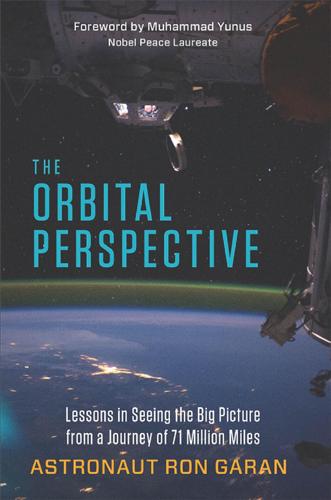
The Orbital Perspective: Lessons in Seeing the Big Picture From a Journey of 71 Million Miles
by
Astronaut Ron Garan
and
Muhammad Yunus
Published 2 Feb 2015
Therefore, by reducing those social woes we greatly reduce the negative effects of disasters when they occur. Living in the worm’s eye view means putting the focus on the quarterly report, whereas the orbital perspective focuses on the twenty-year plan and beyond. The worm’s eye view treats corporate social responsibility as a tool to prop up a brand’s image, placing more emphasis on advertising social good than on contributing to that good. The orbital perspective makes the creation of social good a core business tenet throughout the entire organization, meaning the social, environmental, and ethical aspects of every business decision are carefully considered.
…
The contribution a person makes, and his or her response to this call to action, is a personal decision. For me, it involves continuing to work in the development field and continuing to advocate for the pieces of the puzzle that I feel are critical, such as social business, social enterprise, and improved corporate social responsibility practices. It also involves looking for ways to apply the orbital perspective to existing and developing conflict resolution efforts. I am convinced that, rather than exclusively putting time and energy into projects I am personally involved with, I can make a much bigger impact by helping to propel the good that others are doing.
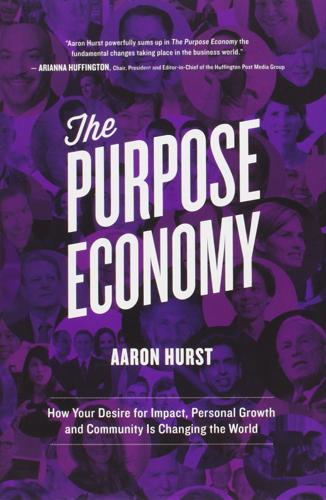
The Purpose Economy: How Your Desire for Impact, Personal Growth and Community Is Changing the World
by
Aaron Hurst
Published 31 Aug 2013
A generation of Purpose Economy pioneers, like Whole Foods Market’s John Mackey and Virgin’s Richard Branson, are challenging others to follow their lead and to create new frameworks both to do well and to do good, which raises the bar for the business community and turns successful theories into movements. Richard Branson launched the B Team, a coalition aiming to go beyond traditional corporate social responsibility, and instead embrace what they call Plan B: “a plan that puts people and the planet alongside profit.” John Mackey and his team are promoting a new model for business he calls Conscious Capitalism, which inspired his book of the same name. Other large corporations have shown signs of new, purpose-focused frameworks as well.
…
As they came of age, the environmental movement was going mainstream; pioneering social entrepreneurs were popularizing the idea of “doing well by doing good,” with forerunners like Paul Hawken of Smith & Hawken, Ben & Jerry’s, and Anita Roddick of the Body Shop popularizing a new ethic of corporate social responsibility. Meanwhile, celebrities like Matt Damon, Angelina Jolie, and George Clooney were popularizing a new ethic of individual engagement, making it cool to be socially engaged. The excesses of Wall Street, the dot-com boom and bust, and the mentality that “greed is good” began to change the scope of the American Dream for many Millennials coming of age.
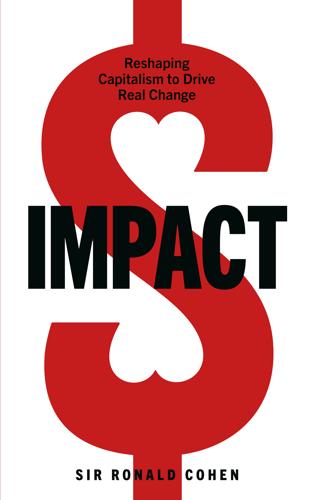
Impact: Reshaping Capitalism to Drive Real Change
by
Ronald Cohen
Published 1 Jul 2020
It should come as no surprise then that companies with B Corp certification are often better able to attract talented employees.28 Millennials make up half of the American workforce.29 According to the 2016 Cone Communications Millennial Employee Engagement Study, 75 per cent of them say they would take a pay cut to work for a responsible company, versus 55 per cent of non-millennials.30 But what does becoming a responsible business actually mean? What distinguishes a company that is responsible to multiple stakeholders from a shareholder-focused company that donates money to a few charitable causes? And how does an impact-oriented business differ from a traditional one that engages in philanthropy through its corporate social responsibility (CSR) budget? Michael Porter, professor of strategy at Harvard Business School and a leading thinker on the role of impact in business, lays out a clear vision of what he calls ‘shared value’:31 ‘While philanthropy and CSR focus efforts on “giving back” or minimizing the harm business has on society, shared value focuses company leaders on maximizing the competitive value of solving social problems,’ whether that be through ‘new customers and markets, cost savings, talent retention, and more’.32 Businesses that take CSR seriously generally do so to demonstrate corporate citizenship – they are giving away a portion of their profits rather than fundamentally changing the way they do business.
…
Aboyeji, Iyinoluwa ‘E’ 48 ABP (Dutch civil service pension fund) 74 accelerators, start-up 175–7, 197 Accenture 90 Access Foundation 175 accounts, impact-weighted financial v, 29–30, 67, 84, 107–17, 159, 183, 186, 190–1, 201 Acumen 84 Adidas 93, 101–4, 107 Adidas x Parley 102–3 Adie 162–3 Africa 1, 27, 39, 48, 49, 83, 84, 136, 148, 167–8 agriculture 36, 45–6, 78, 83, 84, 94–5 Ahrens, Andreas 105 Ailman, Christopher 77–8 Align17 80 Aliko Dangote Foundation 136 Alpert, Sharon 145 Amazon (online retailer) 14 Andela 46, 47–9 AOL 15, 48 Apax Partners 1, 2–3, 15, 18, 35, 174–5 AP funds (pension fund) 74 APG (pension fund) 73 Apple 14, 15, 77 Apposite Capital 142 Argentina 125, 164, 173, 176, 177 artificial intelligence (AI) 39, 40 Ashoka 58, 59 Asian Women’s Impact Fund 144 asset classes 7, 13, 27, 67, 187, 191 asset management 33, 63, 64, 65, 69, 70, 71, 72, 73, 74, 79–85, 172 Ather Energy 56 Australia 6, 22, 40, 124, 158, 176, 204 Avanath 143 Aviram, Ziv 40 Avishkaar 84 Bain Capital 81 Baldinger, Michael 79 Ballmer, Steve 127 Bangladesh 94 Bank of America 81, 115 Bank of Palestine 163 Bannick, Matt 148 Barby, Clara 29 Barclays 169 Bassa, Naim 39–40 Bayer 150 B Corp (Benefit Corporation) 57, 92, 96, 149, 177, 189, 197 Bedouin community, Israel 52–3, 163 Beijing, US embassy 28 Ben & Jerry’s 57 Bertelsmann Stiftung 153 Bhatia, Amit 7 Big Lottery Fund 175 Big Society Capital (BSC) v, 19, 72, 76, 160, 169–70, 171–2, 175 Big Win, The 136 Bill and Melinda Gates Foundation 149–50 Strategic Investment Fund (SIF) 149–50 biodiversity loss 16 biotechnology 45 BlackRock 32, 62, 82 Blair, Tony 160, 179 B Lab 56–7, 107 blended finance 197 Blood, David 19, 26, 49, 82 Blue Orchard Finance 80, 145 BNP Paribas 163 Bolton, Emily 20 Bombas 54 bond markets 71, 191 Bono 79 BP 111 Branson, Richard 88 Brazil 7, 41, 42, 94, 160–1, 177 Bridges Fund Management v, 18–19, 29, 53, 83, 125, 126, 127, 165 Bridges Ways to Wellness SIB 126 British Asian Trust 27, 137, 191 Brodin, Jesper 104, 106 Brown, Gordon 25, 27, 136, 179 B Team 88 Buffet, Warren 117 Burberry 54 Business for Inclusive Growth 88 Business Roundtable 87–8 Buycott 89–90 Cabinet Office 160, 161, 169 California Public Employees’ Retirement System (CalPERS) 76, 77 California State Teachers’ Retirement System (CalSTRS) 77–8 Calouste Gulbenkian Foundation 144, 153 Cameron, David 6, 19, 160, 169, 179 Camfed 137 Canada 6, 124, 144, 158, 160, 171 Capital Impact Partners 143 capitalism 3, 4, 5, 82, 117, 146, 148, 154, 181, 182, 186, 191, 193, 194, 200 impact capitalism 4, 180, 181–94, 200 see also impact investment Capricorn Investment Group 149 carbon emissions 18, 36, 55–6, 62, 66, 74, 76, 83, 90, 91, 97, 105, 106, 107, 111, 112–13, 139, 149 Carlyle Group 81 Carney, Mark 106–7 Cartigny, Gerald 73 Casa de Depositi e Prestiti (CDP) 171 Case, Steve 48, 52 Catalyst Strategies initiative 167 catalytic capital 151 Catalytic Capital Consortium 151–2 CDC (UK’s development finance institution (DFI)) 167 Central Outcome Funds 165–6 Chang, Alan 149 Chan, Priscilla 48–9, 151 Chan Zuckerberg Initiative (CZI) 48–9, 151 Charities Act (2016) 141 Charles, Prince 21–2, 191 Chiang, John 77 Children’s Investment Fund Foundation 132 Chobani 93, 98–101, 107 Clevedon Pier 173 Climate Action 100+ 76 climate change 16–17, 28, 45, 66, 73, 74–5, 76, 77, 81, 95, 104, 105, 106, 107, 139, 177, 191 Coca-Cola 90, 91, 110–11 Commission on Unclaimed Assets (2005–7) 19, 169 Community Interest Companies (CIC) 57 Cone Communications Millennial Employee Engagement Study (2016) 92 Conservative Party 160, 179 Consumer Goods Forum, Berlin (2017) 86–7, 97 contraceptive implants 150 coronary heart disease 113 corporate social responsibility (CSR) 92–3, 96 corporation, redefining purpose of 57, 87–8, 93 see also benefit corporation CRE Venture Capital 49 credit 43–4, 80, 83, 95, 144, 163 Crédit Agricole 95 crop production 45–6 CureVac 150 Daimler AG 112 Danone 57, 86, 87, 91, 93, 94–8, 107 David and Lucile Packard Foundation 144 DBL Partners 83–4 Delaney, John 179 Department for International Development (DFID) 137, 167, 168 Department for Work and Pensions (DWP) 164 Designated Utilization Foundation 170 development aid 134, 136, 166–8, 198 Development Finance Institutions (DFI) 166, 167, 198 DIBs (Development Impact Bonds) 8, 27, 68, 80, 124, 130–5, 137, 138, 153, 157, 163, 165, 167–8, 184, 198, 203, 204 Dimon, Jamie 87 dormant accounts 170, 171, 198, 205 Dormant Account Utilization Bill (2016), US 170 Dormant Assets Commission, UK 170 ‘double bottom line’ investment strategy 83–4 Dove 90, 91 Drayton, Bill 58 driverless cars 39, 40 drones 37–9, 149 Dutch SDG Investing Agenda 73 Dyson, Tasha 126 Eccles, Toby 20 Echoing Green 58–9 Edmond de Rothschild Foundation 153 Educate Girls Development Impact Bond 80, 132–4, 137 Education Commission 27, 134, 136 Education Outcomes Funds 26–7, 136, 148 Education Outcomes Fund for Africa and the Middle East (EOF) 136, 148 electric vehicles 55–6 ELMA 136 Elvis & Kresse 54–5 emerging markets 7, 13, 131, 167 Employee Retirement Income Security Act (ERISA) 157 Endeavor 59 endowment 9, 138–46, 149, 152, 153, 173, 187, 188, 202, 204 entrepreneurship 3, 4, 5, 9, 14, 15, 17, 31, 33, 83, 131, 146, 153, 154, 156, 158, 174, 175, 176, 177, 178, 183, 186, 191, 193, 194, 197 age of impact entrepreneurship 34–61, 188–9 government support for 60, 70, 174–5, 176, 177, 178 micro-entrepreneurs 83 social entrepreneurship 8, 19, 21, 82, 137, 144, 148., 176–7 tech entrepreneurship 5, 17, 55, 61, 138 environmental challenges 3, 4, 5, 8, 9, 12–13, 16, 17, 18, 27, 32, 181–2, 183, 191, 192, 193, 194, 197, 198, 199, 200, 201, 202, 203, 205 asset management and 83, 84 B Lab and 56–7 business and 88, 89, 90, 93, 97, 101, 102, 107, 108, 109–13, 114, 116 climate change 16–17, 28, 45, 66, 73, 74–5, 76, 77, 82, 95, 104, 105, 106, 107, 139, 177, 191 government and 154, 156, 159, 162, 163, 164, 166, 171, 172, 174, 176, 177–8, 179 green bonds 63, 173, 191, 199 impact philanthropy and 121, 131, 138, 139, 140, 141, 142, 143, 153 measuring impact on 28 pension funds and 72, 78 SDGs and see United Nations: Sustainable Development Goals SIBs and 68 Environmental Sustainable Governance (ESG) 63, 64, 70, 71, 72, 75, 76, 77, 78–9, 80, 81, 82, 83, 115, 145, 159, 187, 190, 198–9, 200, 203, 205 Esmée Fairbairn Foundation 23 European Bank for Reconstruction and Development 163 European Union 1, 6, 159–60, 171, 173, 176 Everplans 47 externalities 28 Exxon Mobil 111 Faber, Emmanuel 86–7, 94, 95, 96, 97 Facebook 14, 48, 83 family offices 71, 81, 146 Fawcett, Mark 74–5 FC United of Manchester 172–3 Ferrari, Sara 81 fiduciary duty 75, 145, 199 financial crisis (2008) 158–9, 185–6 financial markets, size of 71 Fink, Larry 33, 62, 82 Fink, Lord (Stanley) 19 Finland 124, 163 Fintech 42–5, 199 Flint, Michigan water crisis 54 FMO (Dutch development finance institution) 163 Fondece 176 Ford 111–13, 136, 140, 142–4, 153 Foundation 140, 142–4, 153 France 1, 6, 22, 58, 63, 75–6, 86, 88, 95, 124, 158, 159, 160, 161, 162–3, 173–4, 175–6, 177, 184, 187, 204–5 Francis, Pope 6 Freedom Bakery, Glasgow 172 Friedman, Milton 185 FTSE Blossom Japan Index 78 Fusion Housing SIB, The 126–7 Gates, Bill 55, 149–50 Gaudio, Paul 103 G8 Social Impact Investment Taskforce (G8T) v, 6, 7, 148, 160, 235 gender bond 191 generally accepted accounting principles (GAAP) 110, 115, 117 generally accepted impact principles (GAIP) 110, 114 General Mills 113 General Motors 112 Generation Investment Management 49–50, 82–3 Georgieva, Kristalina 68 Ghislane 37 Giddens, Michele 18 Gilbert, Jay Coen 108 Glencore 76 Global Family Office Report (2017) 81 Global Impact Investing Network (GIIN) 108 Global Impact Investing Rating System (GIIRS) 108 globalization 13, 16 Global Reporting Initiative (GRI): Sustainability Reporting Standards 108 Global Steering Group for Impact Investment (GSG) v, 7, 27, 29, 109, 136, 148, 158, 171, 206 Global Value Exchange 31, 162 Goldberg, Randy 54 Goldman Sachs 80, 127 Goldstein, John 80 Google 14, 49 Gore, Al 28, 49, 83 government 3–4, 30–1, 70, 154–80, 189–90 how impact investment can help governments do their job 155–8 local government 26, 125–6 measuring and valuing impact of 30–1 nine things for governments to do 158–77 Government Pension Investment Fund (GPIF), Japan 78 Grameen Danone Foods Social Business Enterprise 94–5 Great Depression vii, 185 green bond 63, 173, 191, 199 G7 166 gut microbiome, human 45 Guy’s and St Thomas’ Charity 142 GV (formerly Google Ventures) 49 Haas School of Business, University of California, Berkeley 51 Harrison, Peter 64 Harvard Business School 2, 25, 26, 29, 92–3, 109 Hawkes, Richard 191 Hayes, Lisa 40 Heath, David 54 hedge funds 13 Heron Foundation 139, 145 Hewlett Foundation 137, 153 high-net-worth individuals (HNWIs) 70, 71, 81, 145, 200 high-sustainability investments 74 Hines, Luke 39–40 Hohn, Sir Christopher 66 homelessness 30, 31, 54, 124, 125, 126, 127, 166, 170 Horn, Bernard 20 Houlahan, Bart 108 HSBC 75, 169 Hulme, Philip 19 Husain, Safeena 132 Hutchison, David 20 IBM 47, 189 IKEA 93, 103, 104–6, 107 impact capitalism 4, 180, 181–94, 200 impact economies 68, 85, 155, 157, 159, 161, 178, 180, 184, 186, 192, 200 impact investment birth/origins of 17–28 business, embedding in 86–117 defined 11–13 entrepreneurs, rising generation of 34–61 future of 9–10, 32–3, 186–94 government, role of see government impact capitalism, move from selfish capitalism to 181–94 ‘impact investing’ term coined 11 market growth 64 measuring/valuing 10, 13, 14, 28–31, 64, 67–8, 69, 107–17, 119, 120–1, 159, 183, 186, 190–1, 201 philanthropy and 9, 70, 118–53, 187–8 risk and see risk specialist impact investing firms 82–3 wholesalers 168–72, 184, 201 ‘Impact Investment: The Invisible Heart of Markets’ report (2014) 6 Impact Management Project (IMP) v, 29, 109 impact philanthropy 9, 70, 118–53, 187–8 Impact Revolution v, 1, 5, 8, 9, 10, 14, 28, 32, 33, 85, 152, 180, 182, 186, 188, 189, 235 impact unicorn 35, 188–9 impact ventures/impact enterprises 34–61, 63, 66 impact washing 30, 64 Impact-Weighted Accounts Initiative (IWAI) v, 29–30, 109–17, 201 impact-weighted financial accounts v, 29–30, 67, 107–17, 159, 183, 186, 190–1, 201 Impresa Sociale 177 Imprint Capital 80 incubator (collaborative program designed to help new start-ups grow their business) 175, 176, 202 India 7, 27, 43, 47, 53, 56, 80, 84, 94, 124, 131–4, 153 Indigo Agriculture 45–6 inequality vii, 1, 3, 14, 15–16, 58, 88, 116, 140, 154, 155, 177, 179, 181, 182, 186, 192–3, 194, 200 Ingka Group 104 inheritance, generational 65, 81 Instiglio 132 institutional investors 63, 76, 81, 85, 95, 125, 174, 202 insurance companies 69, 71, 73, 157, 170, 202 Intarcia Therapeutics 150–1 Intel 40 intermediary 22, 202 International Committee of the Red Cross Program for Humanitarian Impact Investment (PHII) 133 International Finance Corporation (IFC) 64, 68–9 ‘Operating Principles for Impact Management’ 68–9 ‘The Promise of Impact’ report 69 Investing with Impact Platform 81–2 Invest Palestine 163 ‘invisible hand’ of markets 10, 97, 184, 185 invisible heart of markets 6, 10, 185 iPhone 77 Ireland 171 Israel 7, 39, 40, 50, 52, 53, 83, 124, 152, 158, 163, 177 Italy 6, 11, 58, 133, 158, 159, 171, 173, 177 Jana Partners 77 Japan 6, 63, 78–9, 124, 144, 158, 159, 170, 171 Japan National Advisory Board 171 Jewish Vocational Services (JVS) 128–9 Jobs, Steve 55 Joby Aviation 149 Johnson, Jeremy 48 Jonathan Rose 143 JP Morgan 87, 169 J.W.
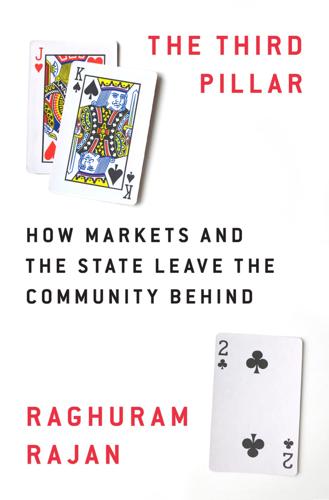
The Third Pillar: How Markets and the State Leave the Community Behind
by
Raghuram Rajan
Published 26 Feb 2019
A CHANGE IN ATTITUDES TOWARD PROFIT AND INCOMES A stark example of the individualism that was being reasserted once more, partly as a reaction to the collectivist pressures that had dominated since the Depression, was the change in attitudes toward corporate profit and managerial incomes. In the postwar years of the expansionary state, the clamor in the United States for corporations to do more than simply focus on their business became louder. Influential commentators argued that corporations ought to work with the state to fulfill their corporate social responsibility, and some government officials in the 1960s even asked corporations to hold back price increases as their social contribution to the fight against inflation. Economists who were drawn into this debate on the proper role of the corporation started by noting that the owners of the corporation, the shareholders, were the residual claimants; they were paid only after fixed claimants such as suppliers, workers, and creditors were paid.
…
Friedman firmly rejected any role for the corporation in helping the state do its job, for example, in containing inflation, or in undertaking charitable activities, especially if it impinged on its profitability. Friedman’s views had enormous influence, both in academia and outside. The notion that corporate social responsibility began and ended with the corporation maximizing shareholder value was very clear and was consistent with the growing ethic of individualism. Instead of being a sin, avarice was now a duty, in part because it could be spelled out clearly to firm management. With such straightforward marching orders, shareholders could evaluate performance without the noise, hypocrisy, and occasional self-aggrandizement introduced by social responsibility.
…
We should similarly be concerned that despite their productivity and advantages stemming from size and access, some of the largest corporations still try to alter the system to shield themselves from competition or taxes. Perhaps of greatest concern, if enough corporations follow Friedman and focused solely on profits, they undermine the private sector’s ability to be a political force for social good. Friedman was right that a fair amount of corporate social responsibility substitutes for actions the state should take, and panders to the specific charitable interests of a firm’s top managers. This is not beneficial for the firm. Yet the firm exists in the community; if there is a local earthquake and the state is underprepared, the firm cannot keep its earthmoving equipment off the roads, regardless of whether it will ever get paid.
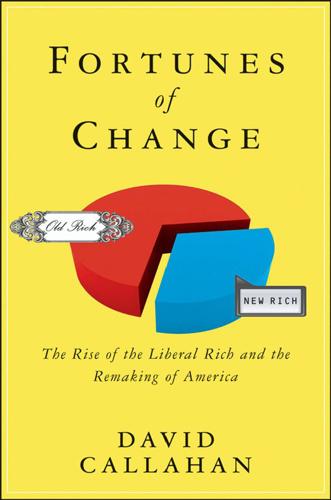
Fortunes of Change: The Rise of the Liberal Rich and the Remaking of America
by
David Callahan
Published 9 Aug 2010
For the corporate leaders of the 1980s, all incentives— economic, political, cultural—pointed to an embrace of Milton Friedman’s narrow dictates about profit. Yet even as this new orthodoxy rose to dominance, yanking the business world sharply to the right, a parallel trend was emerging— which in time would pull executives and wealthy entrepreneurs leftward: an emerging corporate social responsibility movement. Arnold Hiatt was among those who pioneered the new liberal business ethos as the CEO of Stride Rite, the successful children’s shoe company. Hiatt never imagined going into business as he came of age near Boston. He embraced liberal politics and looked down on business, majoring in history and planning to teach.
…
Lynn Sharp Paine, Value Shift: Why Companies Must Merge Social and Financial Imperatives to Achieve Superior Performance (New York: McGraw Hill, 2003), x. 7. J. Figg, “Consumers Indict Irresponsible Companies,” Internal Auditor, December 22, 1999. 8. “The Impact of CSR on the General Public: A Nationwide Poll on Corporate Social Responsibility,” FGI Research, Inc., May 2007. 9. Bill Baue, “Two Sides of the Same Coin: Surveys Track Growth of Interest in CSR and SRI,” February 1, 2006, www.socialfunds.com/ news/article.cgi/1918.html. 10. Ibid. 11. “Corporate Equality Index: A Report Card on Gay, Lesbian, Bisexual and Transgender Equality in Corporate America,” Human Rights Campaign, September 2008. 12.
…
See also presidential campaigns, 2004 knowledge economy cost of development, 30–31 cultural diversity, 25–26, 229 and global influence, 104, 117 government contracting, 236 in historically liberal places, 28–29, 178 increase in influence, 22, 66–67, 81, 104 role of creativity, 4, 28, 29, 228 wealth creation in the, 22–30, 81, 134, 144 5/11/10 6:28:39 AM index See also finance industry; hightech industry; media and entertainment industry Koch, Charles and David, 70, 138, 271, 272 Kovner, Bruce, 272 labor issues benefits, 219, 224, 228, 282 and children, 218, 226, 282 organized labor, 2, 150, 217, 233, 283, 284 profit sharing, 234, 264 wages, 256, 265, 280 workers’ rights, 226, 234, 274, 275 League of Conservation Voters, 66, 70–72, 77 Lear, Norman, 155, 176–177 Lewis, Jonathan and Peter, 100, 144, 149, 156, 158, 185, 187, 255 liberalism and academia, 4, 30, 71, 191 corporate social responsibility, 4, 213–234 focus not balanced among major issues, 47, 210, 273, 287 liberal places, 28–29, 192 Millennial generation, 171, 226, 229, 246, 257–258 overview, 3–5, 8–10, 30, 135, 280 in private schools, 4, 30, 71, 191, 235–250, 252 progressive infrastructure, 143, 151–165, 187, 260–261 libertarianism, 41, 169, 180, 272 lobbying, 50, 69, 70, 76–77, 85, 90, 138, 197–198, 215 lower class, 31, 48, 247, 280.
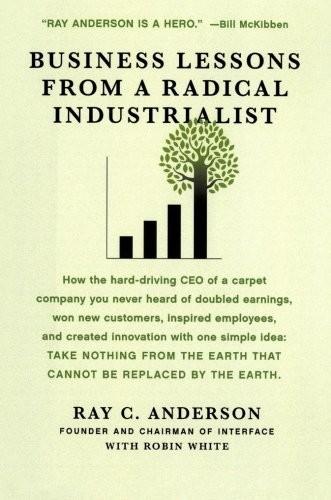
Business Lessons From a Radical Industrialist
by
Ray C. Anderson
Published 28 Mar 2011
Every person, every nation, every corporation on earth depends on nature’s uninterrupted services for its survival. If nature does not make it through the transition from the first industrial revolution to the next, none of us will. That’s the bad news. But we have some good news to consider, too. The trends in ethical awareness, and the development of the concepts of sustainability and corporate social responsibility, are rising. Small-scale local businesses and giant multinational corporations alike are discovering that applying an ethical sustainability filter to everything they do can add to their top and bottom lines, because the marketplace is rewarding good behavior. What it comes down to is this.
…
New York University 10. University of North Carolina at Chapel Hill The pace of this good trend is both positive and accelerating. A survey of ninety-one business schools released in October 2008 by the World Resources Institute and the Aspen Institute found that 54 percent require a course in ethics, corporate social responsibility, sustainability, or business and society. That’s up from just 34 percent in 2001. The Wharton School at the University of Pennsylvania has created its Institute for Global Environmental Leadership, and Interface holds a position on its Advisory Board. A lot of people, both inside the academic world and out in business and industry, are paying close attention to this trend.
…
The old, flawed view of reality holds to the belief that business exists to make a profit, when we know in our hearts that business makes a profit to exist, and it must surely exist for some higher purpose. What CEO really expects to stand before her or his Maker someday and talk about shareholder value? Or market share? Or the clever manipulation of a gullible public? A sustainable society will realize that done right, the triple bottom line of corporate social responsibility—economy, environment, social equity—can come together under the banner of authenticity to create a truly superior, totally ethical, financial bottom line—a better way to bigger and more legitimate profits, a better business model. The old, flawed view of reality holds that the environment is a subset of the economy, the pollution part.
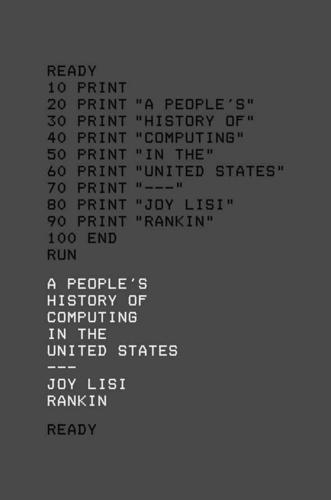
A People’s History of Computing in the United States
by
Joy Lisi Rankin
Bushnell, “Computer-Based Teaching Machines,” Journal of Educational Research 55, no. 9 (June 1, 1962): 528–531; Walter Dick, “The Development and Current Status of Computer-Based Instruction,” American Educational Research Journal 2, no. 1 (January 1, 1965): 41–54, doi:10.2307/1162068. 9. Elisabeth Van Meer, “PLATO: From Computer-Based Education to Corporate Social Responsibility,” Iterations: An Interdisciplinary Journal of Software History, November 5, 2003, http://w ww.cbi.umn.edu/iterations/vanmeer.pdf. 10. Stewart A. Denenberg, “A Personal Evaluation of the PLATO System,” SIGCUE Outlook 12, no. 2 (1978): 8. 11. For more on why CDC employed so few Illinois courses, see Van Meer, “PLATO,” especially note 87. 12.
…
In 1980, church groups castigated CDC for its sales of PLATO to South Africa u nder apartheid. In 1982, the Minneapolis Tribune challenged the veracity of CDC’s advertising claims. In fact, in her article on PLATO, Elisabeth Van Meer argues that Norris attempted to market PLATO as a solution to social problems, but that veneer of corporate social responsibility was criticized by activists, investors, and journalists through controversies about truth in advertising and supporting South African apartheid. Van Meer, “PLATO.” 15. People’s Computer Company 1, no. 1 (October 1972), 1; all ellipses in original. 16. Circulation number from Fred Turner, From Counterculture to Cyberculture: Stewart Brand, the Whole Earth Network, and the Rise of Digital Utopianism (Chicago: University of Chicago Press, 2006), 113. 17.
…
NC State News, March 23, 2011. https://news.ncsu.edu /2011/03/alma-mater-i nducts -bitzer/. Urban, Wayne J., and Jennings L. Wagoner Jr. American Education: A History. 4th ed. New York: Routledge, 2009. Van Meer, Elisabeth. “PLATO: From Computer-Based Education to Corporate Social Responsibility.” Iterations: An Interdisciplinary Journal of Software History, November 5, 2003. http://w ww.cbi.u mn.e du /iterations /vanmeer.pdf. Wade, Patrick. “Whatever Happened to: Streaking at the University of Illinois.” News- Gazette, January 26, 2014. Archived at https://perma.cc/75LT -WG7M. 310 Bibliography Walden, David, and Tom Van Vleck, eds.
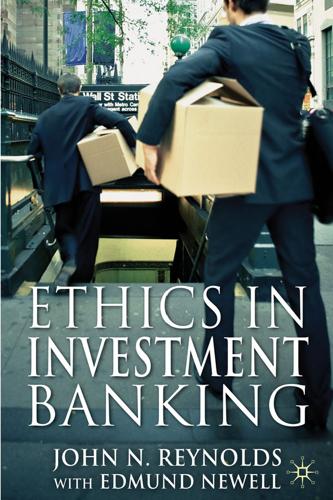
Ethics in Investment Banking
by
John N. Reynolds
and
Edmund Newell
Published 8 Nov 2011
Arranging finance would consist of preparing presentations to potential funders and securing financing (normally debt, but this can also include additional sources of equity finance) Bait and switch: investment banking practice of marketing a (senior) team of bankers to a client and then replacing them with more junior bankers once a mandate has been awarded Big cap: a quoted company with a large market capitalisation or share value Business ethics: an ethical understanding of business, applying moral philosophical principles to commerce Capital markets: collective term for debt and equity markets; reference to the businesses within an investment bank that manage activity in the capital markets Casino capitalism: term used to describe high-risk investment banking activities with an asymmetric risk profile Categorical imperative: the concept, developed by Immanuel Kant, of absolute moral rules CDS: credit default swap, a form of financial insurance against the risk of default of a named corporation CEO: chief executive officer, the most senior executive officer in a corporation viii Glossary ix Church Investors’ Group (CIG): a group of the investment arms of a number of church denominations, mainly from the UK and Ireland Code of Ethics: an investment bank’s statement of its requirements for ethical behaviour on the part of its employees Compensation: investment bankers’ remuneration or pay Compliance: structures within an investment bank to ensure adherence to applicable regulation and legislation Conflict of interest: situation where an investment bank has conflicting duties or incentives Corporate debt: loan made to a company Credit rating: an assessment of the creditworthiness of a corporation or legal entity given by a credit rating agency CSR: Corporate Social Responsibility DCF: discounted cash flow Debtor in Possession finance (DIP finance): secured loan facility made to a company protected from its creditors under chapter 11 of the US bankruptcy code Derivative: a security created out of an underlying security (such as an equity or a bond), which can then be traded separately Dharma: personal religious duty, in Hinduism and Buddhism Discounted cash flow valuation: the sum of: • the net present value (NPV) of the cash flows of a company over a defined timescale (normally 10 years); • the NPV of the terminal value of the company (which may be the price at which it could be sold after 10 years); and • the existing net debt of the company Distribution: the marketing of securities Dodd–Frank Act: the Dodd–Frank Wall Street Reform and Consumer Protection Act Downgrade: a reduction in the recommended action to take with regard to an equity; or a reduction in the credit rating of a corporation Duty-based ethics: ethical values based on deontological concepts EBITDA: Earnings Before Interest Tax Depreciation and Amortisation EIAG: the Ethical Investment Advisory Group of the Church of England Encyclical: official letter from the Pope to bishops, priests, lay people and people of goodwill x Glossary Enterprise value (EV): value of an enterprise derived from the sum of its financing, including equity, debt and any other invested capital, which should equate to its DCF value ERM: the European Exchange Rate Mechanism, an EU currency system predating the introduction of the euro ETR: effective tax rate EV:EBITDA: ratio used to value a company Exit: sale of an investment Free-ride: economic term for gaining a benefit from another’s actions Financial adviser: see Adviser Glass–Steagall: the 1933 Act that required a separation of investment and retail banking in the US Golden Rule: do to others as you would have them do to you Hedge fund: an investment fund with a specific investment mandate and an incentivised fee structure (see 2 and 20) High yield bond: debt sold to institutional investors that is not secured (on the company’s assets or cash-flows) HMRC: Her Majesty’s Revenue and Customs, the UK’s authority for collecting taxes Hold-out value: value derived from the contractual right to be able to agree or veto changes Ijara: Shariah finance structure for project finance Implicit Government guarantee: belief that a company or sector benefits from the likelihood of Government intervention in the event of crisis, despite the fact that no formal arrangements are in place Initial Public Offering (IPO): the initial sale of equity securities of a company to public market investors Insider dealing: trading in shares in order to profit from possessing confidential information Insider trading: see Insider dealing Integrated bank: a bank offering both commercial and investment banking services Integrated investment bank: an investment bank that is both active in capital markets and provides advisory services Internal rate of return (IRR): the annualised return on equity invested.
…
Existing investment banking Codes of Ethics are, in practical terms, ineffective, and serve in the main to protect shareholders from abuse by employees, rather than protecting clients. Ethics and ethical behaviour should be inculcated throughout an investment bank, and not left to the realms of Compliance or Corporate Social Responsibility (CSR) departments, or as the prerogative of senior executives, often at a significant distance from front-line bankers. Behaving ethically could result in an investment bank forsaking opportunities to take on profitable business. For example, an investment bank might decline to lead the Initial Public Offering (IPO) of a company if it did not “believe” in its long-term prospects, even if there was sufficient market demand to complete an initial offering.

McMindfulness: How Mindfulness Became the New Capitalist Spirituality
by
Ronald Purser
Published 8 Jul 2019
To quote Bhikkhu Bodhi, an outspoken American monk, the power of meditative teachings might enslave us: “Absent a sharp social critique,” he warns, “Buddhist practices could easily be used to justify and stabilize the status quo, becoming a reinforcement of consumer capitalism.”15 While I could argue whether mindfulness is a Buddhist practice or not (spoiler alert: it’s not), that would only distract from what is really at stake. As a management professor and a longstanding Buddhist practitioner, I felt a moral duty to start speaking out when large corporations with questionable ethics and dismal track records in corporate social responsibility began introducing mindfulness programs as a method of performance enhancement. In 2013, I published an article with David Loy in the Huffington Post that called into question the efficacy, ethics and narrow interests of mindfulness programs.16 To our surprise, what we wrote went viral, perhaps helped by the title: “Beyond McMindfulness.”
…
It remains unclear how this has changed an investment bank once likened to “a great vampire squid wrapped around the face of humanity, relentlessly jamming its blood funnel into anything that smells like money.”8 George is a director of Goldman Sachs. A few years earlier, the Buddhist scholar and teacher David Loy challenged George’s advocacy of mindfulness to managers. Loy wrote an open letter, asking George if his meditative practice had any impact on corporate social responsibility, or his role in demanding it from fellow board members at Novartis, ExxonMobil and Goldman Sachs.9 Loy’s letter included a list of the unethical practices of these companies. “I would like to learn how, in light of your meditation practice, you understand the relationship between one’s own personal transformation and the kind of economic and social transformation that appears to be necessary today, if we are to survive and thrive,” Loy wrote.
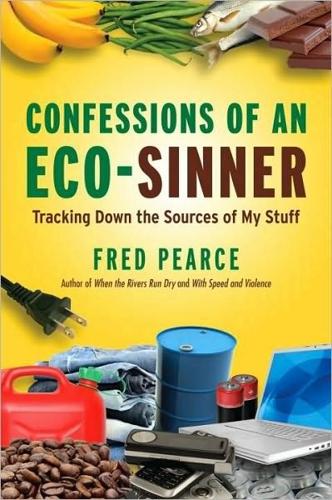
Confessions of an Eco-Sinner: Tracking Down the Sources of My Stuff
by
Fred Pearce
Published 30 Sep 2009
The system, she said, is run ‘so that everyone down the line is well enough off to have a nice house and a car – except for the women who make the clothes. Sometimes I even feel sympathy with Bangladeshi manufacturers, the way they are leant on by the Western brands.’ Soon after, I spoke to a top manager at one of the main garment makers. She said, ‘These big-brand companies have corporate social responsibility departments, but the people who place the orders don’t talk to them. We see it here all the time. The CSR people come in and stipulate basic standards. Then the next day the buyers come in and drive down prices and bring forward deadlines. These two things are usually completely incompatible.
…
He runs what has a reasonable claim to be the greenest, most socially inclusive and ‘sustainable’ paper mill in the world. And the much-derided paper recyclers of Britain can claim a significant part in his success. Here is his checklist of achievement. It is enough to make any European executive in charge of corporate social responsibility green with envy. ‘My mill runs entirely on waste paper,’ he told me as he served tea. ‘It is fuelled entirely on biofuels; its labour force is made up of the disabled; and not a drop of effluent leaves the site.’ Cheng took over the loss-making CXXR United Paper Mill, outside the southern Chinese city of Xiamen, when the state decided to shut it down in 1994.
…
Politicians talk, apparently seriously, about reducing greenhouse gas emissions by 80 per cent and more by mid-century. Global corporations are responding to real market pressures when they declare that they are going carbonneutral and selling organic and fairly traded and environmentally certified produce. They have corporate social responsibility departments because they need them. There may be some cynicism involved, some greenwash. But I do believe that they increasingly recognize that these are jobs that have to be done. There will be false dawns and dead ends. Maybe putting a tiny wind turbine on your roof is a silly idea.

Company of One: Why Staying Small Is the Next Big Thing for Business
by
Paul Jarvis
Published 1 Jan 2019
Determining the Right Mind-Set 78 B-corporation: “Certified B Corporations,” B Lab, accessed October 4, 2017, https://www.bcorporation.net/. 78risk of slowing sales: “Seventh Generation Staffers Line Dry Their Laundry,” Seventh Generation, Burlington, VT, July 1, 2010, https://www.seventhgeneration.com/nurture-nature/seventh-generation-staffers-line-dry-their-laundry. 78$250 million in revenue: Beth Kowitt, “Seventh Generation CEO: Here’s How the Unilever Deal Went Down,” Fortune, September 20, 2016, http://fortune.com/2016/09/20/seventh-generation-unilever-deal/. 79 Branson summed up purpose: Richard Branson, “5 Ways to Build a Project with Purpose,” Virgin, July 16, 2014, https://www.virgin.com/richard-branson/5-ways-build-project-purpose. 81 positive economic impacts for companies: Michael E. Porter and Mark R. Kramer, “Strategy and Society: The Link Between Competitive Advantage and Corporate Social Responsibility,” Harvard Business Review, December 2006, https://hbr.org/2006/12/strategy-and-society-the-link-between-competitive-advantage-and-corporate-social-responsibility. 81 at the University of Quebec: Robert J. Vallerand, “On the Psychology of Passion: In Search of What Makes People’s Lives Most Worth Living,” January 2007, https://www.researchgate.net/publication/228347175_On_the_Psychology_of_Passion_In_Search_of_What_Makes_People’s_Lives_Most_Worth_Living. 82 following your passion is fundamentally flawed: Cal Newport, So Good They Can’t Ignore You: Why Skills Trump Passion in the Quest for Work You Love (New York: Grand Central Publishing, 2012), xviii.
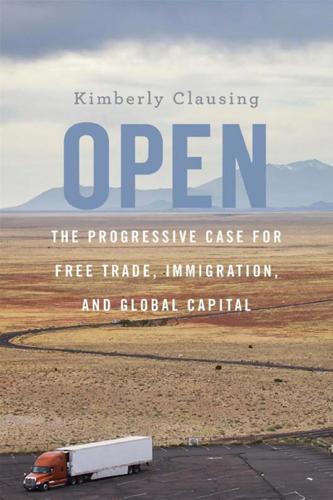
Open: The Progressive Case for Free Trade, Immigration, and Global Capital
by
Kimberly Clausing
Published 4 Mar 2019
If it is embarrassing to report 90 percent of global profits in island jurisdictions, then don’t.3 Under the tax proposals of Chapters 7 and 10, there would be far less of an incentive to move profits offshore artificially. However, even if such reforms are desirable, they may not come to pass. In the meantime, shining sunlight on companies’ global operations can provide valuable benefits through several mechanisms. First, corporate social responsibility motives will be important. Companies care about their reputations, in part because both customers and investors care about company behavior. The sunshine tax report will incentivize companies to avoid taking particularly aggressive tax positions, better aligning their economic interests with those of the societies in which they operate.
…
See Google American Airlines, 283 American dream, 4, 178, 304n1 Antidumping, 315n2 Antitrust laws, 153–154, 162–164, 283–286; and European Union, 153–154 Apple, 61–62, 145, 147, 167–168 AT&T, 284, 286 Autor, David, 77 Bargaining, 42–44 Bartlett, Bruce, 334n2 Base Erosion and Profit Shifting (BEPS), 159, 226–227, 279 Bell Laboratories, 284 Bernanke, Ben, 151 Bilateral trade balances, 135 Birnbaum, Jeffrey, 332n20 Boeing, 60–61, 144, 153 Borjas, George, 194 Bracero Program, 193, 196 Brain drain, 206–207 Brexit, 160, 298 British Columbia carbon tax, 275 Budget deficits, 241–242 Buffett, Warren, 246, 249 Burman, Leonard, 247 Bush Administration, 274 Business tax reform, 168–174, 250–252, 275–278 CAFE standards, 255–256 Campaign finance reform, 292 Canada: free trade area, 96; immigration policy, 185–188 Capital markets, 120 Capital taxation: rationale for, 250; tax rates, 248; trends, 46 Carbon tax, 162, 254–257; in British Columbia, 275 Card, David, 194 Center for Automotive Research, 84 CEO pay, 43–44, 152 Chetty, Raj, equality of opportunity project, 303n1 Child labor, 162 China: accession to WTO, 102; currency value, 127; economic growth, 63–68; infrastructure spending, 237; One Belt, One Road initiative, 100, 237, 298; relations with United States, 104; trade surplus, 12, 123, 144 China shock: and 2016 election, 76–79; size of, 76–78 Clemens, Michael, 191, 194, 196–197 Clinton, Hillary, 78 Clinton Administration, 78, 103, 274 Columbia Sportswear, 272 Comcast, 285 Community adjustment, 232 Community college, 230–231, 235 Comparative advantage, 68–72 Competitiveness, 68–72, 164, 166–168, 269 Comprehensive Economic and Trade Agreement (CETA) between EU and Canada, 161 Consumer Financial Protection Bureau (CFPB), 230–231 Corporate inversions, 165–166 Corporate profits, 39–42, 90–91, 168 Corporate savings, 40–41, 151 Corporate social responsibility, 277–278 Corporate tax rates, 155–156 Costco, 281 Country by country reporting, 278–279 Creative destruction, 73 Currency Movements, 124–127, 133 Current account deficit. See Trade deficit Debt, 241–242 Demographic change, 241 Dollar, David, 63 Dorn, David, 77 DREAM act, 214 Drucker, Jesse, 319n27 Earned Income Tax Credit, 112, 228, 243–246 East India Company, 138 Economic inequality: and economic growth, 16–18; and tax system, 26, 44–46, 243–246; trends, 16–19 Economic insecurity, 23–25 Economic sanctions, 55–56 Education funding, 234–235 Estate tax, 253–254 Euro, 314n11 European Union, 102, 104, 298 Excess Profits.
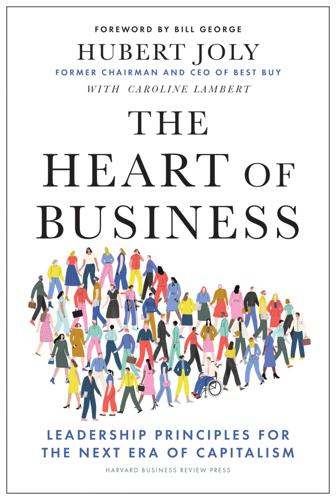
The Heart of Business: Leadership Principles for the Next Era of Capitalism
by
Hubert Joly
Published 14 Jun 2021
It becomes a guiding North Star against which strategy is formulated and every decision made and measured. The idea of personal purpose as the intersection of four elements introduced in chapter 2 is helpful when considering company purpose and how it differs from the narrower ideas of corporate philanthropy or corporate social responsibility. A company’s reason for being can also be found in the same way: what the world needs, what we as a team are passionate about, what the company is good at, and what it can get paid for. This concept has inspired the four questions that Best Buy uses when considering new business ideas: Does it fit with our purpose as a company?
…
Helping the community thrive As you know from chapter 5, I strongly believe that it is business’s business to get involved in societal issues. But how can a company decide what causes to prioritize and pursue? When is it right to take a stand and act—and when not? How do you avoid the trap that many corporate social responsibility (CSR) programs seem to fall into, turning into haphazard collections of unrelated initiatives that suffer from poor coordination, often without active involvement from the CEO?3 By aligning the company’s agenda with its noble purpose and by ensuring it is part of its strategy instead of a random afterthought.
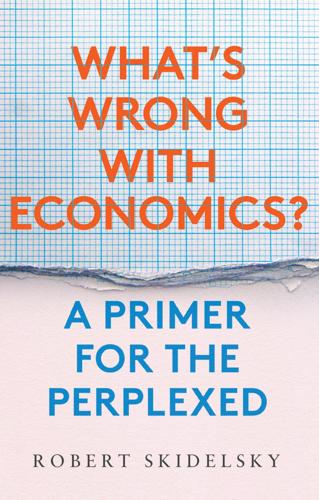
What's Wrong With Economics: A Primer for the Perplexed
by
Robert Skidelsky
Published 3 Mar 2020
Outside mainstream economics there has been a revival of interest in the question of the moral responsibilities of ownership. Should companies have moral responsibilities in addition to their legal responsibility to maximise shareholder value? Ideas of ‘corporate social responsibility’ and ‘stakeholder’ capitalism are fruits of such discussion, though ‘corporate social responsibility’ is largely big business propaganda. There have been studies showing that firms which take seriously their responsibilities to their employees, suppliers, and neighbourhoods achieve better ‘bottom lines’ than companies which attend only to the interests of their owners and senior managers.
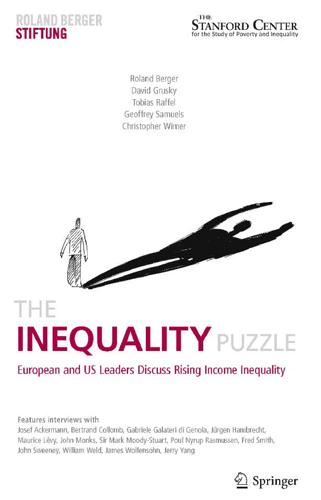
The Inequality Puzzle: European and US Leaders Discuss Rising Income Inequality
by
Roland Berger
,
David Grusky
,
Tobias Raffel
,
Geoffrey Samuels
and
Chris Wimer
Published 29 Oct 2010
What practical actions, if any, should the private sector undertake to address rising inequality? A business cannot be successful in the long term if it does not act responsibly toward the environment and society. That is why sustainability is an integral part of BASF’s strategy. We have initiated a number of projects in the area of corporate social responsibility that could be broadly construed as efforts to improve access to education, health, and business opportunities. One example is a social business joint venture that we have established in Bangladesh with the Grameen Healthcare Trust together with Nobel Laureate Muhammad Yunus. The aim is to offer affordable solutions to meet the basic needs of the poor in Bangladesh.
…
He also recommends more economicallyfocused Federal funding and “the government should phase out Federal loans and support of higher education, except in the scientific disciplines where it can be justified on the basis of national security and economic wealth generation.” 170 T. Raffel and G. Samuels Mentoring Corporate Social Responsibility’s reputation has suffered the fate of many buzz words, more often honored in the breach, but some corporate mentoring programs have demonstrated effectiveness in reaching out to disadvantaged students of ability. “Money is not everything,” notes Ackermann, “you can and should, of course, invest time and talent, for example, in mentoring programs.”
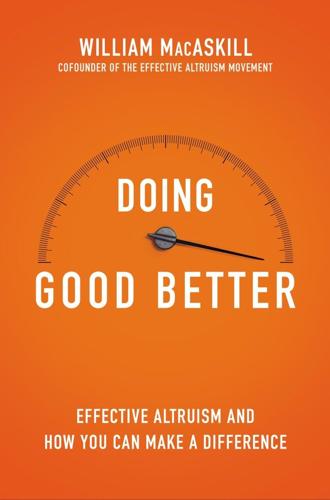
Doing Good Better: How Effective Altruism Can Help You Make a Difference
by
William MacAskill
Published 27 Jul 2015
It exploits the fact that even typical workers in developed countries are among the top income earners in the world and that there are some charities that do huge amounts to help the world’s poorest people for relatively little money. Moreover, unlike the conventional “ethical” careers guidance, earning to give is a path that’s open to everyone. The conventional advice is that if you want to make a difference you should work in the nonprofit or public sector or work in corporate social responsibility. But many people struggle to get a job, let alone find a job in a specific sector. However, many more people have the option to work overtime in order to earn more, or to work harder in order to get a raise or promotion, or to move toward a higher-paying career, or just to live on less.
…
Impact on the job The second issue in our framework is how much impact you’ll have within the job. Typical advice on making a difference through your career emphasizes this factor heavily. The most obvious way to do this is to work in the social sector: social-impact-focused-careers websites list job opportunities at charities, or in corporate social responsibility. However, like “following your passion,” this advice can be misleading. First, to make a difference in the social sector, the organization you work for must be effective. If your charity job was at PlayPumps International, then, no matter how enthusiastically or efficiently you worked, you’d have made very little positive impact.
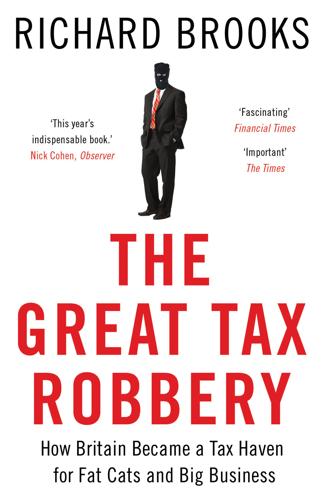
The Great Tax Robbery: How Britain Became a Tax Haven for Fat Cats and Big Business
by
Richard Brooks
Published 2 Jan 2014
So Tucker established a tax-exempt charity, Home and Overseas Voluntary Aid Services, which would play the tax avoider’s stooge by paying out the lump sum and receiving the annuity payments. While millions flowed through the scheme, donations to the charity barely exceeded £100, and all Tucker could claim in the way of good works was: ‘We put in a bit of money ourselves to finance the odd children’s outing.’ The polished ‘corporate social responsibility’ PR machines used by today’s tax avoiders were some years off. Wheezes like this were too hot to handle even for Andersens, a firm that thirty years before it collapsed in the Enron scandal was already at the racier end of the accountancy business. Tucker had overstepped a certain professional mark; rather than merely advising clients on what tax ‘opportunities’ there might be out there, he was ‘marketing’ tax avoidance schemes to as many takers as possible.
…
It had recently ‘won the National Award for our work with the disabled as an employer in 2008’ and ‘initiated the country’s largest afforestation project having completed 1100 hectares of mangrove plantations … the Shell Foundation has invested over USD 10 million across four programs that have a footprint across nine states in India and impact more than 700,000 households.’ Like many others, Shell was happy to fill my inbox with claims of corporate social responsibility, but not hard facts and figures about tax arrangements. And I couldn’t help feeling that, by paying no corporate tax but doing some good deeds, the world’s second biggest company was saying politely but firmly: ‘We’ll decide how we contribute to the societies we operate in, thank you very much, not their elected governments.

The Quiet Coup: Neoliberalism and the Looting of America
by
Mehrsa Baradaran
Published 7 May 2024
Courts widely recognized that corporations had an obligation to address social problems and contribute to the overall well-being of society, which went beyond prioritizing profit-seeking motives. For example, a study of Delaware Chancery Court decisions concerning corporate social responsibility, specifically cases related to “the solution of ghetto, minority group and other social problems,” found that the court repeatedly ruled that corporate social responsibility was in the best interests of a business, even when firms sacrificed profits to increase salaries, reduce pollution, or hire and train more Black workers. As one judge remarked, shareholders—who, in this case, were the ones bringing suit against these programs—could not “thwart the long-visioned corporate action in recognizing and voluntarily discharging its high obligations as a constituent of our modern social structure.”24 That the Delaware courts subscribed to this view had a profound effect on corporate behavior as well as society at large.
…
GTE Sylvania, 158 contraceptives and contraception, 38, 138, 140, 178 contract rights, xvi, 48, 102, 103, 204 contracts and contract law, 103, 174, 195, 201–4, 208–9, 220, 336 Cooke, Jay, 198 Cooper, Anthony Ashley, xxx Cooper, Melinda, 177 Coors, Adolph, 88 Coors, Joseph, 88, 89 Coors Foundation, 307 copper, 37, 50, 53, 55, 60, 61, 363 copy machines, 38 copyright, 274 Cornell University, 89 corporate charters, 81 corporate profits, 57, 79, 84, 220, 237–38 corporate social responsibility, 82–84 corporate (commercial) speech, 112–15, 125 corporations, xxxii, xxxvi, 36, 37, 46, 48, 50, 52, 68, 72, 80–84, 87, 106, 108, 111–12, 116, 149–50, 263, 359, 360. See also transnational corporations corruption, xvi–xviii, xxiv, xxxiv, 99, 109, 110, 193, 220, 248, 289, 301, 336, 340, 351, 354–56, 358, 359, 362, 363 cost-benefit analysis (CBA), 236 Council of Economic Advisers, 303–4 Council on Economic Affairs, 28 Countrywide, 285 coups, political, 61 Courage to Act, The (Bernanke), 289 coverture, xxix, 173 COVID-19 pandemic, 178, 214, 329–30, 350, 354–55 Cox, Archibald, 109 creativity, 344, 363 credibility revolution, 167 credit, 17, 201–4, 215, 246 credit cards, 206–8 credit scores, 216 Credit Suisse, 214 credit unions, 198–200 Crenshaw, Gordon, 86 criminal lending syndicates, 213 critical legal theory, 139 critical race theory, xxiii cruel and unusual punishment, 102 cryptocurrency, 326, 327, 330–45 Cuba, 42 “cultural Marxism,” xxiii Cultural Revolution, 39 “culture war,” 8 currency exchange rates, 58 dark money, xxiii–xxiv, 114, 149 Dartmouth University, 214 Darwinian economics, 178 Darwinian science, xxix data (data privacy), 108, 146, 321 Dawkins, Richard, xxviii debt amnesty (debt jubilees), 243–45 debt contracts, 196, 202, 212, 243–45, 250, 262, 265, 278, 280 Debt Diet program, 217 decentralized autonomous organization (DAO), 336–38, 341 decentralized finance (DeFi), 343 Declaration of Independence, 42 “Declaration on the Granting of Independence to Colonial Countries and People,” 49 decolonization, 38–39, 41, 43–44, 58, 68 “deep state,” 230 Defence of Usury (Smith), 199 Defense, Department of, 236 defense contractors (defense spending), 75, 229 deficit spending, 298–99 deindustrialization, xvii de jure segregation, 120, 122 Delaware, 81, 175, 208, 300 Delaware Chancery Courts, 81, 82, 85, 175 demand deposits, 250 democracy, xxii, xxxii, xxxv, 50–52, 54, 59, 62, 68, 70–71, 87, 95, 99, 113–15, 140, 145, 154, 191, 194, 220–23, 225–26, 231, 245, 248, 258, 266–67, 273, 281, 288, 317, 328, 336–41, 349, 352–54, 356, 358, 360, 364 Democratic Party, xiv, xl, 27, 74, 140, 189, 287, 299, 315, 319, 358 democratic socialism, 128 Denver, Colo., 119 deposit insurance, 255 Depository Institutions Deregulation and Monetary Control Act (1980), 258 deposit slips, 250 deregulation, 67, 128, 207, 229–31, 237–38, 241, 257, 258, 267, 268, 276–77, 292, 296–97, 315, 316, 323 derivatives (derivatives contracts), 241, 262–66, 275, 293, 303, 316 desegregation, 10, 22, 104, 119, 120, 144.
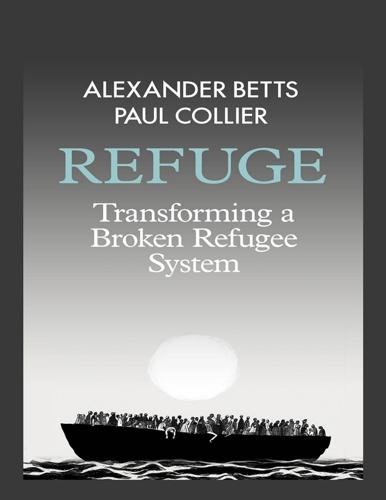
Refuge: Transforming a Broken Refugee System
by
Alexander Betts
and
Paul Collier
Published 29 Mar 2017
Syrians, for example, are often skilled and well-educated, and share a common language with Jordanians. Crucially, the international recognition of a regional refugee crisis creates a potential opportunity for the government of Jordan to appeal for the relocation of a number of multinational corporations to Jordan for reasons that partly connect to corporate social responsibility and partly to core business interests. The crisis also offers a basis on which the government could appeal to other governments – in say Europe or North America – to provide trade concessions that improve access to their markets. A range of external actors might support the creation of such economic zones for refugees.
…
In November 2015 we ourselves went public with the idea, with an article aimed at both the public-policy and business communities in the influential American policy journal Foreign Affairs. In January 2016 at Davos, the forum for global business, Queen Rania acclimatized CEOs to the idea that corporate social responsibility to refugees did not mean diverting some profits into sending blankets, it meant putting their core skills to use by integrating refugees into global supply chains. In the context of emerging business interest in solutions to the refugee crisis, a range of manufacturing company CEOs began to take notice.
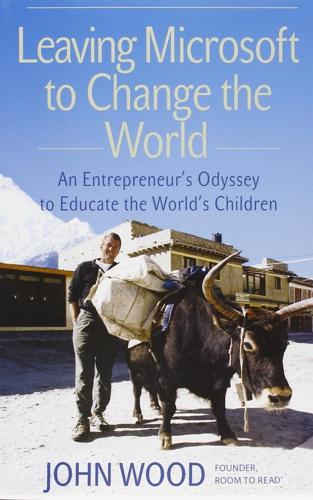
Leaving Microsoft to Change the World: An Entrepreneur's Odyssey to Educate the World's Children
by
John Wood
Published 28 Aug 2006
Our critics are having a field day by saying that we’re not a good Chinese corporate citizen. If we want to prove otherwise, we should think about doing something for seniors that does not involve computers. Can we improve their home? Serve them a hot and nutritious meal? Take them out on field trips?” My ideas were met with silence. To the meeting’s participants, corporate social responsibility was only relevant if it helped the business in the long term. I stopped arguing and reminded myself that philanthropy that extended beyond one’s family was still a relatively new concept in China. These young employees had been trained to act like capitalists. So it would be hypocritical of me to criticize them.
…
He happily shakes my hand, welcomes me back to Nepal, and in his usual “all-business” mode quickly hustles me through the crowd of porters offering their services. Once the car is rolling through the chaotic streets of Kathmandu, Dinesh and I begin exchanging news both big and small—my recent speech in Bangkok on corporate social responsibility, the current cease-fire between the Maoist rebels and Nepal’s government, the rumors of a potential coup d’état that are being taken so seriously that Nepal’s king is rumored to be returning early from a foreign holiday, Dinesh’s family, and our dinner plans at my favorite momo (steamed dumpling) restaurant.
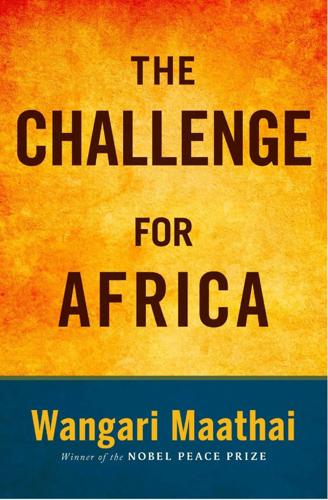
The Challenge for Africa
by
Wangari Maathai
Published 6 Apr 2009
-based Association for Tropical Biology and Conservation, the forests found in the fifteen countries that are part of the Coalition for Rainforest Nations could have a value in carbon credits of over $1 trillion. Private companies have an opportunity to act as good global citizens and help existing forests by buying credits to offset their carbon emissions as part of their corporate social responsibility policies. Of course, it is vital to make sure that the revenues raised by such carbon concessions in the Congo Basin are managed transparently, and that the benefits are shared equitably, particularly with poor communities who depend on the forest. Scientists estimate that the clearing of forests throughout the world currently amounts to about 20 percent of total greenhouse gas emissions.
…
See Fig. 1.1, p. 22. 27 Economic Report on Africa, 2007, p. 22. 28 Ibid., p. 127. 29 “Regional Economic Outlook: Sub-Saharan Africa, April 2008,” International Monetary Fund, p. 3. 30 Collier, The Bottom Billion, p. 39. 31 Ibid., pp. 140-46. 32 “Norway: An Oil Nation,” see the government of Norway's website at www.norway.org.uk/policy/trade/oil/oil.htm (accessed September 2008). 33 UN Human Development Report 2007/2008, p. 229. 34 “Norway: Economy,” Wikipedia. 35 Darren Foster, “Nigeria: The Corruption of Oil,” Frontline, May 1, 2007. 36 “Nokia and Nokia Siemens Networks Prepare for Growth of Tele communications in Africa at CTO Roundtable,” Corporate Social Responsibility Newswire, May 29, 2007, www.csrwire.com/News/8692.html (accessed September 2008). 37 “Regional Economic Outlook, Sub-Saharan Africa, April 2008,” International Monetary Fund. 38 “On the Frontier of Finance,” Economist, November 15, 2007. 39 See Collier, The Bottom Billion. 40 See Cheru, African Renaissance, p. 127.
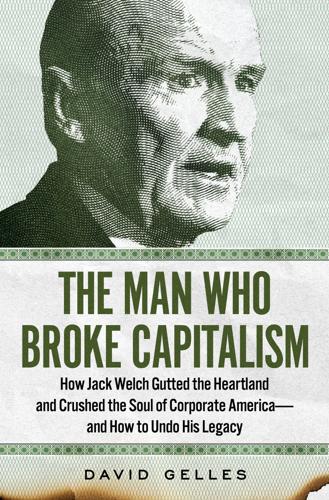
The Man Who Broke Capitalism: How Jack Welch Gutted the Heartland and Crushed the Soul of Corporate America—and How to Undo His Legacy
by
David Gelles
Published 30 May 2022
Clearly, people were livid. And clearly, the status quo was part of the problem. So companies put their best marketers to work convincing the 99 percent that multinational corporations were, in fact, on their side. Soon, companies were sporting idealistic acronyms like merit badges, touting their CSR (corporate social responsibility) and ESG (environmental, social, and governance) bona fides. They would cut emissions, promote diversity, and clean up their supply chains. These were noble goals, to be sure, but the targets were often vague, the promises unenforceable. Nonetheless, the conversation about what was wrong with our economy persisted, and eventually made its way into the C-suite itself.
…
Young, 23 see also executive compensation Chipotle, 170 Chouinard, Yvon, 213 Chrysler, 9, 71, 77, 110–11, 216, 229 Citicorp, 119–20 Clausewitz, Carl von, 34 Clayton, Joseph, 130 Clifford, Michael, 134 Clinton, Bill, 7, 90, 93, 157, 158 Clinton, Hillary, 159–60, 196 Clinton Foundation, 12, 159–60 “clopening,” 170–71 CNBC, 11, 116, 196 JW as commentator, 131, 146–47 launch of, 56–57 Ailes made head of, 53 CNN, 90–91, 158, 196 Coca-Cola, 67–68, 229 Coffin, Charles, 74–75 Cold War, 35, 39 Collins, Jim, 89–90, 178 Comcast, 175, 223 Comstock, Beth, 50, 61 Conaty, William, 78 Condit, Phil, 87–90, 102 Conseco, 77, 106, 111 Cooper, Anderson, 158 Cooper Industries, 81 Cote, Dave, 84 Council of Economic Advisers, 158 Couric, Katy, 117 Covid-19 pandemic, 191, 221–26 Crotonville Management Development Institute / GE University, 9, 74–77, 133, 191, 192 CSR (corporate social responsibility), 151 Culp, Larry, 166, 224–26 Curry, Ann, 135 Danaher, 166 Danone, 212 dealmaking (generally): at Albertson’s, 104–5 at AlliedSignal, 79–80 at Amgen, 106 at AT&T, 175–76, 177, 221 at Boeing, 86–90, 101–2 challenges of resisting, 217–18 at Conseco, 106 corporate raiders and, 57, 70, 95, 162 at Fiat SpA, 83 Friedman doctrine and, 38–39 GE impact on broader economy, 57, 66–68, 176–77, 185, see also dealmaking at GE at Kraft Heinz, 206–7 loosening of antitrust enforcement, 38–39, 51, 79 market concentration and, 79–80, 176–78, 219 at McDonnell Douglas, 87–90 negative externalities of, 175–85 private equity firms in, 2, 51, 54, 57, 70, 105, 110–11, 142, 175–82, 185, 213–14 at RJR Nabisco, 70 at Scott Paper, 71 at 3G Capital, 177–82, 206–7 at Tyco International, 124–25 dealmaking at GE, 5–6, 10, 50–57 Alstom acquisition, 161, 163 American Mortgage Insurance acquisition, 58 Boeing Business Jet project, 102 critique of, 115–16 diversification away from manufacturing, 56, 58, 115–16, 136–40, 160–62, 164 Employers Reinsurance Corporation acquisition, 58 final breakup, 8, 11, 226 financial crisis of 2008 and, 8, 137–38, 141–45, 148–49 to hit financial targets, 61–62, 63–64, 103–4, 136–37, 138 Honeywell takeover attempt, 79–80 impact on broader economy, 57, 66–68, 176–77, 185 joint venture with Yokogawa Medical Systems (Japan), 18–19 Kidder Peabody acquisition, 54–56, 58, 143, 152 Lake acquisition, 143 Lockheed Martin acquisition, 61 Montgomery Ward closing, 61 “Pac-Man model” of, 50 PaineWebber sale, 61 RCA / NBC takeover, 51–54, 56, 57, 95, 152, 175, 176 RCA sell-off, 51–52, 152 as role model for other companies, 123–26, 178–79 taxation and, 51, 61, 62–63 Thomson swap, 52, 82–83 Tungsram takeover, 83 Vivendi acquisition, 136 Western Asset Mortgage Capital (WMC) acquisition, 137, 142–43, 165, 225 “deaths of despair” (Case and Deaton), 183 Deaton, Angus, 183 Del Rio, Frank, 223 Delta Air Lines, 215 Democratic Party, 12, 93–94, 156–60, 196–200 DeNunzio, Ralph, 55 DeVos, Betsy, 198 Dignan, Aaron, 138–39 Diller, Barry, 221 Dimon, Jamie, 199, 221 DirectTV, 175 Discovery Communications, 77, 175–76, 221 Disney, 175 dividend payments, see financialization (generally); financialization at GE dot-com bubble, 7, 95, 165 Douglas, Michael, 57 Dow Chemical, 28 Dow Jones Industrial Average (DJIA): GE in, 46, 93, 163 GE removal from, 8, 163, 165, 166 JW acolytes / protégés and, 77–78 downsizing (generally), 69–73 at Albertson’s, 104–5 at Allied Signal, 78 at American Express, 168–69 at AT&T, 71, 175, 223 at Boeing, 88–90, 127–30, 224 “campaign against loyalty” in, 49–50, 70, 88, 94, 108, 128, 168–74 at Chrysler, 71 cost cutting, 80, 81–82, 88, 90, 106, 108, 112, 124–25, 127–30, 179, 181 Covid-19 pandemic and, 221–24 at Fiat SpA, 83 at Ford Motor Company, 72–73 at GE, see downsizing at GE at Home Depot, 108–10 at Honeywell, 80 at IBM, 70 impact of GE on, 49–50, 69–73 at Kraft Heinz, 181 mass layoffs, 70–71, 78, 80, 82, 83, 105, 168–69, 175, 178, 180, 181, 222, 223–24, 229 at McDonnell Douglas, 87 negative externalities of, 168–74 offshoring, 80, 81, 169, 200 outsourcing, 81, 88, 129–30, 169–70, 179 at Scott Paper, 71 at Sprint, 169 stack ranking, 112, 171–74, 179 at Stanley Works, 80–82 at Sunbeam Products, 71–72 by 3G Capital, 178, 179–80, 181 at 3M, 111–13 at Tyco International, 124–25 downsizing at GE: “Campaign Against Loyalty” in, 4, 5, 43–50, 70, 92, 168, 185, 227 cost cutting, 10, 41–42, 53, 94, 100 impact in Erie, Pennsylvania, 46, 183, 227 impact in Louisville, Kentucky, 30–31, 42–43, 137 impact in Schenectady, New York, 42–43, 92, 100–101, 183, 197–98 impact on employee morale, 47–49, 94 under JW, 41–50, 70–71, 76, 96–97 mass layoffs, 4, 11, 30–31, 41–45, 51, 55, 61, 76, 92, 94, 100–101, 224–25 offshoring, 5, 46–47, 94, 137 outsourcing, 5, 10, 45–46, 94, 100, 101, 227 Vitality Curve / stack ranking, 4, 44–45, 96–97, 152, 171, 172, 174 Drucker, Peter, 34 Dukakis, Michael, 47 Dunlap, “Chainsaw” Al, 71–72 DuPont, 28 earnings management, see financialization (generally); financialization at GE Eastman Kodak, 59, 165 eBay, 207 Ebbers, Bernard, 125 Economics of Welfare, The (Pigou), 167–68 Economist, The, 91 Edison, Thomas, 3, 16, 19, 21, 139 Emotional Intelligence (Goleman), 131–32 employee compensation: decline of unions and, 46–47, 49–50 executive compensation vs., 11, 17, 24, 73, 85, 92, 94–95, 109, 183–85, 197–98, 219–20, 222–23 in the Golden Age of Capitalism, 22–26, 183 impact of downsizing on, 46–47, 49–50, 52, 73, 183, 227 impact of market concentration on, 177 impact of outsourcing on, 227 impact of stock buybacks and dividend payments, 66 of JW in early career, 28 labor as a cost under JW, 43–44, 46–47, 70–71, 210–11 market concentration and, 177 minimum wage and, 93, 183, 209, 215, 218, 223 net disposable income (NDI), 209–10 overtime work, 100, 170–71, 172, 200–201, 217 pay cuts at GE, 52 PayPal financial wellness program, 208–11, 215 at Polaris, 85 productivity—pay gap and, 25–26, 73, 94–95, 185 shareholder capitalism vs., 35 stagnation / decline in, 49–50 in stakeholder capitalism, 207–11, 215–16, 220 stock / stock option ownership, 210, 215–16 Employers Reinsurance Corporation, 58 Enron, 124, 126 Equifax, 77 ESG (environmental, social, and governance), 151 Ethiopian Airlines Flight 302 crash (2019), 187–90, 194 executive compensation: at Albertson’s, 105 at AlliedSignal, 78–79 at Amazon, 174, 184, 185, 222–23 at Amgen, 106 at AT&T, 175 at Boeing, 127–28, 153, 190, 192, 224 at Chrysler, 111, 216 at Conseco, 106 Covid-19 pandemic and, 223, 224 creative accounting and, 123–24 at Discovery, 176 employee compensation vs., 11, 17, 24, 73, 85, 92, 94–95, 109, 183–85, 197–98, 219–20, 222–23 financial performance of company and, 110, 127–28, 153 at GE, 7, 11, 17, 59–60, 91–92, 118–20, 163, 197–98, 225, 228 in the Golden Age of Capitalism, 184 growth in corporate America, 11 at Home Depot, 109, 110 at Honeywell, 120 impact of downsizing on, 73 impact of stock buybacks and dividend payments, 65–66, 153 at McDonnell Douglas, 87 at Polaris, 85 at Scott Paper, 71 at SPX, 105 in stakeholder capitalism, 217–18, 219–20 at Stanley Works, 80 at 3G Capital, 180 at Walmart, 184 wealth concentration and, 10–12, 183–85 Exxon, 18, 68 Facebook, 134 Falwell, Jerry, 134 Fannie Mae, 144 Federal Aviation Administration (FAA), 130, 155, 188, 190, 194 Federal Deposit Insurance Corporation (FDIC), 145 Fey, Tina, 139–40 Fiat SpA, 77, 82–84 financial crisis of 2008, 141–46, 195–96 activism following, 149–52 bailouts, 111, 144–45, 156–57, 160 employment rebound following, 156–60 subprime mortgage market and, 8, 137–38, 141–45, 148–49, 150, 165, 225 financial deregulation: critique of, 95 Friedman doctrine and, 38–39 of stock buybacks, 65 see also shareholder capitalism financialization (generally), 123–26 at AIG, 126 at Under Armour, 182 at AT&T, 175 at Boeing, 88, 90, 129, 153, 187, 190, 224 Covid-19 pandemic and, 224 creative accounting, 95–96, 123–24, 125, 126, 181–82, 227–28 dividend payments, 10, 65–68, 129, 153, 175, 184, 187, 190, 219, 224 at Enron, 124, 126 at Freddie Mac, 125, 144 at GE, see financialization at GE moving beyond, 205–6, 210–11 negative externalities of, 175–85 securities trading, 124 stock buybacks, 10, 65–68, 88, 90, 129, 153, 175, 184, 187, 190, 219, 224 tax minimization, see taxation at 3G Capital, 181–82 3M rejection of, 113 at Tyco International, 124–25 at Waste Management, 123–24 at WorldCom, 125 financialization at GE, 54–56, 58–66, 160–66 creative accounting, 6, 31–32, 33, 60–62, 67–68, 102–4, 103, 123, 136–40, 138, 144, 147–48, 163, 182, 225 dividend payments, 6, 65–68, 161 GE Capital in, 6, 58–64, 144–45, 160–62, 227–28, see also GE Capital SEC investigation / fraud accounting charges, 126, 147–48, 164–65, 225 stock buybacks, 6, 64–66, 161, 163 subprime mortgage market and, 8, 137–38, 141–45, 148–49, 150, 225 Financial Times, 147, 151–52 Fink, Larry, 213–14 Flannery, John, 164–66, 224 Forbes, 91, 152 Forbes 400, 7, 92 Ford, Bill, 72–73 Ford, Henry, 72–73 Ford Motor Company, 18, 72–73, 171 Forester de Rothschild, Lynn, 92 Fortune 500, 43, 57, 71, 80, 117 Fortune magazine, 67, 74–75, 91 JW as contributor, 11, 131, 158 JW as “Manager of the Century,” 7, 91–97, 114–15, 117, 118–19, 120, 146, 152, 159, 163, 198, 230 JW as “Toughest Boss in America,” 49 series on Clausewitz and Moltke, 34 Fox News, 54, 158–59, 195–96 Frazier, Ken, 199–200 Freddie Mac, 125, 144 free market economics, see shareholder capitalism Free to Choose (PBS miniseries about M.
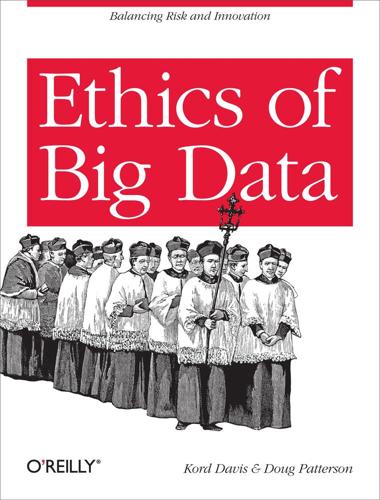
Ethics of Big Data: Balancing Risk and Innovation
by
Kord Davis
and
Doug Patterson
Published 30 Dec 2011
Most polices said nothing, while a minority gave the nonmoral reason that people care about privacy and the company values their business. This is important because it directly raises the question of how to close the gaps in data-driven business models to structure their activities in alignment with moral motives. Those who believe in “corporate social responsibility” would say there are recognizably moral reasons for business to act in alignment with their values. Others, such as Friedman famously (or perhaps infamously), have stated that corporations have responsibilities only to their shareholders—the implication being that any legal action that generates a profit is justified if it results in returning value to shareholders (http://www.colorado.edu/studentgroups/libertarians/issues/friedman-soc-resp-business.html).

Scale: The Universal Laws of Growth, Innovation, Sustainability, and the Pace of Life in Organisms, Cities, Economies, and Companies
by
Geoffrey West
Published 15 May 2017
On the other hand, the last few decades have also seen a resurfacing of the spiritual successors of The Population Bomb and The Limits to Growth with the rise of the environmental movement and the development of a serious concern for the future of the planet. Closely related to this is a deep concern for the impact of unregulated corporate and political ambition, which has stimulated a perceived need for “corporate social responsibility.” Bridging the divide and reducing the continuous tension between rampant capitalism, packaged as the engine of innovation and ingenuity that fuels growth and prosperity for all, versus the doom-and-gloom concerns of environmentalists and those who heed the warning signals of climate change and potential economic collapse, has emerged as one of the major political challenges of the twenty-first century.
…
Despite all of its pitfalls, abuses, and negative unintended consequences, this free market credo has been instrumental in creating an unprecedented standard of living across the globe. It is potentially a harsh and simplistic vision that often ignores quality and, more important, the role of explicit corporate social responsibility as a basic complementary component for why companies exist beyond the primitive drive to maximize profits and compensation. Most of the literature on companies has been developed from the vantage points of economics, finance, law, and organizational studies, though in more recent years ideas from ecology and evolutionary biology have begun to gain prominence.
…
See science of companies company mortality, 6, 191, 393–410 growth of sales, 395 revenue of major U.S. companies, 393, 394 revenue with inflation deflator, 393, 394 survivorship/mortality curves, 397, 398–400, 400–402 competition, 381 complex adaptive systems, 23–24, 116, 430–31, 433, 435 big data and, 439 cities as, 355–56 complexity characteristics of complex systems, 21–25, 72 definitions of, 19–21 grand unified theory of, 430–31 scaling and, 19–25 science of, 23, 79–81 simplicity underlying, 90–93, 116 turbulence and, 72 composite risk index, 315 compound interest, 217, 218 Compustat, 385–86, 393 computer analysis, 22–23, 75 computer programming, 264–65 consciousness, 87, 178–79, 181–82, 282, 283 conservation of electric charge, 197–98 conservation of energy, 164–65, 197–98 contraception, 227, 229 contraction of time, 332 Copernicus, Nicolaus, 37 Coriolanus (Shakespeare), 252–53 Cornell University, 274, 298, 300 “corporate social responsibility,” 233 cosmic scale factor, 209 Cowan, George, 438 Cray-2, 439–40 “creative destruction,” 403 Creative Destruction (Foster), 404 Crick, Francis, 84, 437 crime, 30, 261, 278, 279 in Japan, 277, 279 ranking of cities and, 355–59 crinkliness (fractality), 130, 139, 141, 152, 291 crumpled balls of paper, 153 cube-square law, 39–42, 43, 58, 59, 158–59 cumulative advantage, 368–71 cyberattacks, 134 cyborgs, 163, 422 Daepp, Madeleine, 402–3 Dallas, 251, 297–98 damage-based theories of aging, 199–203 decline of body functions with age, 195, 197, 201, 202 dark energy, 238 Darwin, Charles (Darwinism), 23–24, 60, 63, 87, 89–90, 98, 106, 185, 228, 428 Darwin, Charles Galton, 331–32 Darwinian fitness, 115 data.
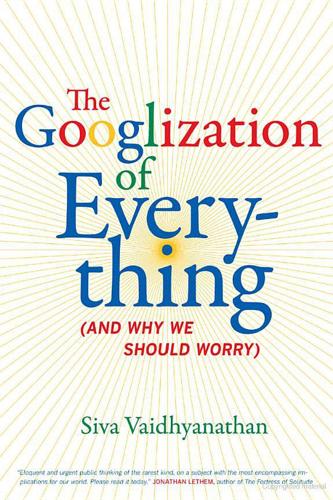
The Googlization of Everything:
by
Siva Vaidhyanathan
Published 1 Jan 2010
Steven Horwitz, Making Hurricane Response More Effective: Lessons from the Private Sector and the Coast Guard during Katrina, policy comment, Global Prosperity Initiative (Vienna, VA: Mercatus Center, George Mason University, March 2008). 62. Robert Pear and Jackie Calmes, “Cost Concerns as Obama Pushes Health Issue,” New York Times, June 16, 2009. 63. Steve May, The Debate over Corporate Social Responsibility (Oxford: Oxford University Press, 2007); André Habisch, Corporate Social Responsibility across Europe (Berlin: Springer, 2005). 228 NOTES TO PAGES 43–53 64. Milton Friedman, “The Social Responsibility of Business Is to Increase Its Profits,” New York Times Magazine, September 13, 1970. 65. For an early account of the ways a clumsily regulated Web would fail to foster democratic values if left to the tumult of market forces, see Andrew Chin, “Making the World Wide Web Safe for Democracy: A Medium-Specific First Amendment Analysis,” Hastings Communications and Entertainment Law Journal (Comm/Ent) 19 (1996): 309. 66.
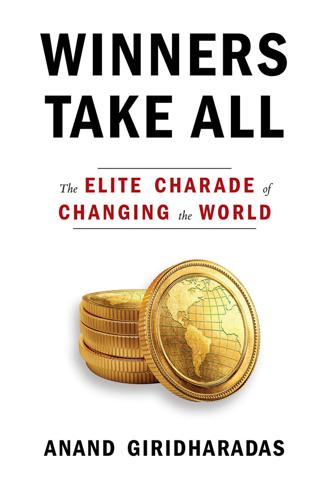
Winners Take All: The Elite Charade of Changing the World
by
Anand Giridharadas
Published 27 Aug 2018
Conferences and idea festivals sponsored by plutocrats and big business host panels on injustice and promote “thought leaders” who are willing to confine their thinking to improving lives within the faulty system rather than tackling the faults. Profitable companies built in questionable ways and employing reckless means engage in corporate social responsibility, and some rich people make a splash by “giving back”—regardless of the fact that they may have caused serious societal problems as they built their fortunes. Elite networking forums like the Aspen Institute and the Clinton Global Initiative groom the rich to be self-appointed leaders of social change, taking on the problems people like them have been instrumental in creating or sustaining.
…
Tastad, of P&G, tried to give these a boost by saying, “The SDGs are fundamentally consistent with our company’s core purpose, which is empowering lives.” Good to know. Then the moderator came at the same concept another way by asking whether the panelists saw women’s equality becoming a fundamental part of business strategy, or whether it would continue to languish as a priority mostly of philanthropists and corporate social responsibility departments. Wurwand thought it was a competitive advantage. “Empowering girls and women is the hot new branding thing!” she explained. In MarketWorld, this was important to underscore to the audience. “So it’s not just the right thing to do,” Verveer said. “It’s the business-smart thing to do.”
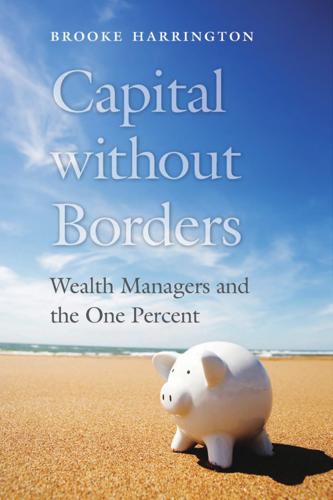
Capital Without Borders
by
Brooke Harrington
Published 11 Sep 2016
Gerard Hanlon, “Institutional Forms and Organizational Structures: Homology, Trust and Reputational Capital in Professional Service Firms,” Organization 11 (2004): 205. 2. Eliot Freidson, Professionalism: The Third Logic (London: Polity, 2001), 128. 3. Doreen McBarnet, “After Enron: Corporate Governance, Creative Compliance and the Uses of Corporate Social Responsibility,” in Justin O’Brien, ed., Governing the Corporation: Regulation and Corporate Governance in an Age of Scandal and Global Markets, 205–222 (New York: John Wiley & Sons, 2005). 4. Tim Bartley, “Institutional Emergence in an Era of Globalization: The Rise of Transnational Private Regulation of Labor and Environmental Conditions,” American Journal of Sociology 113 (2007): 298. 5.
…
Manish Bhansali, Deepti Sharma, and Vijay Raina, “Epigastric Heteropagus Twins: 3 Case Reports with Review of Literature,” Journal of Pediatric Surgery 40 (2015): 1204–1208. 80. Zucman, The Hidden Wealth of Nations, 34. 81. Ibid., 30. 82. Doreen McBarnet, “After Enron: Corporate Governance, Creative Compliance and the Uses of Corporate Social Responsibility,” in Justin O’Brien, ed., Governing the Corporation: Regulation and Corporate Governance in an Age of Scandal and Global Markets, 205–222 (New York: John Wiley & Sons, 2005). 83. Zucman, The Hidden Wealth of Nations, 73. 84. Adam Hofri, “Professionals’ Contribution to the Legislative Process: Between Self, Client, and the Public,” Law & Social Inquiry 39 (2014): 96–126. 85.
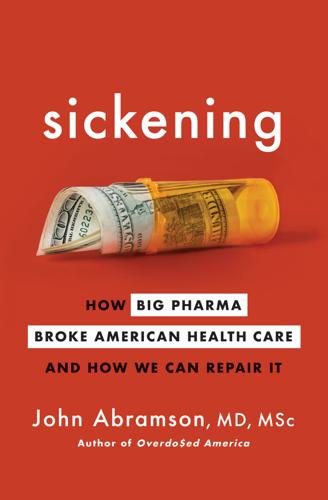
Sickening: How Big Pharma Broke American Health Care and How We Can Repair It
by
John Abramson
Published 15 Dec 2022
In 1952, economist John Kenneth Galbraith wrote that maintaining a countervailing balance to the power of large corporations and Wall Street was “perhaps the major peacetime function of the federal government.” From 1947 to 1980 increases in real income for working-class households in the United States kept pace with the income increases of the top 5 percent. Corporate social responsibility was evident in this 1981 statement by the Business Roundtable, an organization of U.S. business leaders: “Corporations have a responsibility, first of all, to make available to the public quality goods and services at fair prices, thereby earning a profit that attracts investment to continue and enhance the enterprise, provide jobs, and build the economy. . . .
…
In 2019, with legislation to control drug prices on the table, the pharmaceutical and health-products industry spent almost $300 million on lobbying, maintaining three lobbyists for each member of Congress. As we’ll see in chapter 8, for Big Pharma, it was money very well spent. The curtain started to descend on Merck’s golden era of corporate social responsibility in 1994, when its scientist/CEO Vagelos reached the mandatory retirement age of sixty-five. He was replaced by Ray Gilmartin, whose graduate degree was in business, not science. As discussed in chapter 1, ten years after Gilmartin took the helm, Merck was publicly exposed for having failed to act on clear evidence of increased cardiovascular risk associated with Vioxx, but not before the drug killed an estimated tens of thousands of Americans.
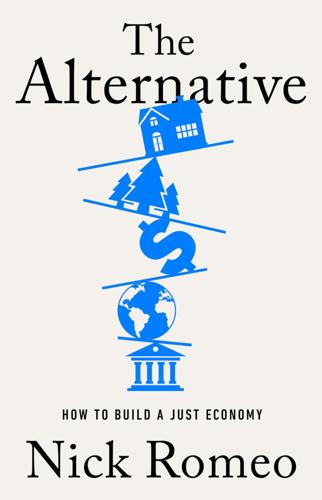
The Alternative: How to Build a Just Economy
by
Nick Romeo
Published 15 Jan 2024
The United States was a reminder that things could be worse. Compared to practices at places like Amazon or Uber, even a Mondragon in decline was a shocking success. Conversation turned to the many recent declarations of support for corporate social responsibility by major American companies. Gorroñogoitia had little patience for such statements when workers lacked ownership and democratic governance. “Corporate social responsibility is lies,” he said calmly and took a sip of beer. He looked into the distance. Arizmendiarreta died of heart failure in 1976, at the age of sixty-one. Gorroñogoitia recalled how his father, along with the other founders, had felt orphaned.
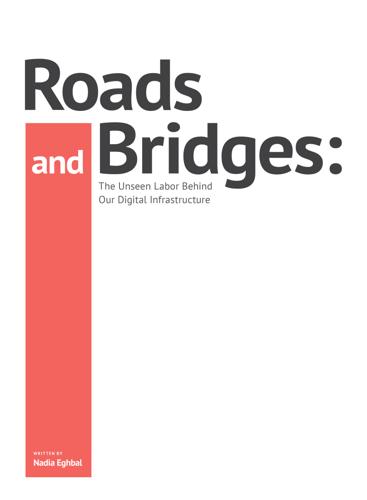
Roads and Bridges
by
Nadia Eghbal
For example, a recent Kickstarter campaign to fund core work on Django raised £32,650 (roughly $50,000); Tom Christie, the campaign organizer, reported that 80% of total financing came from businesses. [169] However, these efforts are still ad hoc, and digital infrastructure as a CSR (corporate social responsibility) issue is not yet common among for-profit software companies. There is room for advocacy here. One of the best-known corporate programs is Google’s Summer of Code (GSoC), mentioned earlier in this paper, which provides stipends to university students to work on open source projects for a summer.

Tower of Basel: The Shadowy History of the Secret Bank That Runs the World
by
Adam Lebor
Published 28 May 2013
But if the political climate continues shifting toward transparency and accountability, the bank’s managers may find that their calls take longer to be returned and are briefer in duration. The bank needs to reform in three areas to ensure its survival: transparency, accountability, and corporate social responsibility. The first is the simplest. The BIS should hold a press conference after the bimonthly governors’ weekends and make it available on the Internet. The bank should publish the attendance list and the broad themes of discussion at the weekend meetings, in particular of the elite Economic Consultative Committee that meets for dinner on Sunday evenings; the Global Economy Meeting the next day, the BIS directors’ meeting that deals with the bank’s governance, and deliberations of the Markets Committee, which deals with the international financial markets.
…
Voting is decided at EGMs by member central banks. If the governors and officials of the member central banks were mandated by their national governments to vote for the change and modernization, the bank would have to accede to the changes. Thirdly, such an EGM could also mandate the bank to spend some of its profits on corporate social responsibility and philanthropy. The bank has for decades reaped rich rewards of its stewardship of public funds. In the financial year 2011–2012 the BIS made tax-free profits of almost $100 million each month. It is time to return some of those profits to a wider society, beyond the annual dividends paid to the central bank shareholders.
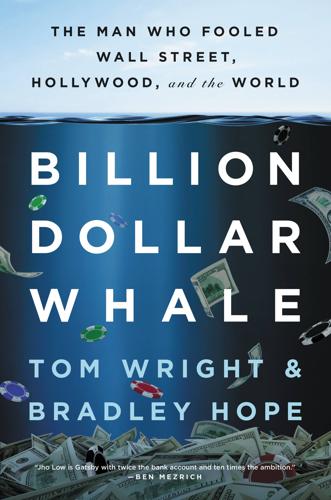
Billion Dollar Whale: The Man Who Fooled Wall Street, Hollywood, and the World
by
Tom Wright
and
Bradley Hope
Published 17 Sep 2018
But he had another selling point, one which Najib, who was ambitious, found extremely attractive: Why not also use the fund as a political-financing vehicle? Profits from 1MDB would fill a war chest that Najib could use to pay off political supporters and voters, restoring UMNO’s popularity, Low promised. On the surface, such spending by 1MDB would be packaged as “corporate social responsibility,” to borrow a phrase from the corporate world. The fund’s charitable arm would award scholarships and build affordable housing in areas where UMNO needed votes. On top of that, Low told Najib that Middle Eastern nations, through their investments in the fund, would come to see Malaysia as a coveted ally in Asia, and also back Najib’s administration with a flow of political donations.
…
Amid the wasted spending and the lack of focus, many of the Ivy League recruits quit after less than a year. More worryingly to many, it became clear the fund’s main reason to exist was as a pot of political money to boost Najib’s popularity. Even without steady cash flow from operations, 1MDB was starting to channel money as “corporate social responsibility” to help encourage voters to support UMNO, the ruling party. “We even joked that many of the projects we were assessing were pretend projects to give the company a legitimate front,” the 1MDB employee said. On March 1, 2010, the new board of loyalists met at 1MDB’s new offices to discuss how the fund could help Najib’s premiership.

Stakeholder Capitalism: A Global Economy That Works for Progress, People and Planet
by
Klaus Schwab
Published 7 Jan 2021
In the past, Mærsk had followed Milton Friedman's advice that the business of business was business. It originated in the pretty straightforward process of moving goods across water from point A to point B and some related activities in shipping; to this day, that was the way the company made its money. Any corporate social responsibility (CSR) projects it undertook served the purpose of creating a feel-good effect among employees or perhaps burnishing its reputation: either way, they were simply a matter of spending money. No longer. Thanks to the opportunities new technologies offered, a stakeholder-orientation could become about “how you make money, not how you spend it,” said Snabe.
…
Ltd in 1998, 16 ZF (Zeppelin Foundation) presence in, 16, 18 Chinese Century of Humiliation (1840), 56 Chinese Dream (China), 184 Chinese economy African ties (2020s) with, 69–70 Belt and Road Initiative, 100 carbon neutrality goal of the, 62–63 the “China effect” of, 70–72 economic growth (2000s–present) of, 18 emerging global markets interacting with, 63–66, 70–72 energy demands, 62–63 environmental degradation and growth of the, 72 FDI investors setting up businesses in SEZs, 57–58, 61 Gini Indices on global income inequality impact of, 37fig–38, 226 historic Silk Road of ancient, 99, 100 IMF forecast on 2020 economic growth of, 71 increased total debt–to–GDP ratio, 62 increasing national income inequality in, 40 IT and Internet revolution role in expanding, 137 oil imports to, 64 post-World War II, 6 the price of progress, 61–63 private sector's percentage of GDP, 172 Reform and Opening Up policy (1979), 15, 18, 36, 57, 59, 72 state capitalism model of the, 171, 172–173 Christian–Democrats (CDU) [Germany], 78, 79 Christian–Democrats political parties (Europe), 83, 188 Civil Rights Act (US), 226 Civil society to advance interest, meaning, or purpose to members, 179 advocacy groups, 243–246 consumer rights groups, 239–240 the international community and, 237–238 as key stakeholders, 178 modern labor unions, 240–243 NGOs as part of the, 183, 197 NGOs (nongovernmental organizations), 183, 197, 214, 237 plagued by inequality and unsustainability, 3 Cleveland (Ohio), 159 Climate Action Tracker, 191 Climate change Anthropocene label on human responsibility for, 161 Fridays for Climate strikes (2018), 149, 250 Greta Thunberg's activism on, 52, 86, 147–150, 250 megatrends driving, 159–162 Paris Agreement (2015) on, 150, 165, 182, 183, 189, 198 reasons for lack of progress in fighting, 150–159 School Strike for Climate (2018), 147, 148–149 searching for solutions to, 165–168 UN Climate Change Conference (COP21) [2015], 150 UN Earth Summit (Rio de Janeiro, 1992) on, 150 UN Intergovernmental Panel on Climate Change (IPCC), 51, 149 See also Global warming; Greenhouse gases; Pollution Climate change megatrends changing societal preferences, 162–165 demographic changes, 160–161 technological progress, 161–162 urbanization, 159–160 Club of Rome, 12–13, 47–48, 149–150 CO2 emissions, 160, 161, 165–166, 182, 200, 202, 203, 207 Cold War Berlin Wall (1961) during the, 75–76, 88, 89 collapse of Soviet Union ending the, 16, 98 fall of the Iron Curtain ending, 77, 80 Soviet sphere of influence during, 6, 7, 8, 75–77 Collective bargaining decline during the 1980s, 14 European promotion of (1950-1970), 10 Ravensburger Pact's impact on, 17 Colombia, 188 Colonialization (19th century), 104 Columbia University, 11, 22 Columbus, Christopher, 97, 101 Communism collapse (1990s–2000s) Soviet Union, 16, 98 Communist Party of China (CPC), 56–57 ideological battle between capitalism and, 7 Soviet Union's promotion of economic model of, 6, 7, 8 Communist Party of China (CPC), 56–57 Compagnie de Suez (France), 94 Companies aim to generate profits and value creation, 179 at the center point of its stakeholders, 175fig checks and balances within, 185, 193–198 collective bargaining with, 10, 14, 17 global stakeholder model role of, 180fig as key stakeholders, 178 re-emerging post-World War II, 6–7 society demanding that a social purpose be served by, 215–216 Stakeholder Capitalism Metrics to measure goals of, 193, 214–215, 249, 250–251 See also specific company; Stakeholder companies Competition EU's anti-competition ruling against Microsoft, 139–140, 141 Milton Friedman doctrine on, 209 Thiel's editorial on problem of, 208–209 See also Monopolies “Competition is for Losers” Wall Street Journal editorial (Thiel), 208–209 Connective technologies description and importance of, 177 government focus on improving digital connectivity, 225, 227–228, 232 Consumer International, 238 Consumer rights groups, 239–240 Cook, Tim, 211–212 Corporate social responsibility (CSR) Mærsk projects in, 206 Milton Friedman's rejection (1970s) of, 14 Costa Rica, 188 Côte d'Ivoire, 70 COVID-19 pandemic “all of society” approach to the, 224 changing travel habits during the, 164 China's total debt–to–GDP ratio impacted by, 62 economies of ASEAN nations and, 66, 67fig female government leadership found to do better during, 224 global economic impact of, 108 globalization allowing rapid spread of, 107 impact on interest rates by, 31 India's economic growth impacted by, 66, 67, 68–69 inequalities revealed by the, 3–4, 43, 73, 227 as litmus test, 250 New Zealand's successful response to, 219–224, 236 protests over governmental responses to, 87 public debt increase during, 19, 29–30 as reminder of interconnectedness of people, 177 response in Sweden to the, 220 SARS–CoV–2 vaccines developed to combat the, 248 Singapore response to the, 232–233 social disruption due to, 247, 248 South Africa's economic impact due to, 70 Spain and Italy as worst hit economies by, 68 stakeholders working for well-being of people during, 248 US society ill-prepared for the, 186 well-managed response in Germany to, 79 Coyle, Diane, 25, 191, 234 Crabtree, James, 40, 125 Crazy Rich Asians (film), 228 CRRC (China), 142 Cryptocurrencies, 161 Cuban Missile Crisis, 76 Czech Republic, 41 D Dale, Spencer, 49 Dansk Metal (Denmark), 115, 117 Darvas, Zsolt, 36, 37, 112, 113 “Data as a property right” initiative, 239 Data Dividend Project, 239 Davos Manifesto (1973), 13–14, 88, 213 Davos Manifesto (2020), 191–192, 213 Davos meetings.

Reset
by
Ronald J. Deibert
Published 14 Aug 2020
The intent is not to dismantle social media, but to fine-tune them instead. For example, corporate social responsibility, ethical design, and other such initiatives typically involve the least intrusive measures and entail only minor fixes to superficial elements of social media. These initiatives typically advocate for norms rather than laws, persuasion rather than coercion. The goal is to have business executives acknowledge certain principles and govern their business practices accordingly, but without any kind of specific enforcement mechanism to hold them to their promises. It’s easy to be cynical and dismiss corporate social responsibility principles as futile, especially when companies so often and flagrantly abuse them.

Stakeholder Capitalism: A Global Economy That Works for Progress, People and Planet
by
Klaus Schwab
and
Peter Vanham
Published 27 Jan 2021
In the past, Mærsk had followed Milton Friedman's advice that the business of business was business. It originated in the pretty straightforward process of moving goods across water from point A to point B and some related activities in shipping; to this day, that was the way the company made its money. Any corporate social responsibility (CSR) projects it undertook served the purpose of creating a feel-good effect among employees or perhaps burnishing its reputation: either way, they were simply a matter of spending money. No longer. Thanks to the opportunities new technologies offered, a stakeholder-orientation could become about “how you make money, not how you spend it,” said Snabe.
…
Ltd in 1998, 16 ZF (Zeppelin Foundation) presence in, 16, 18 Chinese Century of Humiliation (1840), 56 Chinese Dream (China), 184 Chinese economy African ties (2020s) with, 69–70 Belt and Road Initiative, 100 carbon neutrality goal of the, 62–63 the “China effect” of, 70–72 economic growth (2000s–present) of, 18 emerging global markets interacting with, 63–66, 70–72 energy demands, 62–63 environmental degradation and growth of the, 72 FDI investors setting up businesses in SEZs, 57–58, 61 Gini Indices on global income inequality impact of, 37fig–38, 226 historic Silk Road of ancient, 99, 100 IMF forecast on 2020 economic growth of, 71 increased total debt–to–GDP ratio, 62 increasing national income inequality in, 40 IT and Internet revolution role in expanding, 137 oil imports to, 64 post-World War II, 6 the price of progress, 61–63 private sector's percentage of GDP, 172 Reform and Opening Up policy (1979), 15, 18, 36, 57, 59, 72 state capitalism model of the, 171, 172–173 Christian–Democrats (CDU) [Germany], 78, 79 Christian–Democrats political parties (Europe), 83, 188 Civil Rights Act (US), 226 Civil society to advance interest, meaning, or purpose to members, 179 advocacy groups, 243–246 consumer rights groups, 239–240 the international community and, 237–238 as key stakeholders, 178 modern labor unions, 240–243 NGOs as part of the, 183, 197 NGOs (nongovernmental organizations), 183, 197, 214, 237 plagued by inequality and unsustainability, 3 Cleveland (Ohio), 159 Climate Action Tracker, 191 Climate change Anthropocene label on human responsibility for, 161 Fridays for Climate strikes (2018), 149, 250 Greta Thunberg's activism on, 52, 86, 147–150, 250 megatrends driving, 159–162 Paris Agreement (2015) on, 150, 165, 182, 183, 189, 198 reasons for lack of progress in fighting, 150–159 School Strike for Climate (2018), 147, 148–149 searching for solutions to, 165–168 UN Climate Change Conference (COP21) [2015], 150 UN Earth Summit (Rio de Janeiro, 1992) on, 150 UN Intergovernmental Panel on Climate Change (IPCC), 51, 149 See also Global warming; Greenhouse gases; Pollution Climate change megatrends changing societal preferences, 162–165 demographic changes, 160–161 technological progress, 161–162 urbanization, 159–160 Club of Rome, 12–13, 47–48, 149–150 CO2 emissions, 160, 161, 165–166, 182, 200, 202, 203, 207 Cold War Berlin Wall (1961) during the, 75–76, 88, 89 collapse of Soviet Union ending the, 16, 98 fall of the Iron Curtain ending, 77, 80 Soviet sphere of influence during, 6, 7, 8, 75–77 Collective bargaining decline during the 1980s, 14 European promotion of (1950-1970), 10 Ravensburger Pact's impact on, 17 Colombia, 188 Colonialization (19th century), 104 Columbia University, 11, 22 Columbus, Christopher, 97, 101 Communism collapse (1990s–2000s) Soviet Union, 16, 98 Communist Party of China (CPC), 56–57 ideological battle between capitalism and, 7 Soviet Union's promotion of economic model of, 6, 7, 8 Communist Party of China (CPC), 56–57 Compagnie de Suez (France), 94 Companies aim to generate profits and value creation, 179 at the center point of its stakeholders, 175fig checks and balances within, 185, 193–198 collective bargaining with, 10, 14, 17 global stakeholder model role of, 180fig as key stakeholders, 178 re-emerging post-World War II, 6–7 society demanding that a social purpose be served by, 215–216 Stakeholder Capitalism Metrics to measure goals of, 193, 214–215, 249, 250–251 See also specific company; Stakeholder companies Competition EU's anti-competition ruling against Microsoft, 139–140, 141 Milton Friedman doctrine on, 209 Thiel's editorial on problem of, 208–209 See also Monopolies “Competition is for Losers” Wall Street Journal editorial (Thiel), 208–209 Connective technologies description and importance of, 177 government focus on improving digital connectivity, 225, 227–228, 232 Consumer International, 238 Consumer rights groups, 239–240 Cook, Tim, 211–212 Corporate social responsibility (CSR) Mærsk projects in, 206 Milton Friedman's rejection (1970s) of, 14 Costa Rica, 188 Côte d'Ivoire, 70 COVID-19 pandemic “all of society” approach to the, 224 changing travel habits during the, 164 China's total debt–to–GDP ratio impacted by, 62 economies of ASEAN nations and, 66, 67fig female government leadership found to do better during, 224 global economic impact of, 108 globalization allowing rapid spread of, 107 impact on interest rates by, 31 India's economic growth impacted by, 66, 67, 68–69 inequalities revealed by the, 3–4, 43, 73, 227 as litmus test, 250 New Zealand's successful response to, 219–224, 236 protests over governmental responses to, 87 public debt increase during, 19, 29–30 as reminder of interconnectedness of people, 177 response in Sweden to the, 220 SARS–CoV–2 vaccines developed to combat the, 248 Singapore response to the, 232–233 social disruption due to, 247, 248 South Africa's economic impact due to, 70 Spain and Italy as worst hit economies by, 68 stakeholders working for well-being of people during, 248 US society ill-prepared for the, 186 well-managed response in Germany to, 79 Coyle, Diane, 25, 191, 234 Crabtree, James, 40, 125 Crazy Rich Asians (film), 228 CRRC (China), 142 Cryptocurrencies, 161 Cuban Missile Crisis, 76 Czech Republic, 41 D Dale, Spencer, 49 Dansk Metal (Denmark), 115, 117 Darvas, Zsolt, 36, 37, 112, 113 “Data as a property right” initiative, 239 Data Dividend Project, 239 Davos Manifesto (1973), 13–14, 88, 213 Davos Manifesto (2020), 191–192, 213 Davos meetings.
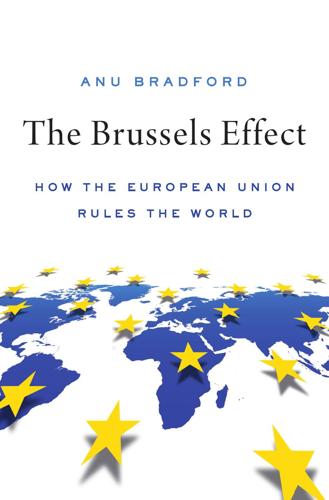
The Brussels Effect: How the European Union Rules the World
by
Anu Bradford
Published 14 Sep 2020
The External Effects of EU Environmental Legislation on the United States, 241 (2011). 65.Id. 66.Id. 67.Hitachi Group to Eliminate 6 Chemical Substances Targeted in RoHS by March 2005 Shifting to Lead-Free Solder by March 2004 in Japan and by March 2005 Worldwide, Hitachi (Dec. 1, 2003), http://www.hitachi.com/New/cnews/031201.html [https://perma.cc/N5TA-NANJ]. 68.Id. 69.Top 15 Semiconductor Sales Leaders—2018F, AnySilicon (Nov. 12, 2018), https://anysilicon.com/top-15-semiconductor-sales-leaders-2018f/ [https://perma.cc/8VB5-6LPS]. 70.Corporate Social Responsibility Report, TSMC 48 (2017), https://www.tsmc.com/download/csr/2018_tsmc_csr/english/pdf/e_all.pdf [https://perma.cc/FN3K-MNKM]. 71.MediaTek is a fabless semiconductor company that provides system-on-chip solutions for wireless communications, HDTV, DVD and Blu-ray, and cell phone. Corporate Social Responsibility Report, MediaTek 139 (2015), https://d86o2zu8ugzlg.cloudfront.net/mediatek-craft/reports/CSR/2015-MediaTek-Corporate-Sustainability-Report-Final.pdf (last visited Feb. 7, 2017) [https://perma.cc/E6VX-M4EA]. 72.Overcome ROHS, EU’s First Environmental Regulation, Sci.
…
For example, in response to the EU RoHS directive, Hitachi decided to phase out worldwide six chemical substances included in about 70 of its products that were subject to EU RoHS by March of 2005.67 The company also decided to switch to lead-free solder for its products produced by factories in Japan, and subsequently for its products produced throughout the world.68 Taiwan Semiconductor Manufacturing Company—the fourth largest semiconductor sales leader in the world69—similarly guarantees that all its products meet EU’s directives, including RoHS, WEEE, and REACH.70 According to the MediaTek’s 2015 Corporate Social Responsibility Report, the company’s environmental standards meet simultaneously European, Asian, and Taiwanese standards for environmental protection.71 Finally, a June 2006 Korean Science Times article reported that Korean exporters such as Samsung complied with EU RoHS.72 At that time, the EU market took up only one-fifth of all Korean electronics exports,73 yet that was sufficient to steer the industry toward the European standards.
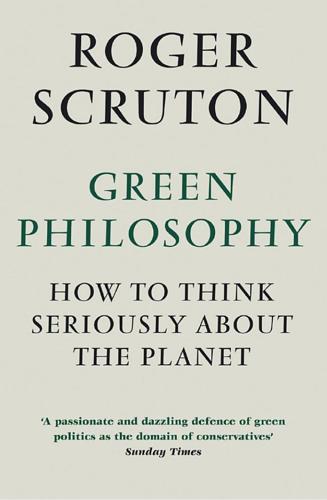
Green Philosophy: How to Think Seriously About the Planet
by
Roger Scruton
Published 30 Apr 2014
In fact, the greatest weakness of the position that John Gray describes as ‘neo-liberalism’ – the ideological summoning of the market, as the sole remedy to all social and economic problems – is the refusal to make the distinction, apparent to all reasonable people, between big business and little business. When businesses are big enough they can cushion themselves against the negative side effects of their activity, and proceed as if all objections could be overcome by a consultant in ‘Corporate Social Responsibility’, without any change in the way things are done.192 The problem is as much one of institutional structure as one of size. No institutions have contributed more to the expansion of markets than limited liability and the joint stock company. Those two remarkable seventeenth-century inventions secured the preeminence of the Dutch and the British in international trade.
…
D., ref1n, ref2n Coleridge, Samuel Taylor, ref1 collectivism, ref1 Colligan, Douglas, ref1n Common Agricultural Policy (EU), ref1 Common Fisheries Policy, ref1, ref2, ref3 common law, ref1, ref2, ref3, ref4, ref5, ref6, ref7 commons, ref1 Commons, Open Spaces and Footpaths Preservation Society, ref1 communism, ref1, ref2, ref3, ref4, ref5, ref6 competition and cooperation, ref1ff Condorcet, Nicolas, Marquis de, ref1n Confucianism, ref1, ref2 Confucius, ref1 conservatism, ref1, ref2, ref3, ref4, ref5, ref6, ref7, ref8, ref9, ref10, ref11, ref12 American vs European, ref1 Conservative Party (UK), ref1 Constable, John, ref1, ref2, ref3 consumerism, ref1, ref2, ref3, ref4 Convention on Biodiversity, ref1 Cooper, James Fenimore, ref1, ref2 Copenhagen Climate Change Conference (2009), ref1, ref2 Corell, R.W., ref1n Corot, Jean-Baptiste, ref1 Corporate Social Responsibility, ref1 Cosmides, Leda, ref1 cosmopolitanism, ref1, ref2 cost–benefit analysis, ref1f, ref2, ref3, ref4, ref5 Costanza, Robert, ref1 Cotman, John Sell, ref1 Countryman, The, ref1 Countryside Alliance, ref1n Countryside Restoration Trust (UK), ref1, ref2, ref3 Cowper, William, ref1 Crabbe, Rev.

The Cosmopolites: The Coming of the Global Citizen
by
Atossa Araxia Abrahamian
Published 14 Jul 2015
It did not aspire to help the so-called 1 percent live borderless lives while making actual stateless people the unwitting victims of its traffic. The terms have long since served as a catchphrase, of course—sprinkled liberally in the names of progressive schools and do-gooder nonprofits and even creeping their way into copy for corporate social-responsibility websites. But years before Jay-Z and Kanye West rapped about avoiding incarceration with five passports, John Lennon imagined a world with no war, no borders, no countries, and, presumably, no rivaling nationalities or visa restrictions on the movement of Russian and Chinese citizens.
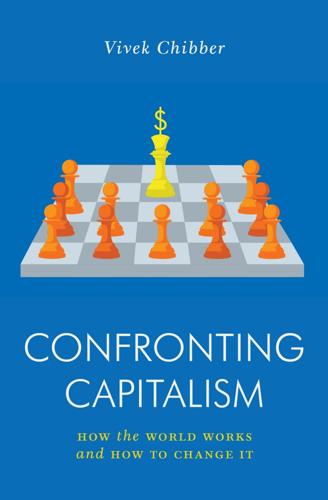
Confronting Capitalism: How the World Works and How to Change It
by
Vivek Chibber
Published 30 Aug 2022
When we put all this together, it means that capitalism systematically deprives people of the basic ingredients for a decent life, such as material security, personal autonomy, the resources for self-determination and mutual respect—which is just another way of saying that capitalism is fundamentally unjust. How, then, might we bring about a more humane society? A very common approach is to appeal to the better instincts of those in power. This usually means encouraging charitable donations and volunteer work, and, more recently, promoting Corporate Social Responsibility programs. But the response of the Left has always been to deny the feasibility of this strategy, because pleading with capitalists to behave better overlooks the structural pressure on them to abuse their power. No matter how much they are exhorted to be nicer, the pressure of market competition makes it impossible for them to respect their employees’ well-being while also protecting the bottom line.

The Innovation Illusion: How So Little Is Created by So Many Working So Hard
by
Fredrik Erixon
and
Bjorn Weigel
Published 3 Oct 2016
That protection is increasingly about playing zone or company-to-company defense of markets. Those that have been around in corporate life know that, aside from specialization, there are several ways to do that. They include lobbying, branding, marketing, design, and incremental changes in products that give the pretense of development. Corporate social responsibility (CSR) and general public relations campaigns emerged later but are today part of the same toolbox. Together they all help to create customer loyalty and political protection. What used to be the icing on the cake – activities to support innovations and real business competition – have become more important than innovation itself to combat competitors.
…
(i) cargo services and deregulation (i) see also air cargo services cash hoarding (corporate savings) (i), (ii), (iii), (iv), (v) catalytic converter technology (i) Central Europe, German-Central European supply chain (i), (ii) chemicals, and EU regulation (i), (ii) Chicago school of economics (i) Chili, and Cybersyn project (i) China and BRIC concept (i), (ii) exports from European Union (i) GDP (2014) (i), (ii) and globalization (i), (ii), (iii) R&D spending (i) sovereign wealth fund (i) Christensen, Clayton (i), (ii) Churchill, Winston (i) Clark, Gregory (i), (ii)n41 classical market liberalism (i) Clinton, Bill (i) Club des Chiffrephiles (i) Coase, Ronald (i), (ii), (iii), (iv), (v) Coca-Cola (i) Code of Federal Regulations (US) (i) cognition, mechanistic vs. organic (i) collaboration “noise” (i) Comin, Diego (i) command economies (i), (ii) command-and-control (i), (ii) community-generated content, and socialism (i) companies see big firms; firm boundaries; firms; multinational (global) companies competition and bureaucracy (i) and containerization (of global trade) (i) vs. contesting markets (i) and financial regulation (i) and firm boundaries (i), (ii) and geography of production (i) and globalization (i) life-or-death competition (i), (ii), (iii), (iv) and market concentration (i) and mergers and acquisitions (i) move of from countries to firms (i), (ii) and multinationals (i) oligopolistic (or monopolistic) competition (i) and planning machines (i) see also market contestability competitive forces concept (i) complexity “complex by design” capitalism (i) market complexity (i) see also regulatory complexity/uncertainty compliance officers (i) complicatedness index (Boston Consulting Group) (i) compound growth (i) Compustat, corporate cash holdings (i) computer technology/computerization and corporate managerialism (i) and knowledge obsolescence (i) and labor (i) and leisure (i) and market socialism (i) and production (i) and quantum dots/cadmium (i) see also digitalization; ICT (information and communications technology); information technology (IT); software technology Conference Board (economics consultancy) (i), (ii) consolidation (i), (ii) see also mergers and acquisitions Consumer Protection Act (US) (i) containerization (of global trade) (i) contestability see market contestability contracts (i) copying, and strategy (i), (ii) corporate borrowing and low investment growth (i) see also corporate net lending corporate control, and specialization (i) corporate failure see failure corporate globalism (i), (ii), (iii) corporate managerialism and bureaucracy (i), (ii), (iii), (iv), (v) and capitalism, decline of (i), (ii), (iii) corporate destruction and innovation: IBM (i); Microsoft (i), (ii); Nokia (i), (ii), (iii), (iv), (v) formula of failure (i) and globalist worldview (i) and globalization (i), (ii), (iii), (iv) managerial ideology on the rise (i), (ii) planning: planning machines (i), (ii), (iii); risk and uncertainty (i); strategy (i) regulation (i), (ii) regulation and compliance officers (i) Swedish managerialist culture (i), (ii) value vs. numbers (i) see also bureaucracy corporate medical research, and financial regulation (i) corporate net lending (i), (ii) see also corporate borrowing corporate politics (i), (ii), (iii), (iv) see also political world corporate savings (cash hoarding) (i), (ii), (iii), (iv), (v) corporate size and entrepreneurship (i) and globalization (i) and regulation (i) corporate social responsibility (CSR) (i) corporate socialism (i), (ii) corporate socialization (i) corporate valuations (i) costs production costs (i), (ii), (iii) sunk costs (i), (ii), (iii), (iv) transaction costs (i), (ii), (iii), (iv), (v), (vi) transmission costs (i), (ii), (iii) Cowen, Tyler (i) creative destruction fear of and political institutions (i) and globalization (i) and innovation (i), (ii), (iii), (iv), (v) and New Machine Age (i) and Nokia (i) and present-day capitalism (i) see also withering credit rating agencies (i), (ii), (iii) Credit Suisse, on stock markets (i) crony capitalism (i) cronyism (i), (ii), (iii), (iv) culture of experimentation (i), (ii) see also entrepreneurs; entrepreneurship culture of individualism (i) see also dissent; eccentricity; freedom customer loyalty (i) Cybersyn project (i) cyclical effects, and productivity (i) da Vinci, Leonardo see Leonardo da Vinci Darwinianism (i), (ii) Das, Gurcharan (i) data see recorded data (national accounts) data economy, and productivity (i) DAX 30 index (Germany) (i) de Blasio, Bill (i) debt and dividends/share buybacks vs. investment (i), (ii) and economic decline (i) vs. equity funding (i), (ii), (iii), (iv), (v), (vi) and retirement savings (i), (ii) decision-making probabilistic decision-making (i), (ii) and strategy (i) decoupling (productivity/incomes) thesis (i), (ii) deregulation case of air cargo services (FedEx) (i) and diffusion of innovations (i), (ii) OECD product market regulation (PMR) indicators (i), (ii) and reallocation of business (i) and regulatory accumulation (i) wave in 1980s–1990s (i), (ii) see also regulation; regulatory complexity/uncertainty Descartes, René (i) design (i) development vs. research (i), (ii) see also incremental development; R&D diffusion and deregulation (i), (ii) and globalization (i), (ii) and occupational licenses (i) and productivity (i) and R&D (i) “diffusion machine” (i), (ii), (iii) digital age and capitalism (i) and politics (i) digitalization and innovation (i) and leisure (i) and managerialism (i) and productivity growth (i) and regulation (i) and second unbundling of production (i) see also computer technology/computerization; ICT (information and communications technology); information technology (IT); “servicification” (or “servitization”) direct-to-consumer sales (i) dirigisme (France) (i) discriminate dynamism theory (i) dispersed ownership (i) dissent (i), (ii), (iii), (iv) see also culture of individualism; eccentricity diversification and investment (i), (ii) organizational (i), (ii) dividends (i), (ii), (iii), (iv), (v) DJs, and jobs and technology debate (i) dock labor, and containerization (of global trade) (i) Dodd-–Frank Act (US) (i), (ii), (iii), (iv) Dolly the Sheep (i) Dr.

Live and Let Spy: BRIXMIS - the Last Cold War Mission
by
Steve Gibson
Published 2 Mar 2012
This absence of meaning and purpose is nowhere better caricatured than in the world of risk management. The Banality of Risk Management By far the most pervasive form of contemporary decision-making is risk management. It has found powerful expression in health and safety, the formalisation of governance, transparency, sustainability, corporate social responsibility and the more recent ‘securitisation’ of much of life. This management of risk, as distinct from an understanding of the concept of risk, has come to stifle and smother all efforts at pursuing progress and prosperity. Subservience to the rigid bureaucracy of risk management constitutes the biggest challenge to the long-tried and tested virtues – judgement, toleration, discretion, argument and moral autonomy – necessary to achieve prosperity and progress.
…
The re-interpretation of league tables and waiting-lists for what it means to be well in the UK’s National Health Service jeopardises the essential nature of care. In business, the ‘risk management of everything’ finds businessmen reluctant to declare profit-making as a principal goal. Rather they have succumbed to reputation managers, corporate social responsibility consultants, environmentally-friendly mantras, and any number of other abstract and objectively meaningless nouns – governance, compliance, transparency, accountability and sustainability – that reveal little about what they do, but much about the lack of confidence with which they do it.

Greater: Britain After the Storm
by
Penny Mordaunt
and
Chris Lewis
Published 19 May 2021
Andy Haldane, the Bank of England’s chief economist, said, ‘The reason we have the triple threats of disconnection of people from society, mistrust of institutions, and the rising tide of populism is because we have structurally underinvested in civil society.’50 There’s also a role here for business to create more social enterprises, rather than more corporate social responsibility programmes. Sustainability must become the theme. A social enterprise is defined as ‘an organisation that addresses a basic unmet need or solves a social or environmental problem through a market-driven approach’.51 So, let’s be clear then: in this sense, all enterprise is social enterprise.
…
Business and private capital has the potential to contribute much more. Government’s job is to convene this support. The relationship between business and the other sectors has been characterised by charitable giving. This has been facilitated through foundations, partnerships, investments and corporate social responsibility. The relationship has only really become more sophisticated over the past seventy years, though. Today’s arrangements can be traced back 200 years. The growing merchant class of the nineteenth century established trusts, foundations and committees in what was ultimately both the genesis of the public sector and the beginning of regulation in the charity sector.

Modern China: A Very Short Introduction
by
Rana Mitter
Published 25 Feb 2016
Holland THE COMPUTER Darrel Ince CONFUCIANISM Daniel K. Gardner THE CONQUISTADORS Matthew Restall and Felipe Fernández-Armesto CONSCIENCE Paul Strohm CONSCIOUSNESS Susan Blackmore CONTEMPORARY ART Julian Stallabrass CONTEMPORARY FICTION Robert Eaglestone CONTINENTAL PHILOSOPHY Simon Critchley CORAL REEFS Charles Sheppard CORPORATE SOCIAL RESPONSIBILITY Jeremy Moon CORRUPTION Leslie Holmes COSMOLOGY Peter Coles CRIME FICTION Richard Bradford CRIMINAL JUSTICE Julian V. Roberts CRITICAL THEORY Stephen Eric Bronner THE CRUSADES Christopher Tyerman CRYPTOGRAPHY Fred Piper and Sean Murphy THE CULTURAL REVOLUTION Richard Curt Kraus DADA AND SURREALISM David Hopkins DANTE Peter Hainsworth and David Robey DARWIN Jonathan Howard THE DEAD SEA SCROLLS Timothy Lim DEMOCRACY Bernard Crick DERRIDA Simon Glendinning DESCARTES Tom Sorell DESERTS Nick Middleton DESIGN John Heskett DEVELOPMENTAL BIOLOGY Lewis Wolpert THE DEVIL Darren Oldridge DIASPORA Kevin Kenny DICTIONARIES Lynda Mugglestone DINOSAURS David Norman DIPLOMACY Joseph M.
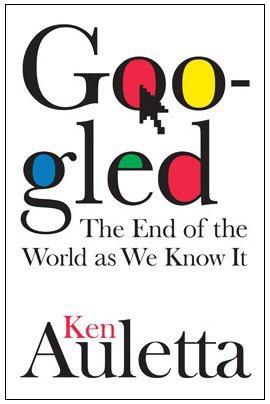
Googled: The End of the World as We Know It
by
Ken Auletta
Published 1 Jan 2009
Like Microsoft in the late nineties, the Google leadership, “composed of ideological technologists,” as Schrage put it in 2007, was slow to appreciate the political and the human dimensions of the technical decisions it made. Schrage’s resume spans a law degree, years of teaching, a senior executive position at The Gap, and work as an international consultant on corporate social responsibility. He acknowledged that Google engineers were new to the ways of Washington. “Some call that naivete. Some might criticize this; others might applaud it. No question that people here regularly discuss Microsoft’s experience and use that as a cautionary tale.” Later, meaning to explain rather than criticize, Schrage told me, “One can make the argument that the genes of technological innovation are frequently in conflict with emotional intelligence.
…
Social idealism has been a core value in the culture of the Internet, from the insistence of Tim Berners-Lee, who believed that the Web should be open and that he would not patent it or enrich himself; to the open-source movement; to Wikipedia, which follows a democratic faith in “the wisdom of crowds” and has adopted a nonprofit model. Before one dismisses these approaches as the gauzy thinking of left-wing populists, consider how often traditional companies now promote their own “corporate social responsibility”—in part to ecumenically emulate Andrew Carnegie, in part to bathe in the favorable publicity, in part to profit from some of these endeavors, and in part as a reaction against almost daily ethical business lapses. Companies like the Gap and Hallmark donate a portion of their profits to fight AIDS; Starbucks gave comprehensive health care to its employees, including part-timers.

Culture and Prosperity: The Truth About Markets - Why Some Nations Are Rich but Most Remain Poor
by
John Kay
Published 24 May 2004
"Two British Errors: Their Probable Size and Some Possible Reasons." Oxford Economic Papers 29 (2): 159-205. ---. 1986. Innocence and Design: The Influence of Economic Ideas on Policy. Oxford: Blackwell. ---. 2000. "False Perspective: The UNDP View of the World." World Economics 1 (1) Ganuary-March). ---. 2001. "Misguided Virtue: False Notions of Corporate Social Responsibility." Hobart Paper 142. London: Institute of Economic Affairs. Henney, A. 1988. The Economic Failure of Nuclear Power in Britain. London: Greenpeace. Hensler, D. S. Carrol, M. White, and]. Cross. 2001. Asbestos Litigation. Santa Monica Calif.: U.S. Rand Institute for CivilJustice. Heston, A., and R Summers. 1991.
…
Rationalism in Politics and Other Essays. London: Methuen. OECD. 1975. The Polluter Pays Principle: Definition> Analysis> Implementation. Paris: Organization for Economic Cooperation and Development. ---. 1993. Improvement of Economic Forecasts. Paris: Organization for Economic Cooperation and Development. ---. 2001. Corporate Social Responsibility: Partners for Progress. Paris: Organization for Economic Cooperation and Development. Olson, M. 1996. "Big Bills Left on the Sidewalk: Why Some Nations Are Rich, and Others Poor." journal ofEconomic Perspectives 10 (3): 3-24. Ormerod, P. 1998. Butterfly Economics: A New General Theory of Social and Economic Behavior.
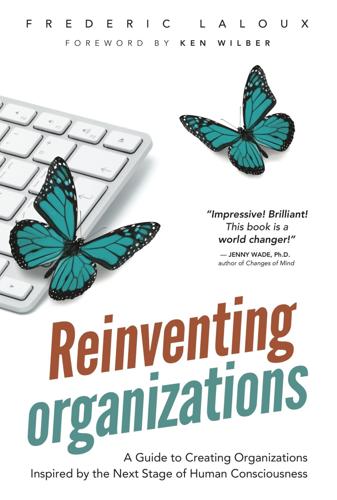
Reinventing Organizations: A Guide to Creating Organizations Inspired by the Next Stage of Human Consciousness
by
Frederic Laloux
and
Ken Wilber
Published 9 Feb 2014
Businesses have a responsibility not only to investors, but also to management, employees, customers, suppliers, local communities, society at large, and the environment. The role of leadership is to make the right trade-offs so that all stakeholders can thrive. Every large organization today has to publish a corporate social responsibility report. Green Organizations consider their social responsibility an integral part of how they do business, contrary to their Orange counterparts who often deem such reports a distracting obligation. Social responsibility is often at the core of their mission, and it provides the motivation that spurs them on to innovate and become better corporate citizens.
…
Patagonia has gone that route with its “Footprint Chronicles,” an initiative aiming to provide total transparency to the outside world about its supply chain. Casey Sheahan, Patagonia’s current CEO, explains the journey the company took and its unexpected consequences: About four years ago, we took what was a traditional Corporate Social Responsibility report and we put everything online and it’s called the Footprint Chronicles. … We actually took video cameras, we took tape recorders and still cameras into the factories. We told our factories: we intend to show our customers where everything is made, how it’s made, what the conditions are like, what the impact of transportation and water usage is on the overall carbon footprint.
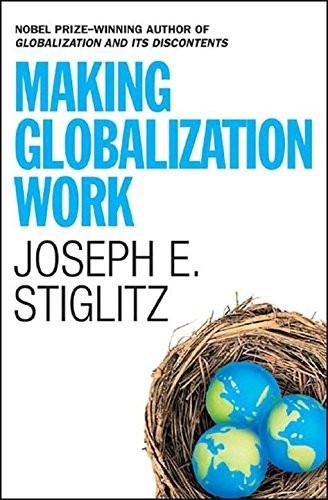
Making Globalization Work
by
Joseph E. Stiglitz
Published 16 Sep 2006
The question is how to ensure that developing countries get more benefits—and face fewer of the costs. In the following pages, I set out a five-pronged agenda that, though it will not eliminate all instances of corporate abuse, will I believe lessen them. Underlying most of these reforms is a simple objective: to align private incentives with social costs and benefits. Corporate social responsibility Though many corporations, especially in the United States, continue to argue that their sole responsibility is to shareholders, many do recognize that their responsibility goes further. There is an element of self-interest here: doing good can be good for business, and doing bad can subject companies to expensive lawsuits.
…
I have argued throughout this book that politics and economics are intricately interwoven: corporations have used their financial muscle to protect themselves from bearing the full social consequences of their actions. Why should we expect them to respond any more enthusiastically to these reforms than to any of the more modest attempts to temper their abuses? One thing that makes me hopeful is the corporate social responsibility movement. There is an increasing number of firms who do not want to see a race to the bottom. It is firms like these, in the United States and other countries, that supported the Foreign Corrupt Practices Act. Civil society too is playing a more active role, by monitoring the actions of the large mining companies and of manufacturing firms that abuse their workers.

Apocalypse Never: Why Environmental Alarmism Hurts Us All
by
Michael Shellenberger
Published 28 Jun 2020
The reporter wrote, “A coalition of women’s groups have attacked Nike as hypocritical for its new television commercials that feature female athletes, asserting that something is wrong when the company calls for empowering American women but pays its largely female overseas work force poorly.”10 Our campaign seemed like a success. We had generated so much negative publicity that we damaged Nike’s brand. As importantly, we sent a message to other corporations that they would be held accountable for conditions in factories they contracted with abroad. “I go back to 1997 to find the first clearly [corporate social responsibility] related event I can recall—the boycott of Nike—that had a real impact on the company,” said Geoffrey Heal, a Columbia University Business School professor.11 Not everybody agrees that the Nike campaign was a success. Some, like Jeff Ballinger, whose work with Indonesian factory workers dates back to 1988, believes Nike hyped “environmental sustainability” as a public-relations tool to overshadow continued human exploitation.
…
Sarah Anne Hughes, “Greenpeace Protests Barbie at Mattel Headquarters,” Washington Post, June 8, 2011, https://www.washingtonpost.com. 9. Ibid. 10. Steven Greenhouse, “Nike Supports Women in Its Ads but Not Its Factories, Groups Say,” New York Times, October 26, 1997, https://www.nytimes.com. 11. Jeff Ballinger, “Nike, Sexual Harassment and the ‘Corporate Social Responsibility’ Racket: How the Company Shut Down the New York Times,” Washington Babylon, November 9, 2017, https://washingtonbabylon.com. 12. Ibid. 13. “Statement on 2019 Copenhagen Fashion Summit,” Union of Concerned Researchers in Fashion, May 5, 2019, accessed October 26, 2019, http://www.concernedresearchers.org/ucrf-on-2019-copenhagen-fashion-summit.
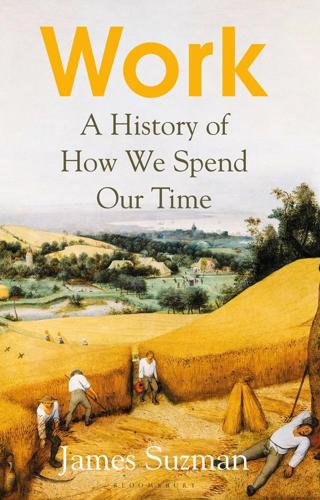
Work: A History of How We Spend Our Time
by
James Suzman
Published 2 Sep 2020
But by the 1850s a proportion of it began to trickle down to those working on the factory floors in the form of improved wages and better housing. In the absence of any meaningful government interventions beyond legislation like the Factory Act, this process was led by several very wealthy factory owners in an early incarnation of what now would be labelled ‘corporate social responsibility’. Some of them felt it was their Christian duty to better support their workers, but most of them had realised that in order for workers to be productive they also needed somewhere adequate to live, enough food to eat and sufficient income to afford an occasional luxury. As new Lords of Commerce, they set out to emulate the feudal aristocrats who came before them by spending a proportion of the often eye-wateringly large fortunes they accrued on building mass housing and public facilities for their workers within easy walking distance of their factories and mills.
…
Index aardvarks here, here abiogenesis here Abrahamic religions here, here Académie des Sciences here acetogens here Acheulean hand-axes here, here, here Adam and Eve here, here adenosine triphosphate (ATP) here advertising here Africa, human expansion out of here agriculture and the calendar here, here catastrophes here and climate change here, here human transition to here inequality as consequence of here and investment here Natufians and here, here, here, here productivity gains here, here, here, here, here proportion employed in here spread of here and urbanisation here Akkadian Empire here Alexander the Great here American Federation of Labor here American Society of Mechanical Engineers here animal domestication here, here, here, here, here animal tracks here animal welfare here animals’ souls here anomie here anthrax here Anthropocene era here anti-trust laws here ants here, here, here Aquinas, Thomas here, here, here archery here Archimedes here, here, here Aristotle here, here, here, here Arkwright, Richard here armies, standing here Aronson, Ben here artificial intelligence here, here, here, here, here, here, here, here, here ass’s jawbone here asset ownership here AT&T here Athens, ancient here, here aurochs here Australian Aboriginals here, here, here, here, here Australopithecus here, here, here, here, here, here, here, here automation here, here, here, here, here, here, here, here, here Aztecs here baboons here Baka here BaMbuti here, here, here, here, here bank holidays here, here Bantu civilisations here barter here, here, here, here, here Batek here Bates, Dorothea here beer here, here, here, here, here bees here, here, here, here Belgian Congo here, here Bergen Work Addiction Scale here Biaka here billiards here biodiversity loss here, here, here birds of paradise here bison, European here Black-Connery 30-Hours Bill here Blombos Cave here, here Blurton-Jones, Nicholas here boa constrictors here boats, burning of here Bolling Allerød Interstadial here, here, here Boltzmann, Ludwig here boredom here, here Boucher de Crèvecœur de Perthes, Jacques here, here bovine pleuropneumonia here bowerbirds here, here brains here, here, here increase in size here and social networks here Breuil, Abbé here Broca’s area here Bryant and May matchgirls’ strike here bubonic plague here ‘bullshit jobs’ here butchery, ancient here Byron, Lord here Calico Acts here Cambrian explosion here cannibalism here caps, flat here carbon dioxide, atmospheric here, here cartels here Çatalhöyük here, here Cato institute here cattle domestication of here as investment here cave paintings, see rock and cave paintings census data here CEOs here, here, here, here, here, here cephalopods here cereals, high-yielding here Chauvet Cave painting here cheetahs here, here, here child labour here childbirth, deaths in here Childe, Vere Gordon here, here, here, here chimpanzees here, here, here, here, here, here, here China here, here, here, here, here, here Han dynasty here medical licensing examination here Qin dynasty here services sector here, here Shang dynasty here, here Song dynasty here value of public wealth here Chomsky, Noam here circumcision, universal here Ciudad Neza here clam shells here Clark, Colin here, here climate change here, here, here see also greenhouse gas emissions Clinton, Bill here clothing, and status here Club of Rome here, here coal here Coast Salish here, here cognitive threshold, humans cross here, here ‘collective consciousness’ here ‘collective unconscious’ here colonialism here commensalism here Communism, collapse of here Conrad, Joseph here consultancy firms here Cook, Captain James here cooking here, here, here coral reefs here Coriolis, Gaspard-Gustave here coronaviruses here corporate social responsibility here Cotrugli, Benedetto here cotton here, here, here credit and debt arrangements here Crick, Francis here crop rotation here cyanobacteria here, here Cyrus the Great here Darius the Great here Darwin, Charles here, here, here, here, here, here, here, here debt, personal and household here deer here, here demand-sharing here Denisovans here Descartes, René here, here, here, here DeVore, Irven here Dharavi here diamonds here, here diamphidia larvae here Dinka here division of labour here, here, here DNA here, here, here mitochondrial here dogs here, here, here, here, here, here domestication of here Lubbock’s pet poodle here Pavlov’s here wild here, here double-entry bookkeeping here dreaming here Dunbar, Robin here, here Durkheim, Emile here, here, here, here Dutch plough here dwellings drystone-walled here mammoth-bone here earth’s atmosphere, composition of here earth’s axis, shifts in alignment of here East India Company here, here ‘economic problem’ here, here, here, here, here, here, here, here, here, here economics ‘boom and bust’ here definitions of here, here formalists v. substantivists here fundamental conflict within here ‘trickle-down’ here ecosystem services here Edward III, King here efficiency movement here egalitarianism here, here, here, here, here, here egrets here Egypt, Roman here, here Egyptian Empire here einkorn here Einstein, Albert here elands here, here elderly, care of here, here, here, here elephants here, here, here, here, here, here energy-capture here, here, here Enlightenment here, here, here, here Enron here Enterprise Hydraulic Works here, here entropy here, here, here, here, here, here EU Working Time Directive here Euclid here eukaryotes here eusociality here, here evolution here, here and selfish traits here see also natural selection Facebook here, here Factory Acts here, here factory system here, here famines and food shortages here, here fertilisers here, here fighting, and social hierarchies here financial crisis (2007–8) here, here financial deregulation here fire, human mastery of here, here, here, here, here see also cooking fisheries here flightless birds here foot-and-mouth disease here Ford, Henry here, here, here, here, here fossil fuels here, here, here, here, here, here, here Fox, William here foxes here, here bat-eared here Franklin, Benjamin here, here, here, here, here, here, here free markets here, here, here free time (leisure time) here, here, here, here, here, here, here, here, here freeloaders here, here, here Freud, Sigmund here Frey, Carl, and Michael Osborne here funerary inscriptions here Galbraith, John Kenneth here, here Galileo here Gallup State of the Global Workplace report here Garrod, Dorothy here, here gazelle bones here, here genomic studies here, here, here, here, here, here, here, here, here and domesticated dogs here geometry here gift giving here Gilgamesh here glacial periods here, here gladiators here Gladwell, Malcolm here globalisation here Göbekli Tepe here, here Gompers, Samuel here Google here Google AlphaGO here Gordon, Wendy here Gorilla Sign Language here gorillas here, here, here, here see also Koko Govett’s Leap here Graeber, David here, here granaries here graves here graveyards, Natufian here Great Decoupling here, here Great Depression here, here, here ‘great oxidation event’ here, here Great Zimbabwe here greenhouse gas emissions here, here see also climate change Greenlandic ice cores here grewia here Grimes, William here Gurirab, Thadeus here, here gut bacteria here Hadzabe here, here, here, here, here, here, here Harlan, Jack here harpoon-heads here Hasegawa, Toshikazu here Health and Safety Executive here health insurance here Heidegger, Martin here Hephaistos here Hero of Alexandria here Hesiod here hippopotamuses here Hitler, Adolf here hominins, evidence for use of fire here Homo antecessor here Homo erectus here, here, here, here, here, here, here, here, here, here Homo habilis here, here, here, here, here, here, here, here Homo heidelbergensis here, here, here, here, here Homo naledi here horses here, here wild here household wealth, median US here housing, improved here human resources here, here, here Humphrey, Caroline here Hunduism here hunter-gatherers, ‘complex’ here hyenas here, here, here, here, here immigration here Industrial Revolution here, here, here, here, here, here, here, here, here, here, here, here, here, here, here, here, here, here, here, here, here inequality here, here, here, here, here in ancient Rome here influenza here ‘informavores’ here injuries, work-related here Institute of Bankers here, here Institute of Management here intelligence here, here evolution of here interest here internal combustion engine here, here Inuit here, here, here, here Iroquois Confederacy here Ituri Forest here jackals here Japan here, here, here jealousy, see self-interest jewellery here, here, here, here, here Ju/’hoansi here, here, here, here, here, here, here, here, here, here, here, here, here, here, here and animals’ souls here contrasted with ‘complex hunter-gatherers’ here contrasted with farming communities here, here, here creation mythologies here and ‘creatures of the city’ here and demand-sharing here, here egalitarianism here, here, here, here, here, here energy-capture rates here life expectancy here and mockery here village sizes here Jung, Carl Gustav here kacho-byo (‘manager’s disease’) here kangaroos here Karacadag here karo jisatsu here, here karoshi here, here Kathu Pan hand-axes here, here, here Kavango here Kellogg, John Harvey here Kellogg, Will here Kennedy, John F. here Keynes, John Maynard here, here, here, here, here, here, here, here, here, here, here, here, here Khoisan here, here, here Kibera here Kish here Koko here, here, here Kubaba, Queen here Kwakwaka’wakw here, here labour/debt relationships here labour theory of value here Lake Eyasi here Lake Hula here Lake Turkana here, here language arbitrary nature of here evolution of here Gossip and Grooming hypothesis here, here Grammaticalisation theory here processing here Single Step theory here langues de chat (cat’s tongues) here latifundia here le Blanc, Abbé Jean here leatherwork here Lee, Richard Borshay here, here, here, here, here leisure activities here leisure time, see free time Leopold II, King of the Belgians here, here Lévi-Strauss, Claude here, here, here, here Liebenberg, Louis here life expectancy here, here life on earth, evolution of here lignin here Limits to Growth, The here lions here, here, here, here, here, here, here, here, here, here literacy, see writing living standards, rising here Loki here, here London neighbourhoods here longhouses here Louis XIV, King of France here Louis XVI, King of France here Löwenmensch (Lion Man) sculpture here Lubbock, Sir John here, here Luddites here, here, here Luoyang (Chengzhou) here, here luxury goods here McKinsey and Co. here, here, here ‘malady of infinite aspirations’ here Malthus, Rev.

Nine Pints: A Journey Through the Money, Medicine, and Mysteries of Blood
by
Rose George
Published 22 Oct 2018
HERproject, https://herproject.org/. 68. Lydia DePillis, “Two Years Ago, 1,129 People Died in a Bangladesh Factory Collapse. The Problems Still Haven’t Been Fixed,” Washington Post, April 23, 2015. 69. Business Case Studies, “Beyond Corporate Social Responsibility: A Primark Case Study,” https://businesscasestudies.co.uk/primark/beyond-corporate-social-responsibility/the-value-of-the-herproject.html (accessed April 2, 2018). 70. Ibid. 71. https://herproject.org/impact. 72. George, “My Gold Medal Goes to Fu Yuanhui for Talking Openly About Her Period.” 73. Clare O’Connor, “Why 2016 Was the Year of the Women-Led Period Startup,” Forbes, December 22, 2016. 74.
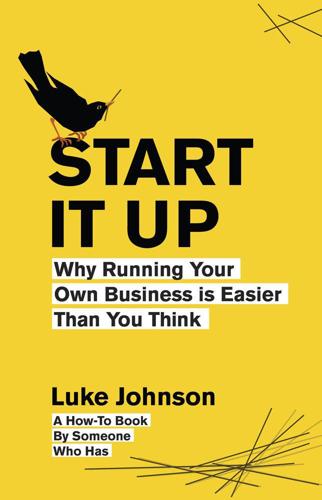
Start It Up: Why Running Your Own Business Is Easier Than You Think
by
Luke Johnson
Published 31 Aug 2011
Compensation consultants are hired to come up with justifications for paying everyone more. Training advisors are employed to distract everyone from doing their job with pointless courses. Appraisal experts are contracted to critique staff relations. Experts are drafted in to devise an appropriate Corporate Social Responsibility Agenda – whatever that is. All this paraphernalia is accepted as essential good practice by modern-thinking corporate management. Most of it is an expensive, bureaucratic load of hogwash. Of course, senior executives understand that HR directors are powerful – a bit like Mossad or the CIA.

I You We Them
by
Dan Gretton
But what we can take from those years, when some of us in this chamber used to gather on Fridays for the pickets outside the South African Embassy, is that a state that appeared to be immoveable suddenly crumbled. As Angela said this evening, what is perceived as permanent never is. As for a new strategy, what would happen if we got rid of that cliché ‘corporate social responsibility’ and started to talk instead about the individual responsibility of those working in corporations? If we started to hold the individuals within Shell to account? Those men and women who were in power at the time of the executions of Ken and his eight colleagues? What about starting to bring these individuals to justice?
…
He was one of Shell’s most influential figures in the 1990s, and was part of the team which had to co-ordinate the executive response to the media storms surrounding both Brent Spar and the executions of Ken Saro-Wiwa and his eight fellow Ogoni. He later played a key role in the birth of the so-called ‘Corporate Social Responsibility’ movement in the late 1990s. For more than ten years I’ve wondered about how to do this. It’s taken a great deal of planning and thought to get to this stage, where the people I want to talk to – the senior executives – feel able to sit down in a room with me. Three years ago I had an idea.
…
Transferring Personal Responsibility to the Authority’s Responsibility How, if you’re part of a large organisation, it is always possible to diminish your own sense of responsibility and pass on the greatest share of responsibility to others, especially those at higher levels of authority. This is perhaps the most familiar of all the categories, and links most directly with issues surrounding corporate psychology and behaviour today. I believe that the development, since the late 1990s, of the so-called CSR movement (Corporate Social Responsibility) has actually had the disturbing effect of weakening moral and ethical frameworks within companies. Creating specific departments within companies which are supposed to deal with ethical, environmental and human rights issues has allowed the majority of employees working in the corporations to defer their own sense of responsibilityfn6 onto these departments, thus reducing their individual sense of moral agency, often with disastrous consequences.
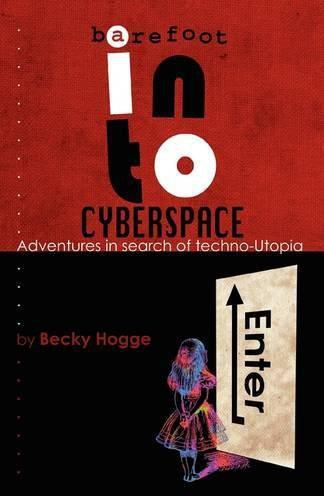
Barefoot Into Cyberspace: Adventures in Search of Techno-Utopia
by
Becky Hogge
,
Damien Morris
and
Christopher Scally
Published 26 Jul 2011
It’s not the kind of radical that smokes cigarettes in squatted factory buildings plotting revolutions, or takes to the streets in glorious technicolour. It’s not glamorous, and it’s not easy. It doesn’t smash the system, it is the system. It is consumer politics, not citizen politics. It is corporate social responsibility. It is public relations. But then, if it is also a good solution to a pressing problem, what kind of hacker would I be to ignore it? * * * Chapter 8: Ciphers and Doppelgangers When I spoke to him at the Frontline Club, Ethan told me that, for now at least, he was hopeful for the US State Department’s internet freedom agenda.
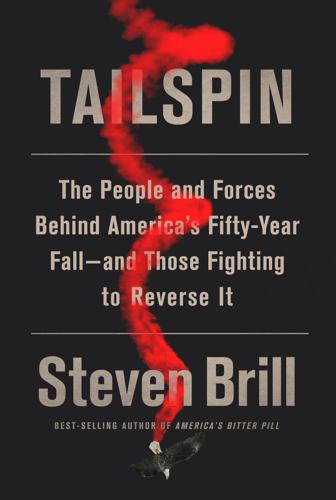
Tailspin: The People and Forces Behind America's Fifty-Year Fall--And Those Fighting to Reverse It
by
Steven Brill
Published 28 May 2018
“All too often”: Hillary Clinton, “Being Pro-Business Doesn’t Mean Hanging Consumers Out to Dry,” Quartz: https://qz.com/529303/hillary-clinton-being-pro-business-doesnt-mean-hanging-consumers-out-to-dry/. corporate charters began: Lyman Johnson, “Corporate Law and the History of Corporate Social Responsibility,” Research Handbook on the History of Company and Corporate Law, 2017. https://ssrn.com/abstract=2962432. Lipton asserted: Martin Lipton, “Takeover Bids in the Target Boardroom,” Business Lawyer, November 1979. the New York Times Company did in 1969: Joe Nocera, “How Punch Protected the Times,” New York Times, October 1, 2012, http://www.nytimes.com/2012/10/02/opinion/nocera-how-punch-protected-the-times.html.
…
Polman had to fight off: Martinne Geller and Pamela Barbaglia, “Kraft Heinz Bids $143 Billion for Unilever in Global Brand Grab,” Reuters, February 17, 2017, http://www.reuters.com/article/us-unilever-m-a-kraft/kraft-heinz-bids-143-billion-for-unilever-in-global-brand-grab-idUSKBN15W18Y. “CEOs need not aspire”: http://www.nationalreview.com/article/446342/corporate-social-responsibility-unilever-ceo-exemplifies-its-hypocrisy. Polman announced a plan: Chad Bray, “Unilever to Sell Its Spreads Business and Restructure,” New York Times, April 6, 2017, https://www.nytimes.com/2017/04/06/business/dealbook/unilever-spreads.html?_r=0. “Do we choose”: Thomas Buckley and Matthew Campell, “The Fresh Scent of Success,” Bloomberg Businessweek, September 4, 2017. 4 THE GREENING OF THE FIRST AMENDMENT we will call Jones: I was there; interviews with Jones.

Robot Rules: Regulating Artificial Intelligence
by
Jacob Turner
Published 29 Oct 2018
This is not to say that companies will always chase profit no matter what the consequences. Most jurisdictions permit companies to act for wider social goals should they decide to do so in addition to profit-making and accord a company’s officers’ wide discretion to act in the company’s best interests. Clearly, corporate social responsibility and ethical considerations can and do form part of companies’ business plans. However, considerations of doing good are often secondary to or at the very least in tension with the requirement to create value for shareholders.14 Under most legal systems, profit-making entities are accountable to their owners, who can challenge the actions of directors.15 In one infamous example, the automobile industry pioneer Henry Ford declared that “[m]y ambition is to employ still more men, to spread the benefits of this industrial system to the greatest possible number, to help them build up their lives and their homes”.
…
See, for instance, Pierre Pellegrin, “Aristotle’s Politics”, in The Oxford Handbook of Aristotle, edited by Christopher Shields (Oxford: Oxford University Press, 2012), 558–585. 14See, for example, Thomas Donaldson and Lee E. Preston, “The Stakeholder Theory of the Corporation: Concepts, Evidence, and Implications”, The Academy of Management Review, Vol. 20, No. 1 (January 1995), 65–91; David Hawkins, Corporate Social Responsibility: Balancing Tomorrow’s Sustainability and Today’s Profitability (Hampshire, UK and New York, NY: Springer, 2006). 15Christian Leuz, Dhananjay Nanda, and Peter Wysocki, “Earnings Management and Investor Protection: An International Comparison”, Journal of Financial Economics, Vol. 69, No. 3 (2003), 505–527. 16Dodge v.
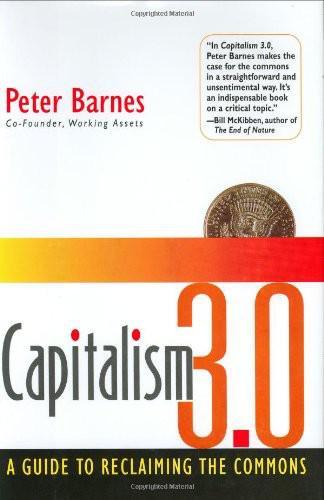
Capitalism 3.0: A Guide to Reclaiming the Commons
by
Peter Barnes
Published 29 Sep 2006
They recall a time when companies were rooted in their communities, hired workers for life, and contributed to local charities. The trouble is, those days are irreversibly gone. Today, owners live nowhere near workers, labor and nature are costs to be minimized, and it’s hard to see what might displace profit as the organizing principle for publicly traded corporations. SOCIALLY RESPONSIBLE SHAREHOLDERS Managers are ultimately responsible to shareholders, so if shareholders demanded social responsibility, perhaps managers would pay attention. That’s the thinking behind socially responsible investing. Could this tactic tame corporations? Partisans of this approach employ two techniques: screened investment (putting money in “good” companies and withholding it from “bad” ones) and shareholder activism.
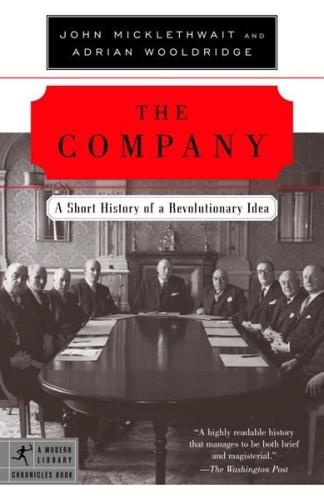
Company: A Short History of a Revolutionary Idea
by
John Micklethwait
and
Adrian Wooldridge
Published 4 Mar 2003
And companies began to hire public-relations advisers, notably Ivy Lee (1877–1934), who almost managed to smooth over the Rockefellers’ brutal suppression of the 1913–1914 miners’ strike against the Colorado Fuel and Iron Company.29 But it was not all just spin. The second thing was the growth of what would now be called corporate social responsibility. As we have already seen, Rosenwald thought it was good business to set up a pension fund for Sears workers. Many other big companies made positive efforts to cement the bond between capital and labor. U.S. Steel, for instance, spent $10 million a year on employee welfare programs—“to disarm the prejudice against trusts,” as the chairman of the board informed his colleagues.
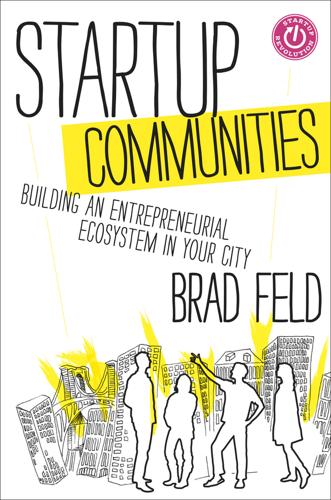
Startup Communities: Building an Entrepreneurial Ecosystem in Your City
by
Brad Feld
Published 8 Oct 2012
Brad Feld and his wife Amy Batchelor had the same realization several years earlier when I talked to him about it. He challenged me with the words, “If not us, who? If not now, when?” I began an exploration to understand what other people around the United States were doing to bring corporate social responsibility into their startups. I noticed the great work the Marc Benioff (Salesforce.com CEO) and Suzanne DiBanca (Salesforce.com Foundation Executive Director) were doing. They had a model of 1/1/1 where they gave 1 percent of equity, 1 percent of time, and 1 percent of product to the Salesforce.com Foundation contribute back to their community in exchange for the support their community had given them in launching their company.
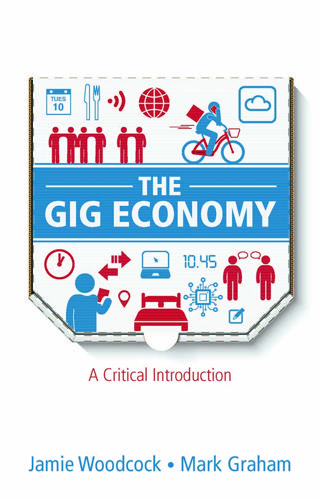
The Gig Economy: A Critical Introduction
by
Jamie Woodcock
and
Mark Graham
Published 17 Jan 2020
But it need not be that way. We agree with Susskind that clients want outcomes. However, they also want more than that. How many of us would knowingly support companies that we know are actively engaging in destructive production practices? Indeed, a central reason why large companies spend so much money on corporate social responsibility is to ensure that they are not perceived as unethical. This desire for companies to be seen to be doing the right thing in order to avoid the reputational damage that could come with bad press has sparked an immense range of kitemarks, schemes and standards, all with the intent of informing consumers that the commodities that they buy are produced in ethically sensitive ways.

The Most Good You Can Do: How Effective Altruism Is Changing Ideas About Living Ethically
by
Peter Singer
Published 1 Jan 2015
I suspect that in a decade or two, as we get more experience with earning to give, the ethical objections Brooks and others make to the practice will come to be seen as typical of the grumblings of an older generation that does not really understand what the next generation is doing. A Brookings Institution study has pointed out that millennials are much more concerned about corporate social responsibility than any previous generation, and as employees, they want “their daily work to be part of, and reflect, their societal concerns.”20 There are many ways of achieving that integration between work and social values. For the right person in the right circumstances, earning to give is one of them. 5 Other Ethical Careers Earning to give is a distinctive way of doing good.

The Coffee Book: Anatomy of an Industry From Crop to the Last Drop
by
Gregory Dicum
and
Nina Luttinger
Published 1 Jan 1999
Ryan and Alan Thein Durning, Stuff: The Secret Lives of Everyday Things (Seattle, WA: Northwest Environment Watch, 1997), 7–12. 4 National Marketing Institute, “Organic Food and Beverage Sales Increase 18 Percent” Press release, February 22, 2005. 5 Datamonitor, “Natural Food and Drinks Report,” 2003. 6 Paul H. Ray, The Cultural Creatives: How 50 Million People Are Changing the World (New York: Harmony Books, 2000). 7 Natural Marketing Institute, 2005. Corporate Social Responsibility, Consumer Understanding and Influence. Press release, August 18, 2005. 8 Giovannucci, D. “Sustainable Coffee Survey of the North American Specialty Coffee Industry,” 2001. 9 National Coffee Association, personal interview with Joe DeRupo, Director of Communications and Public Relations, September 20, 2005. 10 SPINS, personal interview with David Browne, Director of Content Development, September 28, 2005. 11 National Coffee Association, “National Coffee Drinking Trends Report,” 2005. 12 Interviewed by TransFair USA, January, 2005. 13 Peter Fritsch, “An Oversupply of Coffee Beans Deepens Latin America’s Woes,” Wall Street Journal, July 8, 2002. 14 Fair Trade Federation, “Fair Trade Trends Report,” 2005. 15 Chris Willie, “The Birds and the Beans; Coffee Trees as Bird Habitats,” Audubon 96, no. 6 (November 1994): 58.
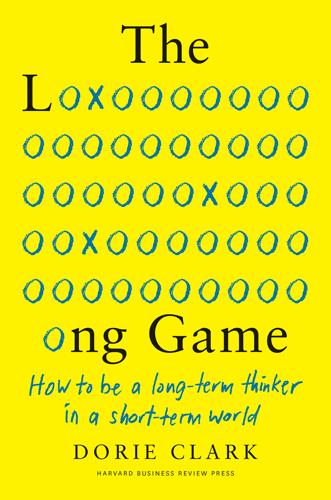
Long Game: How Long-Term Thinker Shorthb
by
Dorie Clark
Published 14 Oct 2021
Sometimes we just need to remember what got us started in the first place. Forget What Others Think Other times, we have a sense of what we’d like to pursue, but worry it’s the wrong move. That was the case with T. J. Wagner, an army officer I met several years ago. For a number of years, I’ve worked with the consulting firm Deloitte on a corporate social responsibility initiative it runs, the CORE Leadership Program, which helps military veterans on the cusp of transitioning back into civilian life think through their career goals, how to talk about their military experience, and more. I’ve delivered a keynote about professional reinvention more than two dozen times.
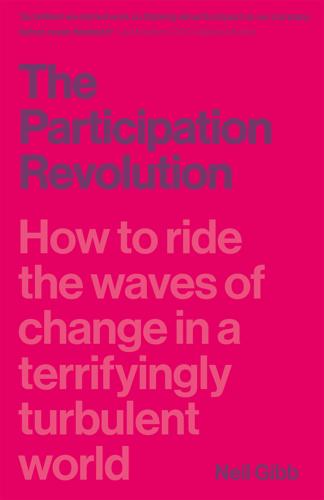
The Participation Revolution: How to Ride the Waves of Change in a Terrifyingly Turbulent World
by
Neil Gibb
Published 15 Feb 2018
The millennial generation’s lack of interest in their predecessors’ way of life is actually a searing indictment of how empty and meaningless they see it has become. Why would they sign up to work for a company that only exists to make money for its shareholders, that doesn’t really give a damn about its employees or the environment? (And, no, the fact you have a Corporate Social Responsibility program doesn’t cut it – we mean, really.) Why would they engage with a political system that has been seen to fail to deliver on its promises over and over again, that is so full of the kind of rhetoric that Sorkin favours, but so poor on delivery? What is great about the millennials is that they are a generation that has developed a highly-tuned bullshit detector.

MacroWikinomics: Rebooting Business and the World
by
Don Tapscott
and
Anthony D. Williams
Published 28 Sep 2010
After all, competition through free enterprise and open markets may remain at the heart of a dynamic economy, but we can’t rely on competition and the pursuit of short-term economic gain alone to promote innovation and economic well-being. Vibrant markets rest on robust common foundations: a shared infrastructure of rules, institutions, knowledge, standards, and technologies provided by a mix of public and private sector initiative. 4. Integrity Years ago corporate social responsibility advocates coined the optimistic adage, “you do well by doing good.” They were trying to make a business case for good corporate behavior. Few were persuaded. The main reason for the lack of success in winning support for corporate responsibility was that the “doing well by doing good” adage was not true.
…
T-shirts, handbags, and sports apparel would all be wholly recyclable too. Customers could come back for as many new designs as money can buy without Nike extracting another scarce resource or worrying about hundreds of millions of well-worn cross-trainers taking up space in the world’s landfills. “This isn’t just corporate social responsibility,” says Lauber. “Our lab is focused on much bigger industry shifts—we’re making investments in initiatives that will take us to the new green economy.” So far, so good, right? Except, here’s Lauber’s problem. Nike is developing a whole portfolio of sustainable technologies, many of which are not core to Nike’s business model.
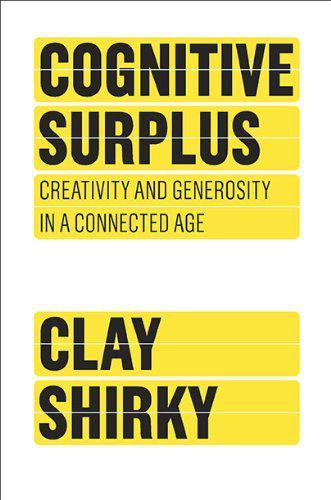
Cognitive Surplus: Creativity and Generosity in a Connected Age
by
Clay Shirky
Published 9 Jun 2010
CHAPTER 7: Looking for the Mouse 185 notes in his book The Success of Open Source: Steven Weber, The Success of Open Source (Cambridge, MA: Harvard University Press, 2005): 272. 188 He got a loan to enter the indulgence-printing business: The British Library discusses Gutenberg’s printing of indulgences in its documentation of Gutenberg’s Bible: http://www.bl.uk/treasures/gutenberg/indulgences.html (accessed January 9, 2010). 188 John Tetzel, the head pardoner for German territories: Tetzel’s place in history was largely secured by Martin Luther’s objections to indulgences in 1517, but his name recently reappeared when the Catholic Church brought back indulgences in 2008; in discussing this change, John Allen references Tetzel’s phrase in the Room for Debate blog, http://roomfordebate.blogs.nytimes.com/2009/02/13/sin-and-its-indulgences (accessed January 7, 2010). 190 As Elizabeth Eisenstein notes in The Printing Press as an Agent of Change: Elizabeth Eisenstein, The Printing Press as an Agent of Change: Communications and Cultural Transformations in Early-Modern Europe (Cambridge, U.K.: Cambridge University Press, 1980). 192 a computer system called PLATO: Elisabeth Van Meer discusses this history in “PLATO: From Computer-Based Education to Corporate Social Responsibility,” Iterations: An Interdisciplinary Journal of Software History (2003): 6-22. 196 “The behavior you’re seeing is the behavior you’ve designed for”: Joshua Porter, “The Behavior You’re Seeing Is the Behavior You’ve Designed For,” Bokardo, July 28, 2009, http://bokardo.com/archives/the-behavior-youve-designed-for (accessed January 10, 2010). 203 One of the most parsimonious examples of this pattern on the web is from JavaRanch: “Be Nice,” JavaRanch, http://faq.javaranch.com/java/BeNice (accessed January 10, 2010). 203 it sometimes upgraded its software every half hour: Nisan Gabbay, “Flickr Case Study: Still About Tech for Exit?”

Hit Refresh: The Quest to Rediscover Microsoft's Soul and Imagine a Better Future for Everyone
by
Satya Nadella
,
Greg Shaw
and
Jill Tracie Nichols
Published 25 Sep 2017
John Batelle, Wired’s co–founding editor, once wrote that “Business is humanity’s most resilient, iterative, and productive mechanism for creating change in the world.” He is right—and we business leaders need to take seriously our responsibilities as change leaders. I don’t say this for purposes of so-called corporate social responsibility, which is important but can also serve as little more than good PR. I say it because a better world is better for business. It’s important to be dedicated to creating great products, serving customers, and earning profits for our investors—but it’s not sufficient. We also need to think about the impact of our actions on the world and its citizens long into the future.

Mobility: A New Urban Design and Transport Planning Philosophy for a Sustainable Future
by
John Whitelegg
Published 1 Sep 2015
Businesses will replace physical travel with virtual meetings due to improved telecommunication. High speed internet will see video-conferencing and tele-presence systems commonplace in offices. The MI foresees a cultural-change in organisations towards travel through de-incentivising foreign travel and a stronger sense of corporate social responsibility. Constraining capacity: The BAU Scenario was based on DfT forecasts that included additional capacity at Stansted Airport and a third runway at Heathrow Airport. In the MI Scenario, we assume that the policy that sanctioned these additional runways would be reversed (as subsequently occurred under the 2010 Conservative-Liberal Democrat coalition government with respect to the third runway at Heathrow airport).
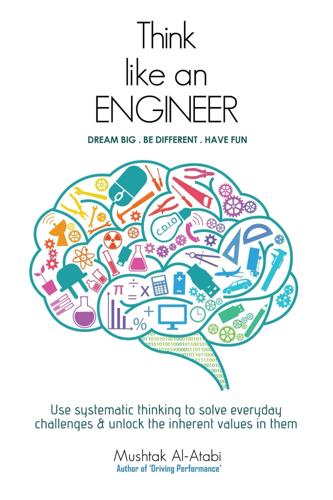
Think Like an Engineer: Use Systematic Thinking to Solve Everyday Challenges & Unlock the Inherent Values in Them
by
Mushtak Al-Atabi
Published 26 Aug 2014
This is another example of understanding what a supplier values and delivering that. Fair deals are desirable not only by suppliers but also some customer segments that are equity sensitive. 11.2.5 Society Value Increasingly, businesses are expected to be responsible towards the environment and the societies they operate within. Nowadays, Corporate Social Responsibility (CSR) represents a key element of the operation of the multinational corporations with dedicated departments and budgets. 11.3 Business Model (Entrepreneurial Ecosystem) The entrepreneurial ecosystem is a description of the environment in which the value proposition is created and delivered.
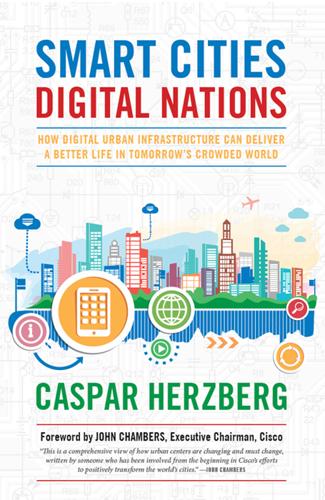
Smart Cities, Digital Nations
by
Caspar Herzberg
Published 13 Apr 2017
The company’s 5,000 employees are drawn regularly from the student body and faculty; it is not unusual to meet former professors of economics and engineering in corporate headquarters. Beyond the draw of talent, Insigma benefits from its positioning at the crossroads of the city’s elite and best-educated citizens. Since education had long been a primary conduit for Cisco’s corporate social responsibility, they had a great deal to discuss with Insigma’s leadership from the outset. Beyond that, the company’s approach to enabling municipalities was very much in accord with Cisco’s. A key preliminary step was establishing a research and development center in the city in 2011. This signaled both Cisco’s commitment to the region and a willingness to work with the very student population that was so essential to Insigma’s growth.
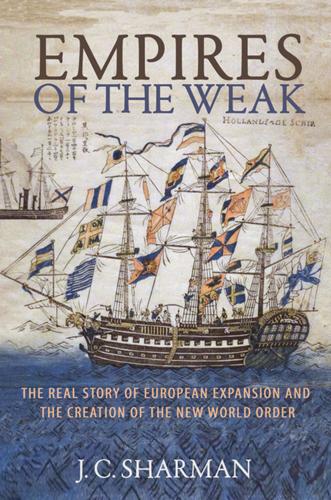
Empires of the Weak: The Real Story of European Expansion and the Creation of the New World Order
by
Jason Sharman
Published 5 Feb 2019
Yet because of the stickiness of internal routines, form and actual functioning often diverge, leading to pervasive window-dressing, ritual, or what is referred to as “de-coupling”: the difference between what should happen in theory, and what happens in practice. For example, the ideal contemporary firm (or university) is “client-centric,” closely engaged with “stakeholders,” has a flat hierarchy with listening bosses and empowered employees, and is deeply concerned with environmental sustainability, gender equality, and corporate social responsibility. But above all, this ideal firm efficiently provides the best goods and services in class at the lowest cost to its appreciative customers. Even when the corporate reality falls far short, this model of how things should be done is very powerful, for reasons that are only loosely connected with matters of profit and loss: “highly professionalized consultants who bring external blessings on an organization are often difficult to justify in terms of improved productivity, yet may be very important in maintaining internal and external legitimacy.”69 In governments likewise, “Administrators and politicians champion programs that are established but not implemented; managers gather information assiduously, but fail to analyze it; experts are hired not for advice but to signal legitimacy.”70 Legitimacy may even be more useful for success and survival than actually getting the job done.
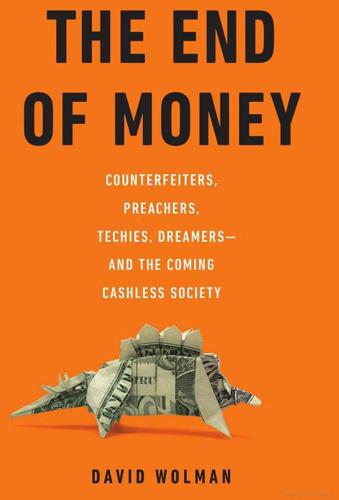
The End of Money: Counterfeiters, Preachers, Techies, Dreamers--And the Coming Cashless Society
by
David Wolman
Published 14 Feb 2012
That may sound like a lot, but the heat is on for Sinha to ramp the operation up another notch if he’s going to prove the company’s worth. As big-hearted as this model may be for encouraging savings and all the rest of it, Eko and other mobile banking initiatives are still businesses. One pinstriped-suit wearing Indian telecom executive put it this way: “This is not about corporate social responsibility or public relations. We want to get paid.” In the same breath, however, he painted an idealistic picture of branchless banking, and of what this technology could mean for his country and for the hundreds of millions of people in India struggling against abject poverty. “The backward classes and all that shit has gone on too long,” he says.

The City Always Wins: A Novel
by
Omar Robert Hamilton
Published 12 Jun 2017
Gone, because we’re coming and first we’ll bring you war and you’ll run and we’ll seal iron chains around your neck and brand you with new names and drink your bodies in tea in your grandfathers’ houses and when we’re bored of war we will bring you peace and post-conflict resolution and interfaith dialogue and the United Nations and credit lines and television and when you choke we will grip your jaw firm in our hands and force open your mouth for structural adjustment and dialogue camps and off-Broadway plays and aid packages and first-party negotiations and mediated solutions and corporate social responsibility until your brain is reconfigured with our committee-designed computer-assisted algorithmically determined languages of unmeaning and you are finally and forever stripped of even the possibility of thought. * * * The triumph of it all is the vanquishing of imagination. There can be nothing new.

The Fair Trade Scandal: Marketing Poverty to Benefit the Rich
by
Ndongo Sylla
Published 21 Jan 2014
When addressing the problems faced by the world’s poor, the tone is at once dark and optimistic, hence reaching out to various audiences (consumers, solidarity movements, alterglobalists, politicians, etc.). In other words, when neoliberals talk about rights, choice and freedoms, Fair Trade actors use words such as ‘consum’actors’, ‘ethical consumption’, ‘responsible consumption’, ‘corporate social responsibility’, ‘sustainable development’, ‘a cart, a vote’, ‘buycott’, etc. While these materials are rich, it is difficult to extract any substance from them, or any arguments that are free from partisan ornaments. This type of literature is filled with confusing information, contradictory statements 4 Sylla T02779 01 text 4 28/11/2013 13:04 introduction and academic laziness: philosophers arguing that consumers have a moral imperative to buy Fair Trade products, while governments are morally bound to back the movement; social scientists not paying due attention to the specificities of the contexts under study; confused economists relying on the authority of simplistic theoretical arguments provided by economic textbooks; priests being seduced by marketing; marketing gurus being satisfied with statistics they do not understand; supporters of free trade ignoring the fact that free trade has more similarities to than differences from Fair Trade; the alterglobalist movement attempting to redeem the free market … But the greater irony is that the new advocates of the poor unknowingly work for the rich, being themselves part of this category.
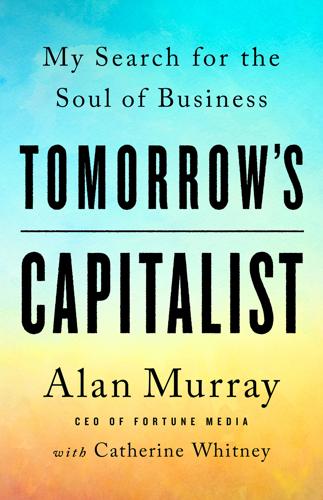
Tomorrow's Capitalist: My Search for the Soul of Business
by
Alan Murray
Published 15 Dec 2022
JPMorgan CEO Jamie Dimon came to the CEO Initiative’s 2017 meeting and had this to say in an interview with Fortune editor in chief Clifton Leaf about his bank’s effort to rescue the failing city of Detroit, which included a $100 million investment (later extended to $200 million): “I have never had this conflict between shareholders and corporate social responsibility. I look at business very personally. If I have a store in a town, you participate in the neighborhood, you help the homeless, you might help the local church or synagogue, a Little League team, might give some summer jobs, that’s what you do. That is called humanity. I’ve never been conflicted on that.”
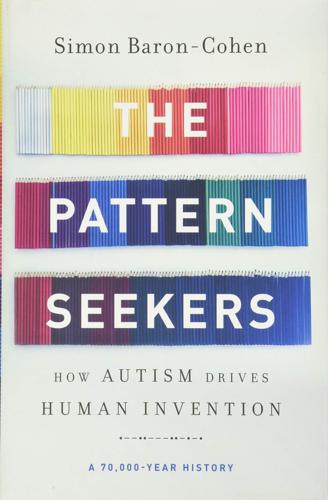
The Pattern Seekers: How Autism Drives Human Invention
by
Simon Baron-Cohen
Published 14 Aug 2020
Since then, a rapidly growing list of other companies have followed Specialisterne’s example in an effort to increase the employment opportunities available to autistic people—one survey estimated that only 16 percent of autistic adults are in full-time employment7—and to realize the advantages to be gained from having employees on their team who think differently.8 These efforts can be seen as part of a company’s corporate social responsibility, since employing an autistic person is likely to improve that person’s mental health by allowing them to feel included and valued and by reducing their social isolation. One such company, Auticon (the name is shorthand for “autistic consultants”), only hires autistic people, who are offered jobs for life.
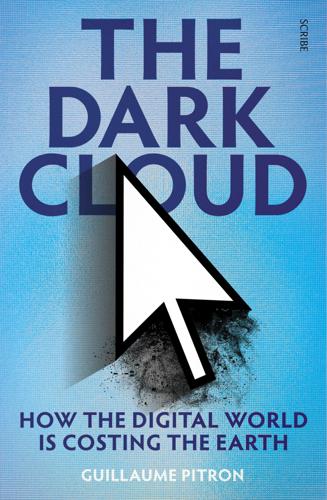
The Dark Cloud: How the Digital World Is Costing the Earth
by
Guillaume Pitron
Published 14 Jun 2023
Power(s) at the end of the cable’), RFI, 28 March 2019. 64 Interview with Laurent Campagne, 2020. Conclusion 1 Interview with Inès Leonarduzzi, director of Digital For The Planet, 2019. 2 Known as the FAIR principles (findable, accessible, interoperable, reusable). 3 Known as corporate social responsibility (CSR). 4 ‘Coining less expensive currency’, NIST, 20 June 2018. 5 Interview with Victoire de Margerie, founder and vice-president of the World Materials Forum, 2018. 6 ‘Apple adds Earth Day donations to trade-in and recycling program’, Apple, 19 April 2018. ‘Volvo mines blockchain to keep ethical sourcing promise’, Forbes, 27 January 2020. 7 waag.org 8 libreplanet.org, framasoft.org, linux.org. 9 With these networks, users, through their mobile phones, provide the wireless link of a community internet network: guifi.net. 10 ‘Climate Crisis: the unsustainable use of online video.
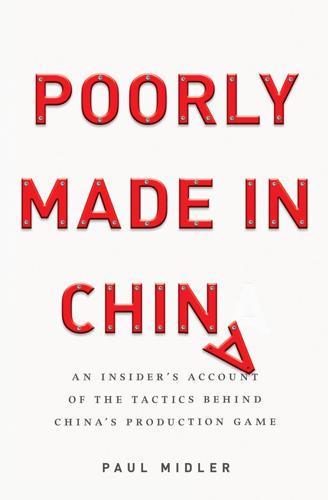
Poorly Made in China: An Insider's Account of the Tactics Behind China's Production Game
by
Paul Midler
Published 18 Mar 2009
He then purchased some equipment and filled the bulk of the order. In his office, Stanley delivered a small speech about all that he was doing for his employees. He had set up a karaoke lounge at the factory, he said, where workers could spend their evenings. He peppered his language with buzzwords like “corporate social responsibility” and said that he had initiated a profit-sharing plan. When we went onto the factory floor later, I buttonholed a few workers and asked them if they had anything like a profit-sharing scheme in place. Aside from the usual Chinese New Year bonus—the one that most companies gave out—the workers could not name any such arrangement.

Branded Beauty
by
Mark Tungate
Published 11 Feb 2012
This, then, was the Body Shop brand: the colourful products with their odd names (Banana Hair Conditioner, Dewberry Body Lotion), the ethical business practices, the succession of worthy causes, and corkscrew-curled Anita in the eye of it all, trekking to deserts and rainforests to bring us back new and exotic ways of scrubbing our skin and washing our hair. As Paul Vallely writes, ‘it was an extraordinary achievement – she had taken cruelty-free products out of hippie health-food shops and into the high street… she became a key figure in turning the idea of corporate social responsibility… from an idealistic fringe notion into a mainstream concern’. Roddick was a one-woman PR machine, but that does not mean she didn’t rely on outside help. The company established a formal marketing department around the time it moved into the United States; it also hired an advertising agency (‘Body Shop creates space for a voice in marketing’, Independent, 1 July 1995).
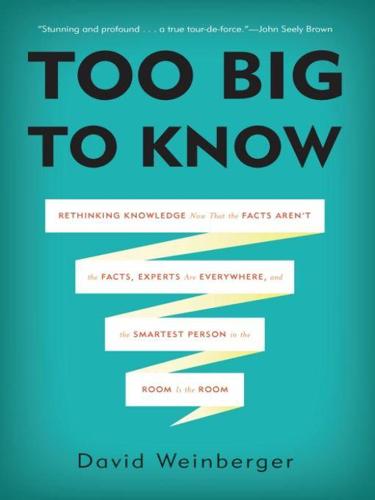
Too Big to Know: Rethinking Knowledge Now That the Facts Aren't the Facts, Experts Are Everywhere, and the Smartest Person in the Room Is the Room
by
David Weinberger
Published 14 Jul 2011
This is one reason that collaborative networks often structure themselves into fairly autonomous modules (as with Linux and Debian): Local expertise can have more effect, with less risk to the whole. Fifth, when decisions are made locally throughout the network, they are likely to express the interests of the local members who, typically, are volunteers. This is one way to make “corporate social responsibility” more than a bullet item on a corporate PowerPoint slide. Of course, all of the networked collaborative efforts we’ve looked at also have structures in place to ensure that local units or individuals don’t stray too far off the agreed-upon course. Sixth, hierarchical organizations that rest the pointy end of the pyramid on the back of a single human being are not as resilient as organizations that distribute leadership throughout a connected network.
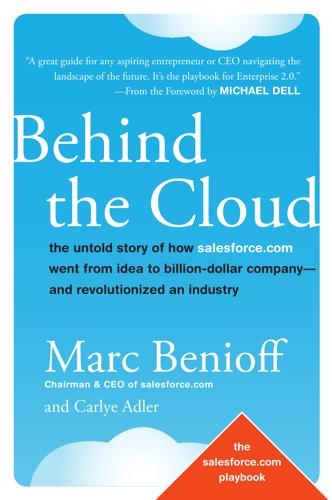
Behind the cloud: the untold story of how Salesforce.com went from idea to billion-dollar company--and revolutionized an industry
by
Marc Benioff
and
Carlye Adler
Published 19 Nov 2009
Over the next few months, we researched established corporate foundations and personally met with dozens of foundation directors, including those at Cisco Systems, Hewlett-Packard, and Levi Strauss & Co. There was much to learn from the experiences of these companies, and it was our intention to unearth the best practices in corporate social responsibility. Play #66: Make Your Foundation Part of Your Business Model The insight we gained from other companies was tremendous. eBay, for example, had endowed its foundation with $1 million of corporate stock prior to the company’s 1998 initial public 140 The Corporate Philanthropy Playbook offering.
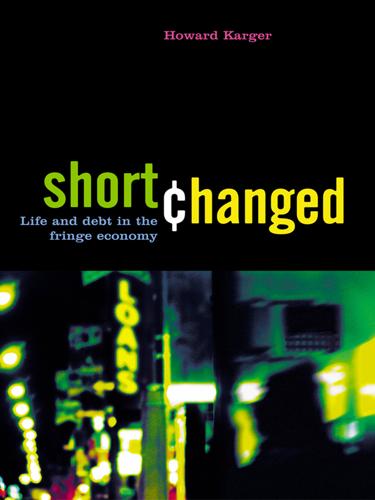
Shortchanged: Life and Debt in the Fringe Economy
by
Howard Karger
Published 9 Sep 2005
FiSCA demanded that “the Federal Reserve Bank should require, as a condition to approving the acquisition, that Bank of America make commercial banking facilities available to check cashers and prohibit the bank from enforcing its discriminatory blanket withholding of services from the entire industry.”37 Lest one believe that BofA’s refusal to provide financial services to the check-cashing industry is grounded in corporate social responsibility, the bank charges $5 to cash checks in many states, which is the same as, if not more than, what many commercial check cashers charge. The fringe economy is clearly too profitable to be overlooked by mainstream financial institutions.15 17 Our customer base is very large, diverse, and rapidly growing–it’s really mainstream America.
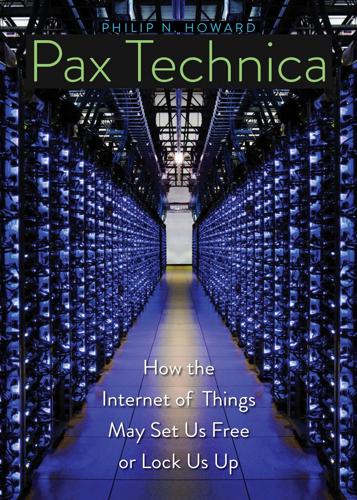
Pax Technica: How the Internet of Things May Set Us Free or Lock Us Up
by
Philip N. Howard
Published 27 Apr 2015
AccessNow, the main organization that lobbied corporations to keep communications networks running and pressured technology companies to stop selling software tools to dictators, organized the Silicon Valley Human Rights Conference in November 2011.23 The event was sponsored by Google, Facebook, Yahoo!, AT&T, Skype, and other technology firms, and it brought together the corporate leaders and foreign policy officials of major Western democratic nations to design policies for corporate social responsibility in the interest of international human rights. Similarly, the governments of the United States, the Netherlands, Sweden, and the European Union all created formal funding programs totaling more than $100 million to support digital activists working from within repressive regimes. At least seven conventions and conferences have been brokered by the foreign policy offices of key Western democratic countries since the Arab Spring.
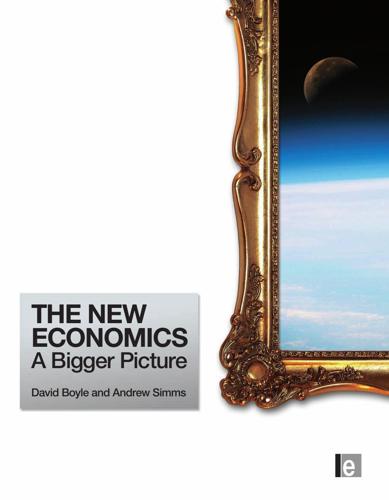
The New Economics: A Bigger Picture
by
David Boyle
and
Andrew Simms
Published 14 Jun 2009
It is taken up, where it is taken up, by policy makers to solve specific problems, often without the ideological baggage that guaranteed its humanistic roots. Alternative economic indicators and social auditing, both developed at nef, became completely mainstream, but at some cost – government targets suffocated local initiative and social auditing pigeon holed corporate social responsibility in the public relations and accountancy departments. Energy taxation has been muddled by many of the governments that have enacted it – including the EU – but it is at least in place. Credit unions and community banks have sometimes bucked this trend, and remain a small but potent force.

The People's Platform: Taking Back Power and Culture in the Digital Age
by
Astra Taylor
Published 4 Mar 2014
Mason, author of the book The Pirate’s Dilemma: How Youth Culture Reinvented Capitalism, acknowledged that piracy can sometimes cut into profits. But in crisis, as they say, lies opportunity. He gave the example of drug companies distributing widely pirated copies of their patent medicines without charge. “They started winning corporate social responsibility awards,” Mason rhapsodized. “And all the advertising money in the world couldn’t help them do that.” Or take shoes; instead of suing a Japanese bootlegger for selling altered versions of their sneakers, Nike made a fortune appropriating the redesigns. “Pirates are taking over the good ship capitalism, but they’re not here to sink it.

Exponential Organizations: Why New Organizations Are Ten Times Better, Faster, and Cheaper Than Yours (And What to Do About It)
by
Salim Ismail
and
Yuri van Geest
Published 17 Oct 2014
These organizations come in many forms (Benefit or B Corporations, Triple Bottom Line, L3Cs, the Conscious Capital movement, the Slow Money movement) and leverage their MTPs to integrate social and environmental issues—as well as profits—into their business processes. This trend started with the rise of corporate social responsibility (CSR) programs in organizations. In 2012, 57 percent of the Fortune 500 published a CSR report—double the number from the previous year. The difference is that CSR initiatives are add-ons to most companies’ core business; for social enterprises, CSR initiatives are the core business. Martin Seligman, a leading expert on positive psychology, differentiates between three states of happiness: the pleasurable life (hedonistic, superficial), the good life (family and friends) and the meaningful life (finding purpose, transcending ego, working toward a higher good).

Lab Rats: How Silicon Valley Made Work Miserable for the Rest of Us
by
Dan Lyons
Published 22 Oct 2018
Ashoka was founded in 1980 by Bill Drayton, a onetime McKinsey consultant and federal government bureaucrat, who, like Dees, also has been called “the godfather of social entrepreneurship.” The organization now has more than four hundred employees in ninety-eight countries. Universities are adding programs not because employers request this but because “students are knocking down their doors,” Lax says. “They’re not happy with the state of corporate social responsibility, and they’re also not happy with how a traditional nonprofit works. They’re pushing for another way.” WIRPs: Well-Intentioned Rich People Academics have developed the intellectual underpinnings of the movement, but equally important are people I call WIRPs—well-intentioned rich people.

The Wisdom of Psychopaths: What Saints, Spies, and Serial Killers Can Teach Us About Success
by
Kevin Dutton
Published 15 Oct 2012
It is psychopaths, he concludes, who are to blame for the global financial crisis, because their “single-minded pursuit of their own self-enrichment and self-aggrandizement to the exclusion of all other considerations has led to an abandonment of the old-fashioned concept of noblesse oblige, equality, fairness, or of any real notion of corporate social responsibility.” There’s no denying he might well be onto something. On the other hand, however, there’s society in general, proclaims Charles Elson, head of the Weinberg Center for Corporate Governance at the University of Delaware—who proposes that rather than laying the blame solely at the door of the corporate fat cats, it should, instead, also be pinned on a culture of moral malfeasance, in which truth is stretched on a rack of sententious self-interest, and ethical boundaries blurred way beyond anything of conscionable cartographical interest.
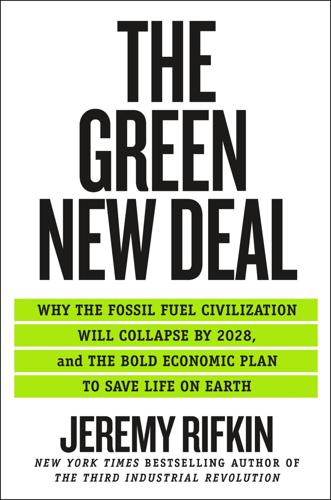
The Green New Deal: Why the Fossil Fuel Civilization Will Collapse by 2028, and the Bold Economic Plan to Save Life on Earth
by
Jeremy Rifkin
Published 9 Sep 2019
The PRA found that 70 percent of the UK banks recognized that climate change is now posing a risk to a wide range of assets across almost every field, “and they have started to assess how the transition to a low-carbon economy driven, for example, by government policy and technical change, may impact the business model of companies that banks are exposed to.” More disturbing, however, despite the awareness of the issue, only 10 percent of the banks were currently managing these risks “comprehensively,” and 30 percent of the banks “still only considered climate change a corporate social responsibility issue.”54 Concerned that the banking sector might not be fully aware of how quickly climate change is affecting investment risks across virtually every sector of the global economy, including potential stranded assets in the fossil fuel sector and closely coupled industries, Mark Carney stepped in a second time.

Brave New Work: Are You Ready to Reinvent Your Organization?
by
Aaron Dignan
Published 1 Feb 2019
In this century, for new forms of incorporation that prioritize purpose and public benefit to work, we need new investors and investment vehicles that align with our values. Rising to meet that challenge, impact investing reflects a growing desire among investors to generate returns through investments that provide a public benefit. As concepts such as corporate social responsibility and triple bottom line (social, environmental, economic) have become more well known, the market has grown into a $250 billion industry on its way to half a trillion or more in the next decade. Private equity firm TPG recently launched the Rise Fund, the largest fund of its kind thus far, with more than $2 billion in committed capital and a founder’s board that includes U2 frontman Bono, producer/philanthropist Jeff Skoll, Richard Branson, and Reid Hoffman.

I Deliver Parcels in Beijing
by
Hu Anyan
But there’s one more thing that I think only becomes apparent through comparison. S Company, being the bellwether of the industry, enjoyed a surplus of human resources and very advantageous labor-management dynamics. The low-level administrators in the company—whose domain was reality and not the utopia of corporate social responsibility its claims suggested—used the company’s enviable position to enforce more thorough appraisals. The result was, Director L and Manager Z’s sense of entitlement made it difficult for me to meet their standards. Pinjun Express, meanwhile, didn’t have the same weight in the labor market that big players like Meituan, Ele.me, S Company, and JD.com used to push staff around.

Golden Holocaust: Origins of the Cigarette Catastrophe and the Case for Abolition
by
Robert N. Proctor
Published 28 Feb 2012
The industry’s historians have been led to produce testimony that is phantasmagoric from the point of view of basic human psychology: there is no effort to understand the feelings created by visually seductive tobacco ads, for example, or the impact of sponsoring sports, music, and the arts. Or how warnings are made invisible by “wear-out,” or how impressions of “corporate social responsibility” are created by conspicuous displays of sheltering the homeless and caring for battered women. A slanted, ahistorical account of popular tobacco culture is deployed in court, with the industry virtually absent as a historical actor. Louis Kyriakoudes in his review of the industry’s use of historians hits this nail on the head, concluding that the historians present “a skewed history of the cigarette in which the tobacco industry all but ceases to exist.”25 Of course it doesn’t take a great deal of talent to dig up “awareness” or “deluge” materials and to code these for storage in the industry’s computers.
…
Package design is an effective and ubiquitous form of advertising, and no cigarettes should be sold in anything but a plain white wrapper accompanied by a graphic warning. Advertising bans should cover not just the product but also the name of the company making that product, and manufacturers should be barred from sponsoring sports, music, or any other cultural event, including philanthropy designed to create an illusion of “corporate social responsibility.” 4. Make warning labels on cigarette packs large, graphic, and disgusting. Tobacco packs are miniature mobile ads and the most common way smokers encounter their cigarettes. Psychologists have studied warning labels and found that certain kinds are more effective than others; some of the most graphic are powerful enough to make people return their cigarettes, and different images will of course resonate differently in different cultures.
…
Daily, “Lucky Strike Sponsorships and Parallel Communications,” May 10, 1983, Bates 660921173–1182. 33. National Cancer Institute, The Role of the Media in Promoting and Reducing Tobacco Use—Monograph 19 (Bethesda, MD: USDHHS, 2008). In 2000 Nottingham University accepted £3.8 million from British American Tobacco to create an International Centre for Corporate Social Responsibility; see Derek Yach and Stella Aguinaga Bialous, “Junking Science to Promote Tobacco,” American Journal of Public Health 91 (2001): 1745–48. 34. Rogers & Cowan, “Final Report on Research for the RJR Social Responsibility Program,” Jan. 1984, Bates 502658739–8805. For “small business”: World Health Organization, “Tobacco Industry and Corporate Responsibility . . .

The Sharing Economy: The End of Employment and the Rise of Crowd-Based Capitalism
by
Arun Sundararajan
Published 12 May 2016
That’s also the day that taxpayers could be handed the bill, which is why Washington needs to start asking some tough policy questions.”17 In October 2015, a diverse group of individuals signed a letter proposing portable benefits for sharing economy workers. The collective was spearheaded by the Peers co-founder Natalie Foster; a former White House senior advisor, Greg Nelson; a corporate social responsibility expert and freelancer, Libby Reder; and the former McKinsey consultant Lenny Mendoza. I was a signatory, as were the Freelancers Union founder Sara Horowitz and the coworker.org founder Michelle Miller, both of whom I discussed in chapter 7. The 40 or so other initial signatories included the CEOs of Etsy (Chad Dickerson), Handy (Oisin Hanrahan), and Instacart (Apoorva Mehta); Lyft’s president John Zimmer and its CEO Logan Green; the Silicon Valley icon Tim O’Reilly; the influential labor organizer and former SEIU president Andy Stern; the venture capitalists Brad Burnham, Simon Rothman, and Hunter Walk; as well as the leadership of the Aspen Institute, the Roosevelt Institute, the Institute for the Future, and a few other professors, from Berkeley, Harvard and Northwestern.
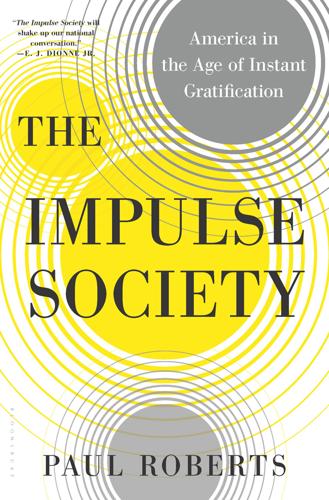
The Impulse Society: America in the Age of Instant Gratification
by
Paul Roberts
Published 1 Sep 2014
They began making long-term investments in their workforces (for example, offering extensive employee training so workers could keep pace with rapidly changing technology). Health care and benefits became increasingly common. More and more, large firms were coming to resemble private welfare states. Their executives and boards may not have bought into the rhetoric of corporate social responsibility from management gurus such as Peter Drucker, but as makers of products for consumers, companies seemed to have grasped that their own prosperity was inseparable from the prosperity of those consumers. When General Motors CEO Charles Wilson, nominated by President Eisenhower to be defense secretary, was asked during his Senate confirmation hearing whether he would be able to make policy decisions that might harm his former employer, Wilson said yes, but insisted that such a decision was unlikely to come up, since national interests and corporate interests were almost perfectly aligned.

Digital Bank: Strategies for Launching or Becoming a Digital Bank
by
Chris Skinner
Published 27 Aug 2013
The product originally came into existence as a result of a pilot we operated in Kenya with its original conception dating back to 2004 – 2005. Back then Nick Hughes, who worked in Vodafone Group’s Corporate and Social Responsibility Unit, was looking at how to pilot mobile telephone payments for social inclusion and microfinance. Being in Corporate Social Responsibility, it’s was difficult to get access to Vodafone’s product development engine, - which focused on more mainstream products. However Nick was able to get agreement that if he could secure external funding, the project would be supported. Nick had a conversation with the UK’s Department for International Development (DFID) and that led to an application for funding from a Challenge Fund The application was approved and was awarded £1m, which Vodafone matched in terms of manpower, staff and marketing materials, and that started the pilot in Kenya in 2006-2007.
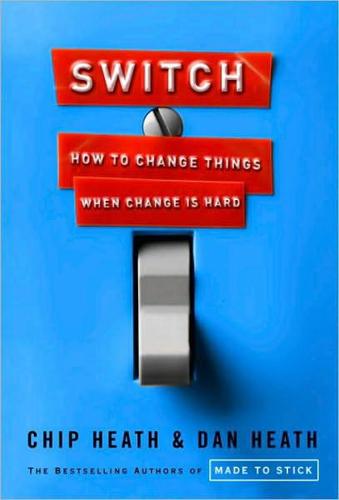
Switch: How to Change Things When Change Is Hard
by
Chip Heath
and
Dan Heath
Published 10 Feb 2010
The Vietnam story is compiled from various sources. An article by David Dorsey (December 2000), “Positive Deviant,” Fast Company, p. 42, first introduced popular audiences to Jerry and Monique Sternin’s work on positive deviance. Other details are from Jerry Sternin’s presentation at the Boston College Center for Corporate Social Responsibility in April 2008 and from interviews of Jerry Sternin by Chip Heath in March and April 2008 and of Monique Sternin in May 2009. “We were like orphans.” Most of the direct quotations in this section are from Dorsey, “Positive Deviant.” Bright spots. Sternin’s term for these outliers is positive deviants, which is based on a statistical analogy.
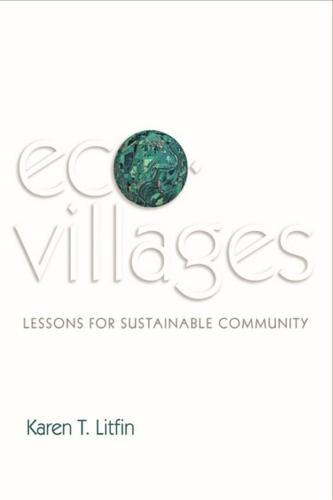
Ecovillages: Lessons for Sustainable Community
by
Karen T. Litfin
Published 16 Dec 2013
The response, as with the issue, is inevitably multifaceted and must come from a variety of sources. All told, the bottom line is that we need to find viable ways of living with one another and our home planet, changing some systems from within and restructuring others entirely. Some responses – corporate social responsibility, government subsidies for renewable energy, municipal recycling programs – offer tangible ways to work within the system. Personally, I’m inspired by responses that reinvent life from the ground up, and of these I’m most intrigued by the ecovillage. This is a gathering of individuals into a cohesive unit large enough to be self-contained – that’s why it’s a village – and dedicated to living by ecologically sound precepts.
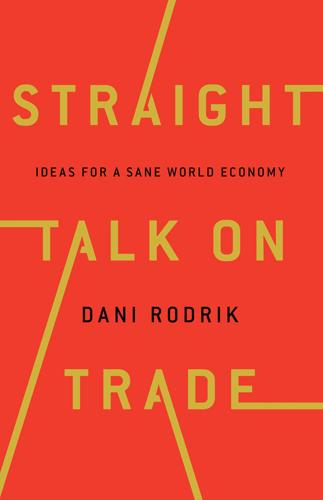
Straight Talk on Trade: Ideas for a Sane World Economy
by
Dani Rodrik
Published 8 Oct 2017
For policy officialdom, it refers to new intergovernmental forums, such as the Group of 20 and the Financial Stability Forum. For some analysts, it means the emergence of transnational networks of regulators setting common rules from sanitary to capital adequacy standards.14 For other analysts, it is “private governance” regimes, such as fair trade and corporate social responsibility.15 Yet others imagine the development of accountable global administrative processes that depend “on local debate, is informed by global comparisons, and works in a space of public reasons.”16 For many activists, it signifies greater power for international nongovernmental organizations.
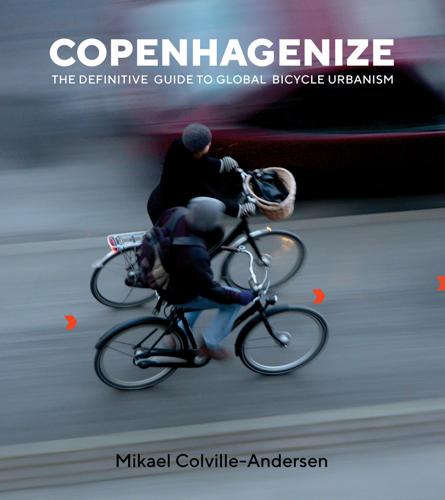
Copenhagenize: The Definitive Guide to Global Bicycle Urbanism
by
Mikael Colville-Andersen
Published 28 Mar 2018
Greater Copenhagen is served by the S-Train network—S-tog in Danish—and for many years passengers had to buy a reasonably priced bike ticket. In 2010, DSB decided to make bikes free on all their red S-Trains that transport people to and from the city from the far reaches of our urban sprawl. It was a bold move, but far from being an example of corporate social responsibility, it was simply a clever business model. They assumed correctly and rationally that bikes don’t travel alone, so by making it free, there were good odds of increasing the number of paying passengers. Boy, did they nail it. What started with inventive campaigns advertising the fact that bike tickets on the S-Trains would be eliminated—like placing a makeshift tunnel resembling a mock train compartment on the cycle track, complete with hot air heaters to warm cyclists, however briefly, on a cold December day—ended rather well for them.

Cobalt Red: How the Blood of the Congo Powers Our Lives
by
Siddharth Kara
Published 30 Jan 2023
Alex added that IDAK had international support for its efforts and received most of its funding from Deutsche Gesellschaft für Internationale Zusammenarbeit (“German Society for International Cooperation”), a consulting firm that advised the German government and corporations on sustainability and international development. “The funding was initiated by German car companies to help clean their cobalt supply chains,” Alex said. The IDAK team shared a copy of a comprehensive guide they published in 2014 that outlined their recommendations on corporate social responsibility in the Congolese mining sector. “This guide includes a plan for the removal of children from artisanal mining,” Mbuya explained. In addition to focusing on child labor, IDAK’s CSR plan described programs for strengthening local communities, building and staffing schools, promoting alternate livelihoods, and improving public health capacity and infrastructure.
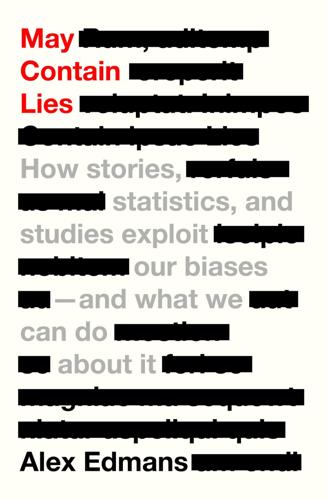
May Contain Lies: How Stories, Statistics, and Studies Exploit Our Biases—And What We Can Do About It
by
Alex Edmans
Published 13 May 2024
Deary (2006): ‘Effect of breast feeding on intelligence in children: prospective study, sibling pairs analysis, and meta-analysis’, British Medical Journal 333, 945. 5 EY (2022): ‘Press release: prioritizing emotions is the key to success for business transformation’, 28 June 2022. 6 Saïd Business School (2022): ‘Prioritising emotions is the key to success for business transformation, groundbreaking research finds’, 28 June 2022. 7 Travaglio, Marco et al. (2020): ‘Link between air pollution and Covid-19 in England’, Environmental Pollution 268, 115859. 8 Carrington, Damian (2020): ‘“Compelling” evidence air pollution worsens coronavirus – study’, Guardian, 13 July 2020. 9 Barton, Dominic, James Manyika and Sarah Keohane Williamson (2017): ‘Finally, evidence that managing for the long term pays off’, Harvard Business Review, 7 February 2017. 10 Edmans, Alex (2012): ‘The link between job satisfaction and firm value, with implications for corporate social responsibility’, Academy of Management Perspectives 26, 1–19. 11 Rambotti, Simone (2015): ‘Recalibrating the spirit level: an analysis of the interaction of income inequality and poverty and its effect on health’, Social Science & Medicine 139, 123–31. 12 Wei, Yuan et al. (2021): ‘Smoking cessation in late life is associated with increased risk of all-cause mortality amongst oldest old people: a community-based prospective cohort study’, Age and Ageing 50, 1298–1305. 7.
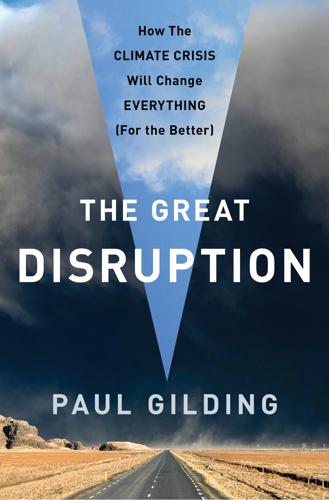
The Great Disruption: Why the Climate Crisis Will Bring on the End of Shopping and the Birth of a New World
by
Paul Gilding
Published 28 Mar 2011
Triodos Bank, started in the Netherlands in 1980, is a fine example, a pioneer of such approaches and one to watch. Their mission is all about social purpose: Triodos Bank finances companies, institutions and projects that add cultural value and benefit people and the environment, with the support of depositors and investors who want to encourage corporate social responsibility and a sustainable society. Triodos’s values and strategy run deep in this area, and they focus all their commercial activities on businesses and projects that have an overt social objective. Their mission continues, stating they seek to “help create a society that promotes people’s quality of life and that has human dignity at its core.”
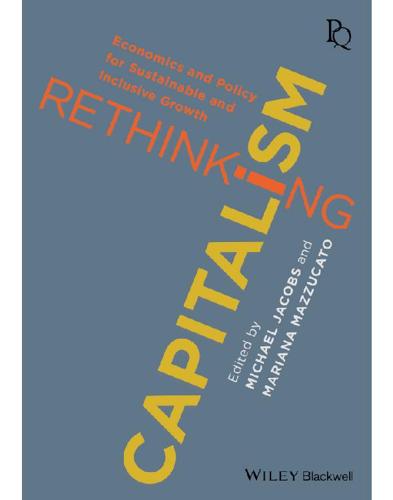
Rethinking Capitalism: Economics and Policy for Sustainable and Inclusive Growth
by
Michael Jacobs
and
Mariana Mazzucato
Published 31 Jul 2016
Other sources are then used in a supplementary way.26 For example, anti-anti-trust theory provided a justification for protecting market-dominating corporations from market-making competition law. New public management theory legitimates the abolition of boundaries between public officials and corporate personnel seen as so important to an earlier age of liberal economy. Corporate social responsibility gives business leaders a social legitimation going beyond their role as profit-maximisers and suggests that public policy is not needed to tackle many market failures. In the absence of Keynesian demand management, the widespread desire for a high level of employment gives priority to the policy preferences of business interests.
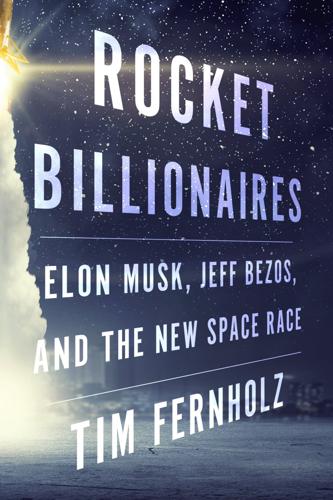
Rocket Billionaires: Elon Musk, Jeff Bezos, and the New Space Race
by
Tim Fernholz
Published 20 Mar 2018
But for right now, Amos-6 was a more straightforward way to boost internet access for markets in Africa. In booming metropolises like Lagos, Nigeria, and Nairobi, Kenya, broadband penetration was low, but people enthusiastically adopted mobile phones in their daily lives. Facebook’s effort to increase access was often pitched as philanthropy or corporate social responsibility, but there was real money at stake for the firm. Not just American but also European and Chinese companies were eager to win African consumers over to more data-intensive services—if the telecom infrastructure could be put in place. The preflight destruction of Amos-6 was a dent in Facebook founder Mark Zuckerberg’s hopes to make a splash serving internet from space.

Green and Prosperous Land: A Blueprint for Rescuing the British Countryside
by
Dieter Helm
Published 7 Mar 2019
The temptation for the Nature Fund management will be to go further and to borrow against its future revenues, as it is for government generally. This temptation will be given an extra gloss by pointing to the opportunity to issue green bonds. Buying the Nature Fund’s bonds will have two attractions for investors: they will be ‘green’, and hence good for corporate social responsibility accounting; and they will be ‘safe’ in that the revenues will be ultimately protected by government, which will either provide an explicit guarantee, or an implicit one because government will ultimately determine the legal framework under which the Fund receives its money. Despite the obvious attractions of green bonds, not least because they would add more firepower to the Nature Fund, there are reasons to be cautious.
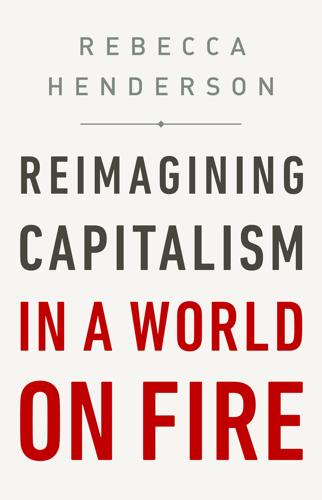
Reimagining Capitalism in a World on Fire
by
Rebecca Henderson
Published 27 Apr 2020
So-called Environmental, Social, and Governance (ESG) metrics are one possible solution to this problem.14 They have their origin in the 1980s, when a number of high-profile disasters, including the 1984 leak of toxic gas in Bhopal, India, that killed at least fifteen thousand people and injured many more and the 1990 Alaskan Exxon Valdez oil spill, led several NGOs to demand that firms disclose more information about the environmental and social effects of their operations.15 In response several firms began issuing corporate social responsibility reports. These early reports contained only very limited amounts of quantitative information. Shell’s 1998 offering, for example, consisted almost entirely of a chatty discussion of the firm’s “General Business Principles.” In 1999, the Coalition for Environmentally Responsible Economics (CERES) founded the Global Reporting Initiative (GRI), an organization devoted to standardizing sustainability reporting.16 The GRI issued its first set of guidelines in 2000, and by 2019, more than 80 percent of the world’s 250 largest corporations used its standards to report on their sustainability performance, and its database had more than thirty-two thousand reports on file.17 The GRI data are, however, of only limited use to investors.

The Hidden History of Burma
by
Thant Myint-U
There was even a new Burmese stock exchange, established in 2015. Over these few years, Thein Sein and Soe Thane personally met with every major potential investor and corporate CEO who came, from the heads of Google and General Electric to Samsung and Mitsubishi. Global capitalists felt welcome. There was much talk of corporate social responsibility, ending corruption, ensuring high labor standards, and protecting the environment. The government entered into the Extractive Industries Transparency Initiative that Bono had championed. In May 2013, the consulting firm McKinsey issued a breathtaking report, which stated that Burma had the ability to quadruple its GDP by 2030 if it could attract $650 billion in investment.
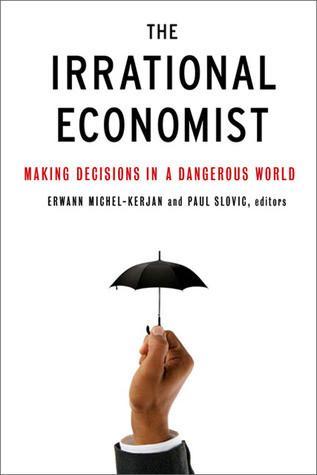
The Irrational Economist: Making Decisions in a Dangerous World
by
Erwann Michel-Kerjan
and
Paul Slovic
Published 5 Jan 2010
His current research ranges from decision theory under uncertainty to environmental economics, with a special focus on long-term effects. He has been a consultant for various industries and public institutions, on issues such as social security reforms, the economics of climate change, and corporate social responsibility. He has written and edited seven books on risk, including The Economics of Risk and Time (MIT Press, 2001), and was a lead author of the 2007 Report of the Intergovernmental Panel of Climate Change. Among many prizes and honors, Professor Gollier has received several awards, including that of Junior Member of the “Institut Universitaire de France,” the Paul A.
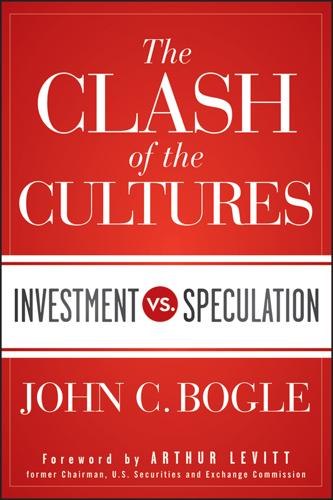
The Clash of the Cultures
by
John C. Bogle
Published 30 Jun 2012
During the next few years, we rounded out our index offerings, forming index funds to complete our participation in all nine Morningstar “style box” categories, namely: growth, value, and blended index funds for small-, mid-, and large-cap stocks. We formed more tax-managed index funds, along with a “social index” fund based on an external index of corporations said to honor the principles of “corporate social responsibility.” In 2004, we created index funds for the 10 industry segments of the S&P 500, including financial, health care, energy, and information technology. In 2006, recognizing the vital role of dividend income in shaping long-term stock market returns, we created two more index funds, one focused on dividend appreciation and one on high dividend yield.
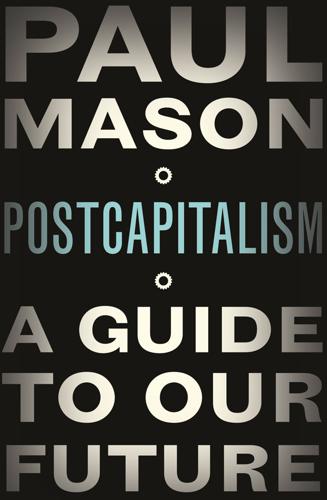
Postcapitalism: A Guide to Our Future
by
Paul Mason
Published 29 Jul 2015
We are no longer in a world of clearly delineated production and consumption, but one in which ideas, behaviours and customer interactions with the brand are critical to generating profit; production and consumption are blurred. This partly explains why struggles against the new capitalism are often focused on consumer issues, or brand values (e.g. corporate social responsibility), and why protesters behave more like the ‘tribes’ in marketing demographics than a unified proletariat. For cognitive capital theorists – as for Drucker – the primary activity of the new workforce is ‘the production of knowledge by means of knowledge’.51 However, the cognitive capitalism theory contains a major flaw.
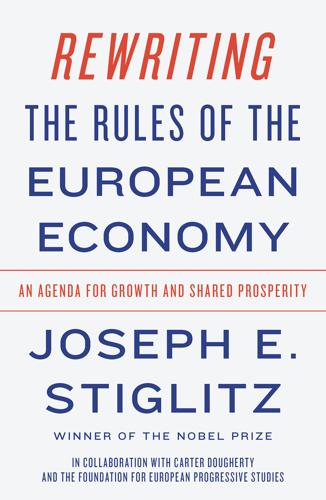
Rewriting the Rules of the European Economy: An Agenda for Growth and Shared Prosperity
by
Joseph E. Stiglitz
Published 28 Jan 2020
CEOs of multinationals who guide their companies in massive tax avoidance (for which Apple has become the poster child), and companies that flagrantly violate environmental protections (Volkswagen, now the parent company of Porsche, has become emblematic in this domain) illustrate actions where shareholder and societal interests differ. Companies may claim the mantle of corporate social responsibility, but the first responsibilities of any corporation are to pay its fair share of taxes and not despoil the environment. Too many companies thrive off public investments in infrastructure, education, and technology, but are not willing to pay back society. The view that firms should simply maximize shareholder value is of recent origin, often dated to the influence of Milton Friedman and his right-wing ideology of the 1970s and early 1980s, a time when there was a shift to the right on both sides of the Atlantic.
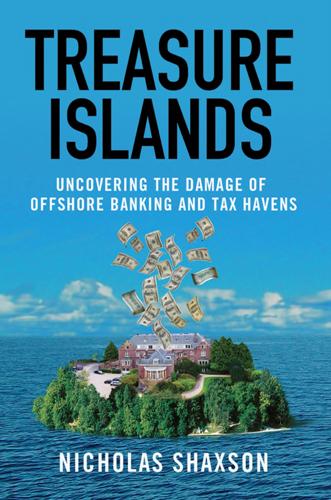
Treasure Islands: Uncovering the Damage of Offshore Banking and Tax Havens
by
Nicholas Shaxson
Published 11 Apr 2011
If Cyprus is ranked as the “best” in an international league table on tax, something is clearly wrong with the world. When transparency rankings list Switzerland and Singapore, two great sinks for illicit loot, as among the world’s “cleanest” jurisdictions, then we seem to have lost our way. Tax is the missing element in the corporate social responsibility debate. Modern company directors face a dilemma. To whom are they answerable—to shareholders only or to a wider set of stakeholders? There are no useful guidelines.54 Irresponsible players treat tax as a cost to be minimized, to boost short-term shareholder value alone. Ethical directors recognize that tax is not a cost of production but a distribution out of profits to stakeholders, ranking on the profit and loss account alongside dividends.

Naked City: The Death and Life of Authentic Urban Places
by
Sharon Zukin
Published 1 Dec 2009
All IKEA stores are big—the Red Hook store has almost 350,000 square feet—and each uses a warehouse design to cut labor costs and enhance shoppers’ feeling of getting bargains. Like WalMart and other big-box stores, IKEA depends on most customers providing their own transportation, usually by automobile, and driving their purchases home; for this reason IKEA branches, like other big-box stores, are surrounded by parking lots. The chain’s claim to show corporate social responsibility by encouraging sustainable forestry and forbidding the hiring of child labor stands in marked contrast to the environmental evils of traffic congestion and air pollution they are often accused of producing around their stores. Whether these conditions really harm residents’ quality of life or are just a screen for defending property values, they have sparked protests in many communities, including Red Hook, against IKEA’s plans to open stores.
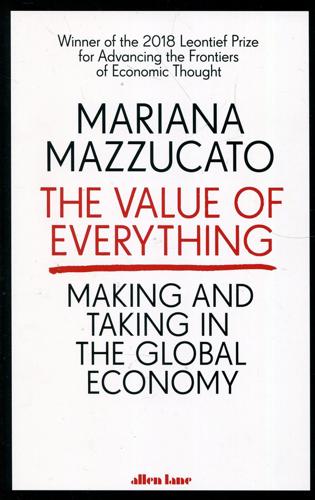
Value of Everything: An Antidote to Chaos The
by
Mariana Mazzucato
Published 25 Apr 2018
Some 1960s economists had viewed ‘managerialism' as potentially good for society, if bosses allowed profit to be eroded by paying better wages to employees, meeting higher environmental or health and safety standards and investing more in new products. Friedman reset the debate by suggesting that bosses were more likely to be sacrificing profit to their own expense accounts and luxury lifestyles; and that even letting costs rise through ‘corporate social responsibility' was fundamentally wrong. The piece spawned an academic literature that would become known as ‘agency theory'. Friedman's idea was developed further by the University of Chicago-trained Michael Jensen, who was steeped in its ‘free market' ideas. In 1976 Jensen, now a professor at the University of Rochester, wrote a paper with the Dean of Rochester's business school, William Meckling (who, like Jensen, was a student of Friedman at Chicago), on how to implement Friedman's idea.

New Laws of Robotics: Defending Human Expertise in the Age of AI
by
Frank Pasquale
Published 14 May 2020
Even in jurisdictions where such invasive surveillance would violate labor laws, enforcers are scarce and preoccupied by more immediate threats. Third-party auditors are no panacea either. They have failed repeatedly even in settings where law enforcement demanded strict scrutiny of corporate practices. In all the cases mentioned above, we need to do more than make vague commitments to corporate social responsibility and regulation. We need to structure communities of practice where workers are empowered to whistle-blow and to push back against abusive uses of technology (whether within or outside their firms). We need independent and well-funded regulatory bodies capable of enforcing clear rules.
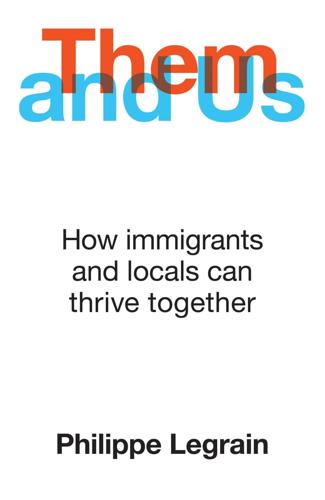
Them and Us: How Immigrants and Locals Can Thrive Together
by
Philippe Legrain
Published 14 Oct 2020
To capitalise on it, organisations need to change their culture, encourage communication and manage cultural differences. For a start, organisations need to truly value people’s diversity. Those that view hiring a diverse workforce as a legal obligation, a box-ticking exercise or as window dressing for corporate social responsibility are missing the point. To make the most of diversity, you have to do more than just pay lip service to it: you have to genuinely believe that it is good for your business and change your culture accordingly. You need to go out and hire the best people for your team and then make them feel welcome.
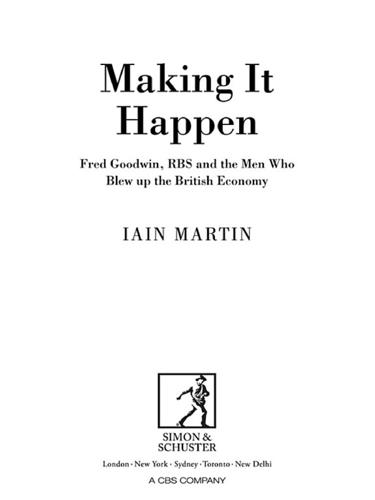
Making It Happen: Fred Goodwin, RBS and the Men Who Blew Up the British Economy
by
Iain Martin
Published 11 Sep 2013
Some of the older hands noticed that Goodwin seemed to have little interest in the basics of banking and concepts such as credit and risk. Instead, just as during his days at the Clydesdale Bank he often became most exercised when it came to footling matters. Following the death of her father, Lord Younger, Joanna Davidson joined the Royal Bank as head of corporate social responsibility. She confided in family and friends about how difficult she found it working for Goodwin, with his temper and tendency to meddle. When she took him a selection of designs for the company Christmas card he blew his top and said they were all terrible. That’s it, he declared. I’m taking over direct control of the production of the Christmas card.
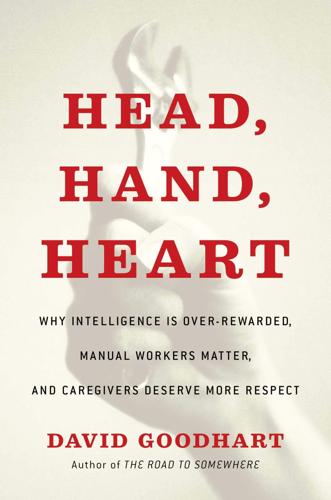
Head, Hand, Heart: Why Intelligence Is Over-Rewarded, Manual Workers Matter, and Caregivers Deserve More Respect
by
David Goodhart
Published 7 Sep 2020
Why not build on that experience and establish a version of the United Kingdom’s territorial army for health and adult care systems, a reserve army of people with some basic training who can step in to help during a crisis. This could even be extended to some noncrisis situations to help out in vital social services so long as the volunteer roles do not undermine proper paid employment. Corporate social responsibility programs could also usefully focus more on the local and on old people by encouraging staff to simply visit old people, read to them, shop for them, and take them out on trips. Teaching, especially at primary level, is at least as much a Heart as a Head job. I am struck by how many teachers I know talk about loving their kids (and sometimes finding them intolerable too).
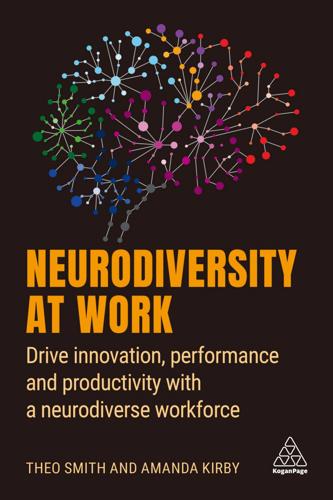
Neurodiversity at Work: Drive Innovation, Performance and Productivity With a Neurodiverse Workforce
by
Amanda Kirby
and
Theo Smith
Published 2 Aug 2021
Usually there are no specific entry or completion requirements for supported internships, and each learning provider will work with their interns and the organization to develop a personalized programme that meets their needs and provides progression.1 Gaining a precious place on any of the above schemes is still dependent on the organization understanding the needs of the individual in the context of the work being asked to be done and being motivated to put in place the additional support that may be required. It requires the organization working sometimes with outside agencies to help and guide them. This collaboration can be very helpful to achieve success. Funding for some schemes has been an incentive to take on placements and some companies have seen this as part of their corporate social responsibility. In this chapter you will hear some case studies of how organizations have set up schemes and gained from the experience and their reflections about this. Remember to think about ways to widen participation otherwise we tend to attract white, middle-class men to all these programmes (of course there is nothing wrong with white, middle-class men but it would be more inclusive to ensure equal chances for all to gain success).

The Equality Machine: Harnessing Digital Technology for a Brighter, More Inclusive Future
by
Orly Lobel
Published 17 Oct 2022
In 2018, Blind launched a #MeToo channel where workers can anonymously submit their experiences of workplace sexual harassment, sexism, wage disparity, and discrimination. Online reviews serve as an important source of discipline on companies, which have been shown to improve their practices in response to negative reviews. A 2021 study finds that after being reviewed online, firms improve their workplace practices, measured by corporate social responsibility scores on employee relations and diversity.9 Firms also increase disclosures about workplace practices after being reviewed. Blind is not alone in offering an outlet for workers to connect and share information about the work environment. Spot, which launched in 2018, is a web-based platform that uses AI to conduct interviews with employees alleging discrimination and harassment.
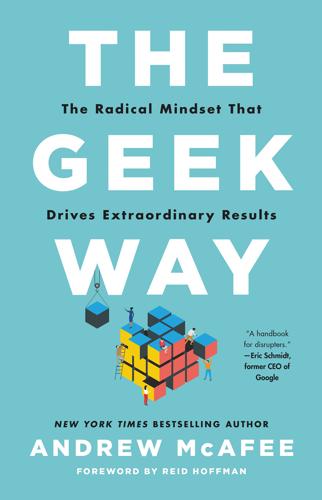
The Geek Way: The Radical Mindset That Drives Extraordinary Results
by
Andrew McAfee
Published 14 Nov 2023
My goal is narrower and simpler: to show that many geek companies are excellent performers, in large part because of the cultures they’ve created. They’ve demonstrated the ability to do the main thing that companies exist to do: profitably turn out offerings that customers value, and keep doing so over long periods of time. If you’re passionate about stakeholder capitalism; the environment; social and governance criteria; corporate social responsibility; diversity, equity, and inclusion; or any of the other movements seeking to reshape the business world, sustained, excellent performance will help you accomplish your aims. If you don’t like the power and influence of today’s largest geek companies I think you should study them particularly closely.
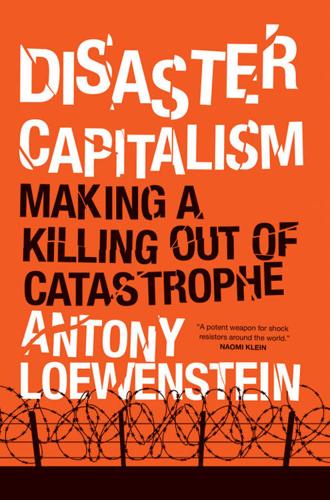
Disaster Capitalism: Making a Killing Out of Catastrophe
by
Antony Loewenstein
Published 1 Sep 2015
TomDispatch, January 27, 2015, at tomdispatch.com. 26“Golden Dawn Seeks ‘One-Party State,’” EnetEnglish, June 19, 2014, at enetenglish.gr. 27Andrew Higgins, “Far-right Fever for a Europe Tied to Russia,” New York Times, May 20, 2014. 28Richard Schwartz, “Greek Jews Laud Leftist Win—Despite Chilly Stance on Israel,” Forward, February 3, 2015. 29Helena Smith, “Greek Prime Minister Facing Resignation Calls after Aide’s Golden Dawn Gaffe,” Guardian, April 4, 2014. 30Peter Beaumont and Patrick Kingsley, Guardian, October 1, 2014. 31Belen Fernandez, “Detention in Malta: Europe’s Migrant Prison,” Al Jazeera English, May 18, 2014. 32Apostolis Fotiadis, “New Operation Could Hide Major Shift in Europe’s Immigration Control Policy,” Inter Press Service, September 6, 2014, at ipsnews.net. 33Apostolis Fotiadis, “Officials Turn Blind Eye to Abuse of Asylum Seekers,” Inter Press Service, March 16, 2013, at ipsnews.net. 34Danai Angeli, “Prolonged Detention of Migrants Is Not Just Inhumane and Illegal, It’s Also Futile,” Press Project, October 11, 2014, at thepressproject.net. 35Apostolis Fotiadis, “Europe Sending Armies to Stop Immigrants,” Inter Press Service, December 3, 2013, at ipsnews.net. 36Apostolis Fotiadis and Claudia Ciobanu, “Closing Europe’s Borders Becomes Big Business,” Inter Press Service, January 9, 2013, at ipsnews.net. 37Apostolis Fotiadis and Claudia Ciobanu, “People Pay for Research Against Migrants,” Inter Press Service, January 11, 2013, at ipsnews.net. 38Apostolis Fotiadis, “Drones May Track Migrants in EU,” Al Jazeera English, November 11, 2010. 39“Eurodrones Inc.,” TNI Peace and Security, February 5, 2014. 40In an attempt to demonstrate its corporate social responsibility, G4S financially assists the Athens charity Ark of the World, providing support to children and single mothers. 41Apostolis Fotiadis, “Cecilia Malmstrom and the Fiasco of Detention Centres for Immigrants and Migrants,” Press Project, October 20, 2014, at thepressproject.net. 42“Greece Tops Eurozone Poverty Rate,” EnetEnglish, July 24, 2014, at enetenglish.gr. 43Razmig Keucheyan, “The French Are Right: Tear Up Public Debt—Most of It Is Illegitimate Anyway,” Guardian, June 10, 2014. 44Howard Schneider, “An Amazing Mea Culpa from the IMF’s Chief Economist on Austerity,” Washington Post, January 3, 2013. 45Nikos Konstandaras, “As Greece Goes, So Goes Europe?”

The Looting Machine: Warlords, Oligarchs, Corporations, Smugglers, and the Theft of Africa's Wealth
by
Tom Burgis
Published 24 Mar 2015
The General’s militia was also indirectly given work cleaning up oil spills, he said, splitting the proceeds fifty-fifty with an official contractor.41 Under Shell’s Global Memoranda of Understanding, introduced in 2006 following unrest in the Delta that crippled its installations to replace ad hoc corporate social responsibility projects with a more comprehensive approach to mollifying resentment, representatives of each settlement where the company operates inform Shell of their priorities. The projects Shell funds range from town halls to printing presses and scholarships, with each contract worth between 12 million and 60 million naira (US$80,000 to $400,000).42 Shell says the programme ‘represents an important shift in approach, placing emphasis on more transparent and accountable processes, regular communication with the grassroots, sustainability, and conflict prevention.’43 Before I met the General, a Port Harcourt go-between, well connected to the militants and whom we shall call Arthur, explained to me how Farah Dagogo and a fellow militia boss, who borrowed his nom de guerre from the American rapper Busta Rhymes, had diverted some of Shell’s largesse to their own war chest.44 Shell would send liaison officers for consultations with the Delta’s inhabitants on the projects they wanted, Arthur told me.

The Job: The Future of Work in the Modern Era
by
Ellen Ruppel Shell
Published 22 Oct 2018
At the same time, the nation’s intense focus on wealth creation had undermined the essential human need to derive purpose and meaning from one’s efforts. Having learned back in college that business generates the vast bulk of the nation’s GDP—as much as 80 percent—he believed that business had an obligation to take the lead in cleaning up this mess. The first step, he decided, was to change the rules. For nearly a century, corporate social responsibility was subjugated to—and some argued legally trumped by—a fiduciary duty to make shareholders as much money as possible. This duty—later articulated by Milton Friedman—was first made law through the case of Dodge v. Ford Motor Company in 1919, in which Henry Ford was overturned in his effort to employ as many men as possible so as to spread prosperity (and presumably demand for his cars).

The Regency Revolution: Jane Austen, Napoleon, Lord Byron and the Making of the Modern World
by
Robert Morrison
Published 3 Jul 2019
He also launched sweeping economic reforms, saw to it that local people were trained to administer the smallpox vaccine, and introduced measures designed to ameliorate the plight of the island’s slave population. The government of Java, he believed, “should consider the inhabitants without reference to bare mercantile profits.” 38 Such views on what we would now call “corporate social responsibility” were far ahead of their time and put Raffles decidedly at odds with a trading company fixated on making money. He compounded his problems by pushing so hard to implement his radical reforms of the land tenure system that he lost important sources of government revenue. When the island’s paper currency began to depreciate, Raffles resorted to selling public lands without the proper authorization.
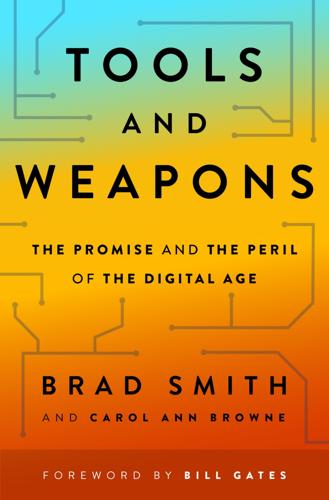
Tools and Weapons: The Promise and the Peril of the Digital Age
by
Brad Smith
and
Carol Ann Browne
Published 9 Sep 2019
(October 21, 1986), 18 U.S.C. Chapter 121 §§ 2701 et seq. Back to note reference 3. Electronic Communications Privacy Act of 1986, Public Law 99-508, 99th Cong., 2d sess. (October 21, 1986), 18 U.S.C. § 2705.b. Back to note reference 4. “Law Enforcement Requests Report,” Corporate Social Responsibility, Microsoft, last modified June 2018, https://www.microsoft.com/en-us/about/corporate-responsibility/lerr/. Back to note reference 5. “Charlie Hebdo Attack: Three Days of Terror,” BBC News, January 14, 2015, https://www.bbc.com/news/world-europe-30708237. Back to note reference 6.
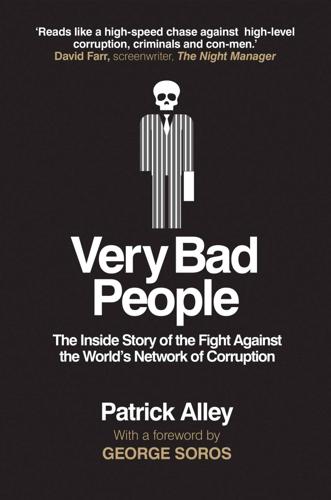
Very Bad People: The Inside Story of the Fight Against the World’s Network of Corruption
by
Patrick Alley
Published 17 Mar 2022
By coincidence Beppe Grillo, the leader of Italy’s Five Star Movement, was there and as we’re ejected, there’s a press throng outside in the park. Eni’s PR guy seemed to panic at the thought of a bunch of disgruntled NGOs with access to half the Italian press corps outside.’ And the PR guy rushed out. ‘He offered a meeting with their corporate social-responsibility people,’ Antonio said. ‘But Simon said no, we don’t spend time talking to CSR people – we need to talk to the legal counsel, the people in charge of the operation.’ Simon continued, ‘He then told us that we could come to the meeting but not ask a question because the share was not in order.
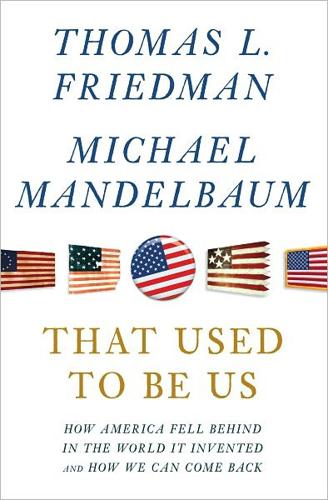
That Used to Be Us
by
Thomas L. Friedman
and
Michael Mandelbaum
Published 1 Sep 2011
When the senators from your childhood were the Democrats Hubert Humphrey, Walter Mondale, and Eugene McCarthy, your congressmen were the moderate Republicans Clark MacGregor and Bill Frenzel, and the leading corporations in your state—Dayton’s, Target, General Mills, and 3M—were pioneers in corporate social responsibility and believed that it was part of their mission to help build things like the Tyrone Guthrie Theater, you wound up with a deep conviction that politics really can work and that there is a viable political center in American life. I attended public school with the same group of kids from K through 12.

Blockchain Revolution: How the Technology Behind Bitcoin Is Changing Money, Business, and the World
by
Don Tapscott
and
Alex Tapscott
Published 9 May 2016
To them, “Integrity . . . on the part of individuals or organizations has enormous economic implications (for value, productivity, quality of life, etc.). Indeed, integrity is a factor of production as important as labor, capital, and technology.”29 Wall Street lost trust (and nearly killed capitalism) because of a set of integrity violations. But has it changed? And will it change? In the past, corporate social responsibility advocates argued that companies “do well by doing good.” We haven’t seen the evidence. Many companies did well by doing bad—by having bad labor practices in the developing world, by externalizing their costs onto society such as pollution, by being monopolies and gouging customers. The collapse of 2008 taught us for sure that companies “do badly by being bad.”
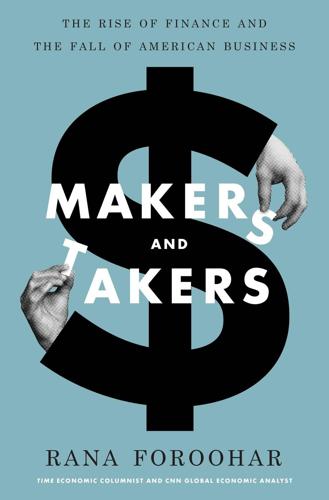
Makers and Takers: The Rise of Finance and the Fall of American Business
by
Rana Foroohar
Published 16 May 2016
(Imagine how medical schools might respond if 80 percent of doctors said they’d do long-term harm to patients in order to get paid immediately.) While there was a hope after the 2008 meltdown that business schools might lead the charge toward a new and more sustainable kind of capitalism, academic leaders in the field have been largely silent, their efforts focused mostly on more marginal issues like promoting more corporate social responsibility or diversity within boardrooms. A few years ago at the World Economic Forum in Davos, Switzerland, I interviewed Harvard Business School dean Nitin Nohria, who was at that point hoping to orchestrate a major post-financial-crisis shift in the MBA curriculum at Harvard. It’s been a slow process; the school is only just beginning to develop a curriculum that moves beyond efficiency theory and into more behavioral approaches to business.
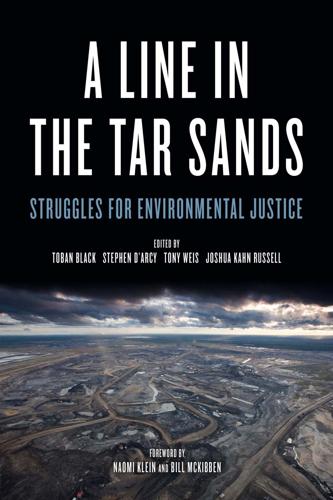
A Line in the Tar Sands: Struggles for Environmental Justice
by
Tony Weis
and
Joshua Kahn Russell
Published 14 Oct 2014
These and other adverse health impacts affecting frontline communities in the vicinity of the Athabasca tar sands are documented in a report produced by the Sierra Club. See Gabriel DeRita and Tom Valtin, Toxic Tar Sands: Profiles from the Front Lines (2010). 3. World Health Organization, “Asphalt (Bitumen),” 2004, www.who.int/ipcs/publications/cicad/cicad59_rev_1.pdf. 4. See Enbridge’s Environmental, Health and Safety and Corporate Social Responsibility Reports: csr.enbridge.com. 5. Statistics regarding the number of recent immigrants in Toronto census tracts are available from Stuart Thompson of York University. See Anna Mehler Paperny, “Interactive Map: Explore the data behind Toronto’s working poor,” The Globe and Mail, February 10, 2012, www.theglobeandmail.com/news/toronto/interactive-map-explore-the-data-behind-torontos-working-poor/article545650/. 6.

Worn: A People's History of Clothing
by
Sofi Thanhauser
Published 25 Jan 2022
In the wake of the collapse, momentum was great enough to lead to the May 2013 Accord on Fire and Building Safety, currently signed by more than 150 global brands and retailers, by the powerful Bangladesh Garment Manufacturers and Exporters Association, and by two international union federations, IndustriALL and UNI. The accord was the product of a multiyear series of negotiations that only reached resolution in the immediate wake of the collapse in Rana Plaza. The accord rejected the voluntary Corporate Social Responsibility codes of conduct model and demanded, rather, that all signatories sign contracts that ensured joint financial responsibility between Bangladeshi manufacturers and the global brands and retailers that use them. Just like the contracts that the International Ladies’ Garment Workers’ Union had jointly signed with jobbers and manufacturers, ensuring that the former could not shunt responsibility for worker conditions to the latter, these were legally binding obligations.

AI 2041: Ten Visions for Our Future
by
Kai-Fu Lee
and
Qiufan Chen
Published 13 Sep 2021
All of these ideas require more AI research on complex objective functions, and also ways to quantify notions like “time well spent,” “fairness,” or “happiness.” Furthermore, each of these ideas would cause companies to make less money. So how can companies be incentivized to do the right thing? One possibility is to have government regulations that penalize offenders. Another is to encourage positive behavior as a part of corporate social responsibility, such as ESG (environmental, social, and corporate governance). ESG is gaining traction in some business circles, and it is possible that responsible AI could be a part of the future ESG. Another idea is for third parties that can serve as watchdogs by creating dashboards for companies’ performance, tracking metrics like rates of “fake news” generated or “lawsuits filed alleging discrimination” to pressure them to incorporate pro-user metrics.

People, Power, and Profits: Progressive Capitalism for an Age of Discontent
by
Joseph E. Stiglitz
Published 22 Apr 2019
Here, as in the earlier example of tax avoidance we described as Apple shifted profits to Ireland, there was a total absence of a corporate conscience: Though its own growth rested on technologies developed or financed by the US government, Apple, like the banks, was willing to take but not to give, even as it made a huge pretense of corporate responsibility. To me, the first element of corporate social responsibility is to pay your taxes. More disintermediation Even beyond failing to perform its traditional role of intermediation, bringing money from the household sector to the corporate sector, the financial sector today is doing just the opposite, taking money from the corporate sector and bringing it to the household sector, so the rich can enjoy more of their wealth now.
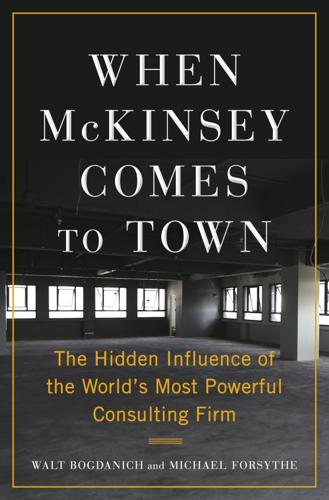
When McKinsey Comes to Town: The Hidden Influence of the World's Most Powerful Consulting Firm
by
Walt Bogdanich
and
Michael Forsythe
Published 3 Oct 2022
That’s the critique offered by Anand Giridharadas, a former McKinsey consultant and a former Aspen fellow. In a 2015 speech to his fellow fellows, he questioned the entire premise of the organization, saying it makes the rich and powerful feel virtuous about the incremental good deeds their companies do under the banner of “corporate social responsibility” while their core businesses continue to inflict harm. Giridharadas called it “the Aspen Consensus,” a belief that “the winners of our age must be challenged to do more good.” But there was a caveat, he said. “Never, ever tell them to do less harm. The Aspen Consensus holds that capitalism’s rough edges must be sanded down and its surplus fruit shared, but the underlying system must never be questioned
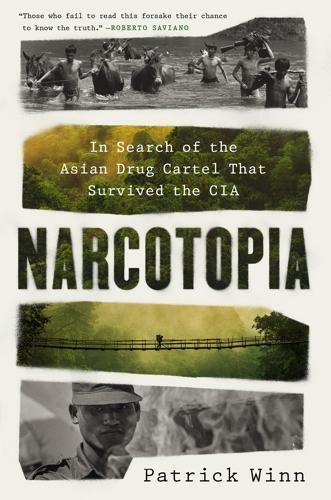
Narcotopia
by
Patrick Winn
Published 30 Jan 2024
Too many soldiers drink to excess, and gambling is rampant. Poor discipline threatens our efficiency. The Wa cannot simply live to fight, he said. Our southern region must also feed the elderly and educate children. But Wei only gave public service a cursory mention—a throwaway nod to corporate social responsibility—before turning to the subject overshadowing all others. “You’ve all heard the UWSA is getting out of the opium business. I know what you’re thinking. Sometimes we lay down rules with no intention of enforcement. But this time, it’s serious.” Wa State will criminalize opium, he said. Not tomorrow.
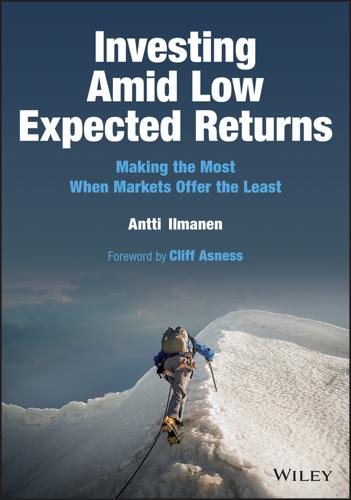
Investing Amid Low Expected Returns: Making the Most When Markets Offer the Least
by
Antti Ilmanen
Published 24 Feb 2022
All these assets do not focus on ESG, but by any measure the asset growth has been phenomenal. Climate change concerns have been a game-changer. ESG investing is an umbrella term that various people may interpret very differently. Even the umbrella term is debated, as ESG is almost interchangeably called responsible or sustainable or impact investing, or corporate social responsibility. Possible approaches range from excluding sinful companies to actively engaging with the same companies to change their behavior. In most cases, investments are evaluated not just on financial considerations but also through the ESG lens. While some aspects of ESG may also enrich expected return or risk forecasts and improve a portfolio's risk/return trade-off, many ESG-sensitive investors will choose to have “more ESG” in their process than would be optimal for strictly financial reasons.
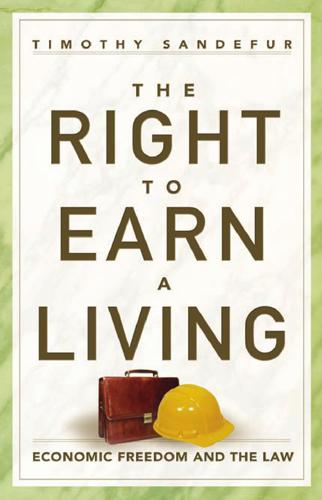
The Right to Earn a Living: Economic Freedom and the Law
by
Timothy Sandefur
Published 16 Aug 2010
Coryell, 40–41 Cornwell, Jo Ann, 147–48 corporation, evolution, xvi, 17 general incorporation laws, 28–29 monopolistic corporate charters, 27–29 17th and 18th century, 26–29 19th century, 27–31, 48–49 see also monopoly, evolution corporations archaic vision of, 31–37 benefits of, 36–37 corporate charters, 27–31, 70–75 corporate privileges, 33–35 as creatures of the state, 29, 32–33 definition changes, 26–29, 37 Friedman on corporate social responsibility, 35 marriage analogy, 29 as monopolies, 29–31 as “persons,” 34–35 pooled resources, 35, 36 present-day antitrust laws, 50–55 protection from social legislation, 5–6 stakeholder theory and stakeholders, 35–36 see also monopolies Court of Federal Claims, raisin case and, 168–69 Craigmiles v.
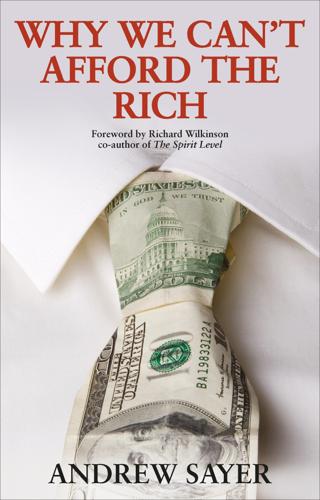
Why We Can't Afford the Rich
by
Andrew Sayer
Published 6 Nov 2014
It’s what I would call ‘conscience laundering’ – feeling better about accumulating more than any one person could possibly need to live on by sprinkling a little around as an act of charity.130 And having one’s name or company brand attached to a good cause is good public relations; you don’t even have to declare how much you’ve given; for companies it buys an aura of ‘corporate social responsibility’. At the annual World Economic Forum in Davos, the super-rich gather to be seen at the sessions on philanthropy, and bathe in the glow of benevolence. Philanthropists don’t just want to give money and allow the recipients to use it as they see fit; they want to have some control over how it’s used, because, let’s face it, the rich, being so clever and successful, know best.

Connectography: Mapping the Future of Global Civilization
by
Parag Khanna
Published 18 Apr 2016
John Gattorna, author of Dynamic Supply Chains, believes the very concept of supply chains should be renamed “value networks” for the widespread benefits they bring, such as adapting essential products to the price points of local markets, building infrastructure that benefits small businesses, and training and educating local workers. Stanford Business School’s Value Chain Innovation Initiative manages a growing library around the social, environmental, and other positive impacts of modifying supply chain management. *2 As the reputation-building guru Simon Anholt explains, companies initially sign up for corporate social responsibility projects for cynical reasons—buttressing their image—but eventually they realize that doing good is how to improve their image. Anholt calls this the “loophole in human nature.” *3 Ashoka, the pioneering social enterprise organization, has launched the Hybrid Value Chain initiative to support businesses that deliver health care and housing to disenfranchised people and offer them “full economic citizenship

Your Computer Is on Fire
by
Thomas S. Mullaney
,
Benjamin Peters
,
Mar Hicks
and
Kavita Philip
Published 9 Mar 2021
Therefore, it is impossible to view a network from any single perspective. Instead, we insist on seeing too much in their network designs. By believing that we embed values into the universal design of networks, we wrongly attribute explanatory power to such design values. An analogy obtains in corporate social responsibility. As media and organization scholar Siva Vaidhyanathan points out, blue-chip corporations have come to embed lofty values directly into their mission statement and operations in order to make a positive difference in the world while also gaining internal and public buy-in for their brand.
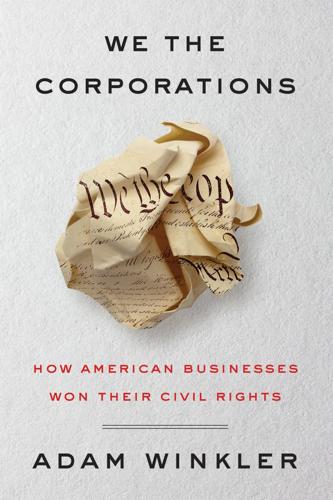
We the Corporations: How American Businesses Won Their Civil Rights
by
Adam Winkler
Published 27 Feb 2018
The economist Milton Friedman captured this view of the corporation in the title of a well-known article he wrote for the New York Times Magazine in 1970: “The Social Responsibility of Business Is to Increase Its Profits.” Of course corporations can take measures that also benefit other stakeholders, yet the majority view is that such activity must ultimately be in the long-term interests of the company and its stockholders. Genuine corporate social responsibility—done purely to serve employees, customers, or society, at the long-term expense of stockholders—would be a breach of management’s fiduciary duties.29 This principle of “shareholder wealth maximization” has become deeply engrained in America’s corporate culture. Critics, however, blame this one-dimensional—some say “pathological”—view of the corporation for any number of corporate misdeeds, from the Deepwater Horizon oil spill of 2010, which was linked to safety shortcuts taken to prop up share prices, to Enron’s accounting fraud, done to hide debt from investors.
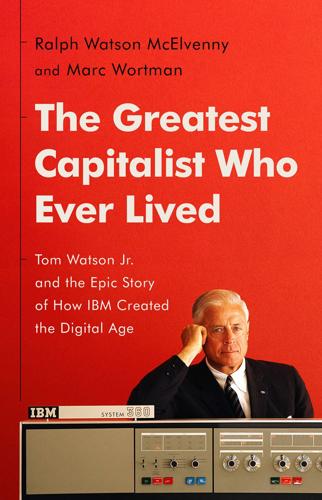
The Greatest Capitalist Who Ever Lived: Tom Watson Jr. And the Epic Story of How IBM Created the Digital Age
by
Ralph Watson McElvenny
and
Marc Wortman
Published 14 Oct 2023
In September 1964, Johnson awarded Watson the Presidential Medal of Freedom, the highest award a US president can bestow upon a civilian.43 In presenting the honor, Johnson called him “a business statesman who combined distinction in private life with a cheerful acceptance of countless public duties placed on him by a grateful government.”44 Watson advocated for improved social welfare programs and public and private investment in impoverished inner cities. As an example of what he called “corporate social responsibility,” after discussions with New York senator Robert Kennedy, he built an IBM plant in the Bedford-Stuyvesant neighborhood of Brooklyn, then predominantly poor and Black. Watson was a member of the board for a program Kennedy helped set up to boost opportunities for local residents. The computer-cable factory employed about four hundred people, among them a large percentage who were previously unemployed.

The WikiLeaks Files: The World According to US Empire
by
Wikileaks
Published 24 Aug 2015
. … From posts’ perspectives, there are six main areas of action for the USG as it seeks to limit Chavez’s influence: •Know the enemy: We have to better understand how Chavez thinks and what he intends; •Directly engage: We must reassert our presence in the region, and engage broadly, especially with the “non-elites”; •Change the political landscape: We should offer a vision of hope and back it up with adequately-funded programs; •Enhance military relationships: We should continue to strengthen ties to those military leaders in the region who share our concern over Chavez; •Play to our strength: We must emphasize that democracy, and a free trade approach that includes corporate social responsibility, provides lasting solutions; •Get the message out: Public diplomacy is key; this is a battle of ideas and visions. Septel provides detailed suggestions. [07ASUNCION396] A second follow-up cable goes further into the specifics of how to keep Venezuela from deepening its relations with the countries of South America’s southern cone.

Thank You for Being Late: An Optimist's Guide to Thriving in the Age of Accelerations
by
Thomas L. Friedman
Published 22 Nov 2016
I also grew up in a time and place where politics, though still partisan, worked, where, at the end of the day, the two major parties and community leaders collaborated and forged compromises to do big, hard things together. I grew up in a time and place where big businesses helped to pioneer corporate social responsibility by donating 5 percent of their gross revenues to the arts and education. I grew up in a time and place where my parents bought their first house on the GI Bill, thanks to my mother’s service in the U.S. Navy during World War II, where my dad never made more than twenty thousand dollars a year before he died in 1973, but where we still could afford to belong to a local golf club and just about all my friends lived in the same size rambler house as we did, went with me all the way through the same public school system, and drove the same kinds of cars—and if anyone was richer than anyone else, it didn’t seem to make that much difference.
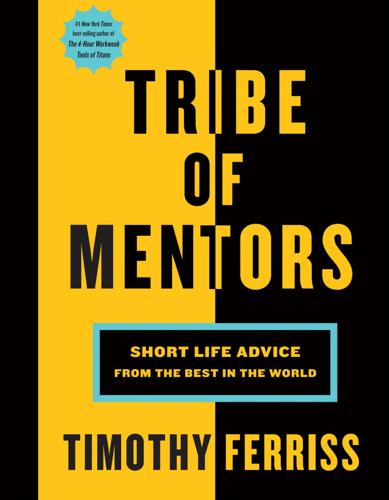
Tribe of Mentors: Short Life Advice From the Best in the World
by
Timothy Ferriss
Published 14 Jun 2017
“Everything you want is on the other side of fear.” Stephanie McMahon TW: @StephMcMahon FB: /stephmcmahonWWE corporate.wwe.com STEPHANIE McMAHON is the chief brand officer of World Wrestling Entertainment, Inc. (WWE) and is the organization’s global brand ambassador. She is the primary spokesperson for WWE’s corporate social responsibility initiatives, including the Special Olympics, Susan G. Komen for the Cure, and Be a STAR, WWE’s anti-bullying program. In 2014, Stephanie and her husband, Paul “Triple H” Levesque, established Connor’s Cure, a fund dedicated to fighting pediatric cancer. Stephanie appears regularly on WWE’s flagship programming as a personality.

This Is Service Design Doing: Applying Service Design Thinking in the Real World: A Practitioners' Handbook
by
Marc Stickdorn
,
Markus Edgar Hormess
,
Adam Lawrence
and
Jakob Schneider
Published 12 Jan 2018
Besides everyday work on design projects with clients, Johan is responsible for the art and practice of service design at Doberman as a design firm. JOUB MIRADORA — CHIEF DIGITAL OFFICER, SUN LIFE FINANCIAL PHILIPPINES Joub is the Chief Digital Officer of Sun Life Financial in the Philippines. He is a change maker and thought leader with 15 years of experience in strategic marketing, customer insights, corporate strategy, and corporate social responsibility in the fast-moving consumer goods and financial services sectors. JÜRGEN TANGHE — DIRECTOR, LIVEWORK BELGIUM Jürgen is Director at Livework studio. He specializes in service innovation and transforming organizations. Jürgen is also a faculty member at the Delft University of Technology, where he researches and teaches on service transformation through design.

Power and Progress: Our Thousand-Year Struggle Over Technology and Prosperity
by
Daron Acemoglu
and
Simon Johnson
Published 15 May 2023
Marcus, Gary, and Ernest Davis. 2020. “GPT-3, Bloviator: OpenAI’s Language Generator Has No Idea What It’s Talking About.” MIT Technology Review, August 22. Marcus, Steven. 1974 [2015]. Engels, Manchester, and the Working Class. Routledge: London. Marens, Richard. 2011. “We Don’t Need You Anymore: Corporate Social Responsibilities, Executive Class Interests, and Solving Mizruchi and Hirschman’s Paradox.” https://heinonline.org/HOL/Page?handle=hein.journals/sealr35&id=1215&collection=journals&index. Markoff, John. 2012. “Seeking a Better Way to Find Web Images.” New York Times, November 19. www.nytimes.com/2012/11/20/science/for-web-images-creating-new-technology-to-seek-and-find.html.
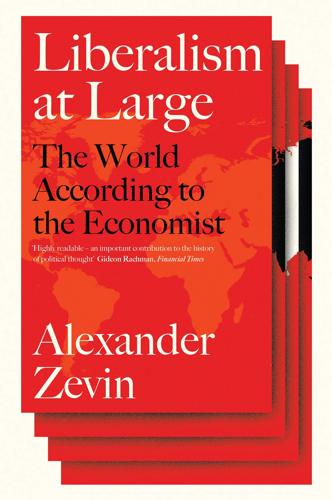
Liberalism at Large: The World According to the Economist
by
Alex Zevin
Published 12 Nov 2019
All efforts since then to put limits on companies was misguided: the 1991 US Civil Rights Act resulted in ‘more red tape and more lawsuits’ and the 2002 Sarbanes-Oxley legislation that set tougher rules on corporate auditing, accounting and reporting was an ‘overreaction’ to fraud at Enron, Tyco and WorldCom.87 They even decried calls for corporate social responsibility from corporations. For ‘in general, companies have become more ethical: more honest, more humane, more socially responsible’. From Quaker candy makers to Hewlett-Packard, from IBM to Johnson & Johnson, ‘they pillage the Third World less than they used to, and they offer more opportunities to women and minorities’, especially compared to before, ‘when the initials of the Royal African Company were branded on the chests of thousands of slaves’.88 The Right Nation and God Is Back were more substantial, unearthing positive elements for their cosmocratic liberalism, albeit from two unlikely sources.
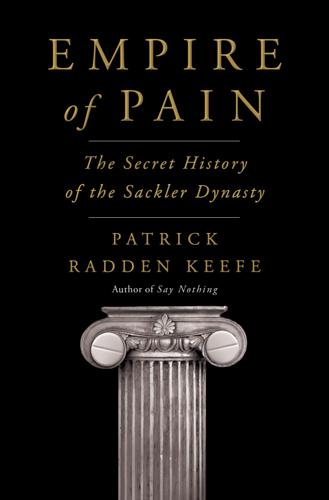
Empire of Pain: The Secret History of the Sackler Dynasty
by
Patrick Radden Keefe
Published 12 Apr 2021
” * * * The spokesman was at pains not to mention any names, but the owners he was referring to were the Sacklers. If this were a different company, or a different family, there might have been some lip service to prevailing notions of where the buck stops or the finer points of corporate social responsibility, or even just an expression of sympathy for the dead. But the Sacklers assiduously distanced themselves not just from any sense of responsibility for the tragedy but from any connection to it whatsoever. The family issued no apologies or condolences. They appeared at no funerals. They made no public statements whatsoever.
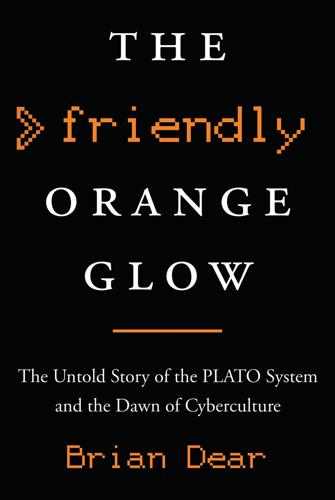
The Friendly Orange Glow: The Untold Story of the PLATO System and the Dawn of Cyberculture
by
Brian Dear
Published 14 Jun 2017
Low Tech Education in a High Tech World. New York: The Free Press, 1986. Vallee, J. The Heart of the Internet: An Insider’s View of the Origin and Promise of the On-Line Revolution. Charlottesville, VA: Hampton Roads Publishing, 2003. Van Meer, E. “PLATO: From Computer-Based Education to Corporate Social Responsibility.” Iterations: An Interdisciplinary Journal of Software History 2, 2003. Vinge, V. True Names…and Other Dangers. New York: Baen Books, 1987. Watanabe, N. “PLATO Days: Remembering Those Strange Orange Dots.” Unpublished essay, 2003. Watson, J. B. Behaviorism. New York: People’s Institute Publishing Company, 1924.
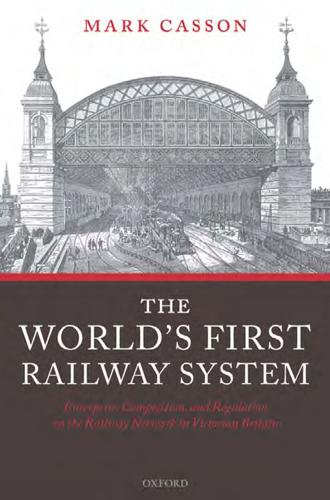
The World's First Railway System: Enterprise, Competition, and Regulation on the Railway Network in Victorian Britain
by
Mark Casson
Published 14 Jul 2009
R. 367 Clitheroe as secondary natural hub 83 Tab 3.4 Clyde River 199 Clyde Valley 156 coal industry 1, 50 exports 5 see also regional coalfields coal traffic 53, 182–3, 270 coalfield railways 127, 167 Coalville 187 Coatbridge 157 Cobden, Richard 37 Cockermouth 219 Colchester 69, 107, 108 Coldstream 158, 159 Colebrook 198 Colonial Office, British 48 Combe Down Tunnel 144 commerce, industry and railways 308 Index Commercial Railway Scheme, London 152, 154 Commission on the Merits of the Broad and Narrow Gauge 228 Tab 6.2 company law 42–3 competing local feeders 204–7 competition adverse effects of 221 adversarial 316–19 concept applied to railways 258–60 Duopolistic on networks 492–4 and duplication of routes 94 and excess capacity 477–97 excessive 16–19 and fare reduction 261–2 individual/multiple linkages 266, 267 inter-town 323–4 and invasions by competing companies 268–9, 273 and invasions in joint venture schemes (large) 166–73 and invasions in joint venture schemes (small) 173–8 network effects 262–4 principle of 221 and territorial strategy 286–7 wastage/inefficiency 162, 166 compulsory purchase of land 30, 223, 288 concavity principle 72, 82 connectivity and networks 2–3 Connel Ferry 161 construction costs 16–17 consultant engineers see civil engineers; mechanical engineers contour principle 72 contractors 301–2 Conway River 136 cooperation between companies 324–6 core and peripheral areas, UK 85 Fig 3.8 Corn Laws, Repeal (1846) 37, 110 Cornwall 152 Cornwall Railway 141 corporate social responsibility 311–13 corridor trains 311 Cosham 147, 190 Cotswold Hills 110, 111, 114, 149 counterfactual map of the railway network East Midlands 90 Fig 3.10 North of England 92 Fig 3.12 South East England 90 Fig 3.10 Wales 91 Fig 3.11 West of England 91 Fig 3.11 counterfactual railway network 4–29, 58–104 bypass principle 80–2, 89 and cities 306 concavity principle 82 continuous linear trunk network with coastal constraints 74 Fig 3.2 503 continuous linear trunk network with no coastal constraints 73 Fig 3.1 contour principle 87, 88 Fig 3.9 core and periphery principle 82–6, 84 Tab 3.5, 85 Fig 3.8 coverage of cities, town and villages 62–3 cross-country linkages on the symmetric network 100 Fig 3.19 cross-country routes 274 cut-off principle 80, 81 Fig 3.7, 89 cut-off principle with traffic weighting 81 Fig 3.7 Darlington core hub 89 Derby core hub 89 frequency of service 65–6 Gloucester as corner hub 82 heuristic principles of 10–12, 71–2 hubs 439–71, 440–9 Tab A5.1 hubs, configuration of 89, 94–103 hubs, size and distribution 95 Fig 3.13 Huddersfield core hub 89 influence of valleys and mountains 88 Fig 3.9 iterative process 64 Kirkby Lonsdale core hub 89 Leicester core hub 89 Lincolnshire region cross-country routes 119 London as corner hub 82 London terminals 155 loop principle 86–7 Melrose core hub 89, 158–9 mileage 437 Tab A4.4 Newcastle as corner hub 82 North-South linkages 148 North-South spine with ribs 75 Fig 3.3 objections to 12–14 optimality of the system 91–3 performance compared to actual system 64–5, 65 Tab 3.2 performance metrics 63–6 quality of network 392 Tab A4.1 and rational principles 322 Reading core hub 89 role of network 392, 393 Tab A4.2 route description 392–438, 393–436 Tab A4.3 and Severn Tunnel 112–14 Shoreham as corner hub 82 Southampton as corner hub 82 space-filling principle 87–9 Steiner solution 76 Fig 3.4 Steiner solution with traffic weighting 78 Fig 3.5 Stoke-on-Trent as corner hub 89 timetable 8, 89–90, 472–6, 474–6 Tab A6.1 timetable compared with actual 315–16 504 Index counterfactual railway network (cont.) traffic flows 66–71 traffic-weighting principle 77, 78 Fig 3.5 trial solution, first 89–91, 90 Fig 3.10, 91 Fig 3.11, 92 Fig 3.12 triangle principle 77–80, 79 Fig 3.6, 89, 96 triangle principle without traffic weighting 79 Fig 3.6 Trowbridge core hub 89 Warrington as corner hub 82 Wetherby core hub 122 country towns avoided by railway schemes 307–9 Coventry 68, 118, 135 Coventry Canal 117 Crafts, Nicholas F.
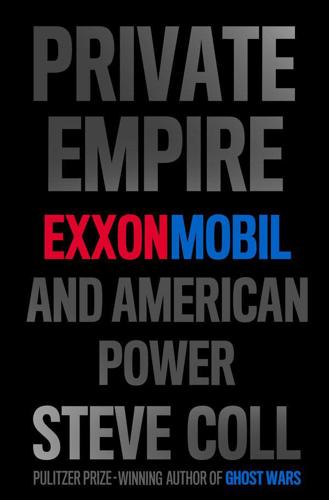
Private Empire: ExxonMobil and American Power
by
Steve Coll
Published 30 Apr 2012
The idea that such corporations had a legal or moral duty to refrain from facilitating organized violence in their areas of operations was more recent. During the nineteenth century, Quaker ethical movements and antislavery campaigners in the United States and Great Britain, among other places, presaged the ideas that were lumped, toward the end of the twentieth century, under the rubric of “corporate social responsibility.” The 1970s brought an expansion of popular and political campaigns to codify corporate conduct for the sake of the public interest. By 2001, reports of human rights abuses carried out by military forces protecting oil and gas operations in Colombia and Nigeria—as well as the questions raised about Mobil’s complicity in Aceh’s violence—had given birth to a formal compact, the Voluntary Principles on Security and Human Rights, cosponsored by the Clinton administration and Tony Blair’s Labor Party–led government in Great Britain.

Behave: The Biology of Humans at Our Best and Worst
by
Robert M. Sapolsky
Published 1 May 2017
Were charged the original price, knowing that the company gave X percent of earnings to charity; sales increased, but less than X percent, and the store lost money. Could pay whatever they wanted, with half of that going to a charity. This boosted both sales and the price voluntarily paid, yielding profits for the store and a large charitable contribution. In other words, while evidence of corporate social responsibility (scenario C) boosts sales a bit, it’s far more effective when the individual and the business share social responsibility and the individual determines the amount of money donated. Choosing Your Partner As we’ve seen, cooperators outcompete more numerous noncooperators to the extent that the former can find one another.
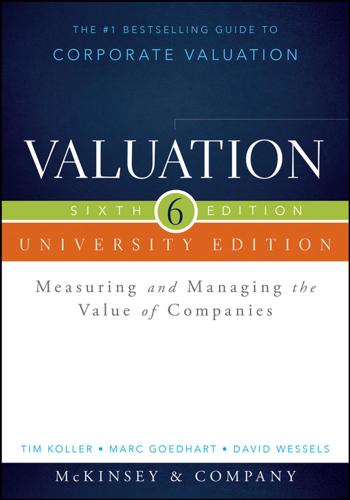
Valuation: Measuring and Managing the Value of Companies
by
Tim Koller
,
McKinsey
,
Company Inc.
,
Marc Goedhart
,
David Wessels
,
Barbara Schwimmer
and
Franziska Manoury
Published 16 Aug 2015
We would go even further. We believe that companies dedicated to value creation are healthier and more robust—and that investing for sustainable growth also builds stronger economies, higher living standards, and more opportunities for individuals. Our research shows, for example, that many corporate social-responsibility initiatives also create shareholder value, and that managers should seek out such opportunities.5 For example, IBM’s free Webbased resources on business management not only help to build small and midsize enterprises; they also improve IBM’s reputation and relationships in new markets and develop relationships with potential customers.